Istanbul Bosphorus tour departure: Galataport
Explore the historical richness and iconic landmarks of the Beyoglu, then join us for an unforgettable Bosphorus cruise amidst the mesmerizing views of Istanbul.
Explore what this itinerary offers!
Galataport, a lively harbor district with diverse cultural hubs, shops, and delicious dining spots, nestled along the Karaköy coastline, creates a cozy and inviting atmosphere. Now, starting from the Galataport, we embark on a unique journey through one of the most beautiful straits in the world, separating the Asian and European continents. Today, we are here to take you on an extraordinary Istanbul experience. Are you ready to explore many landmarks, from historical monuments to bridges, dazzling palaces to fortresses, mansions to groves, in the enchanting atmosphere of the Bosphorus?
To ensure your safety and comfort, please note that our tour program will be revised accordingly in case of adverse weather or exceptional circumstances. Let's embark on this journey together to create unforgettable memories and share this magical experience! Welcome aboard!
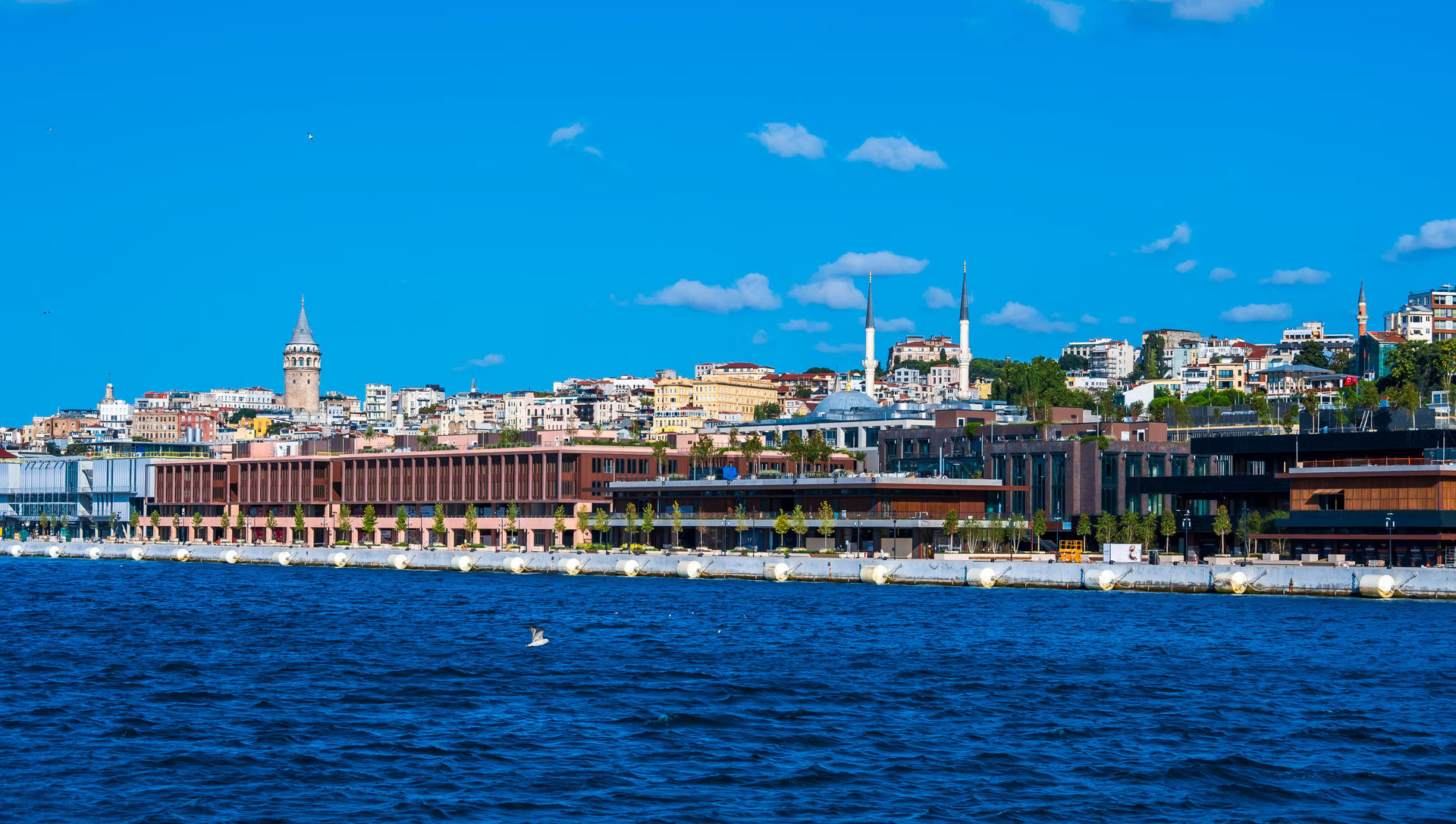
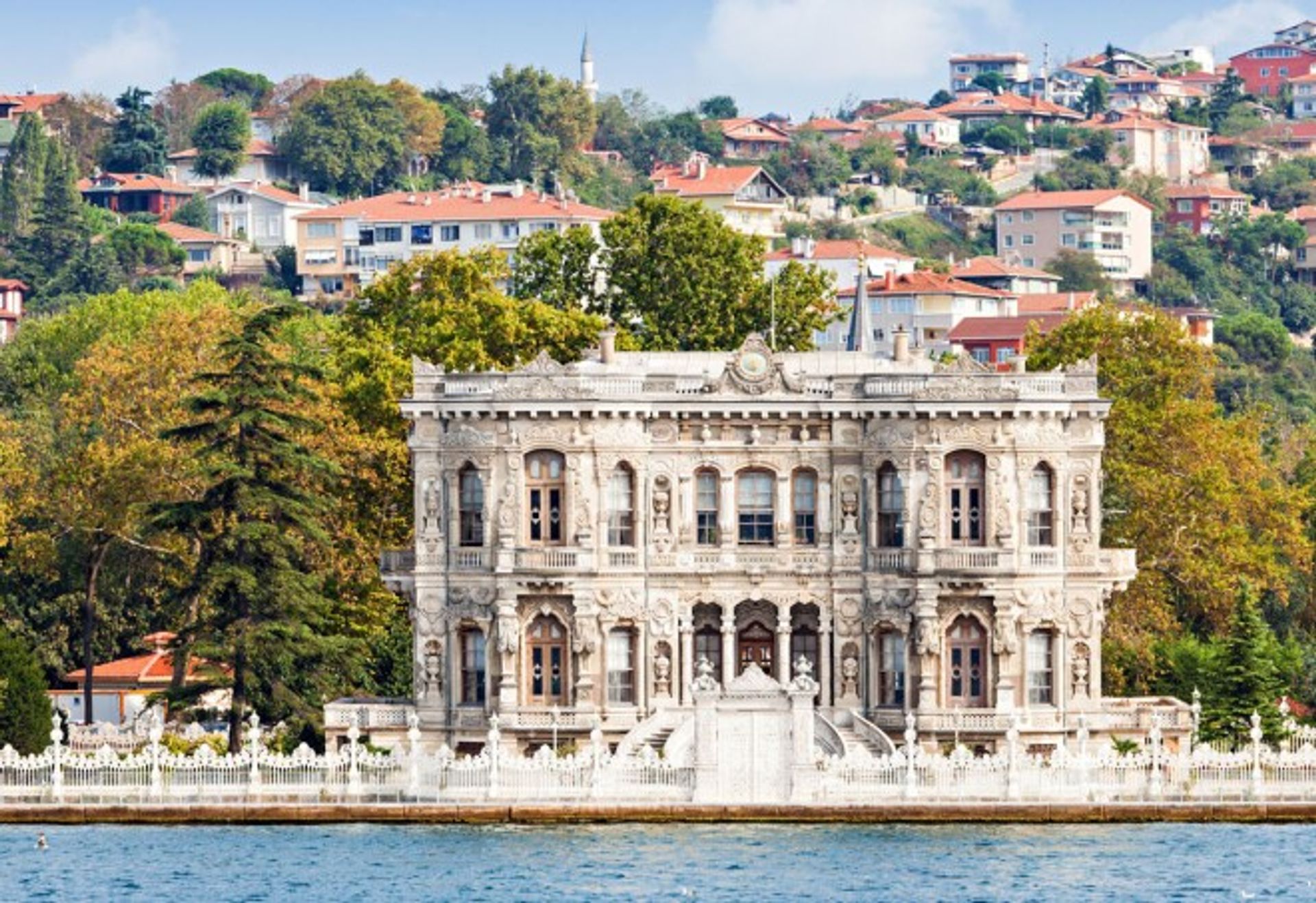
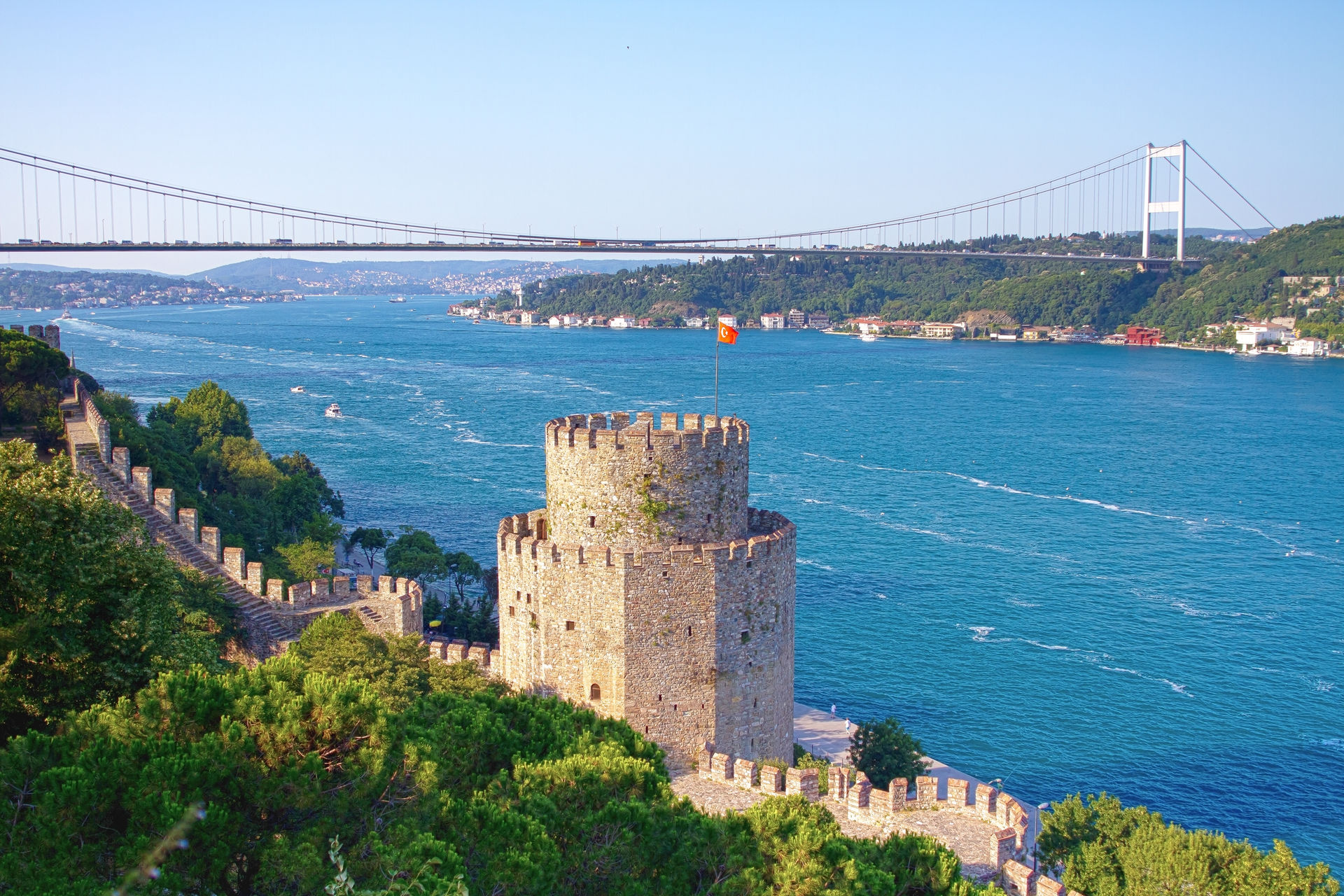
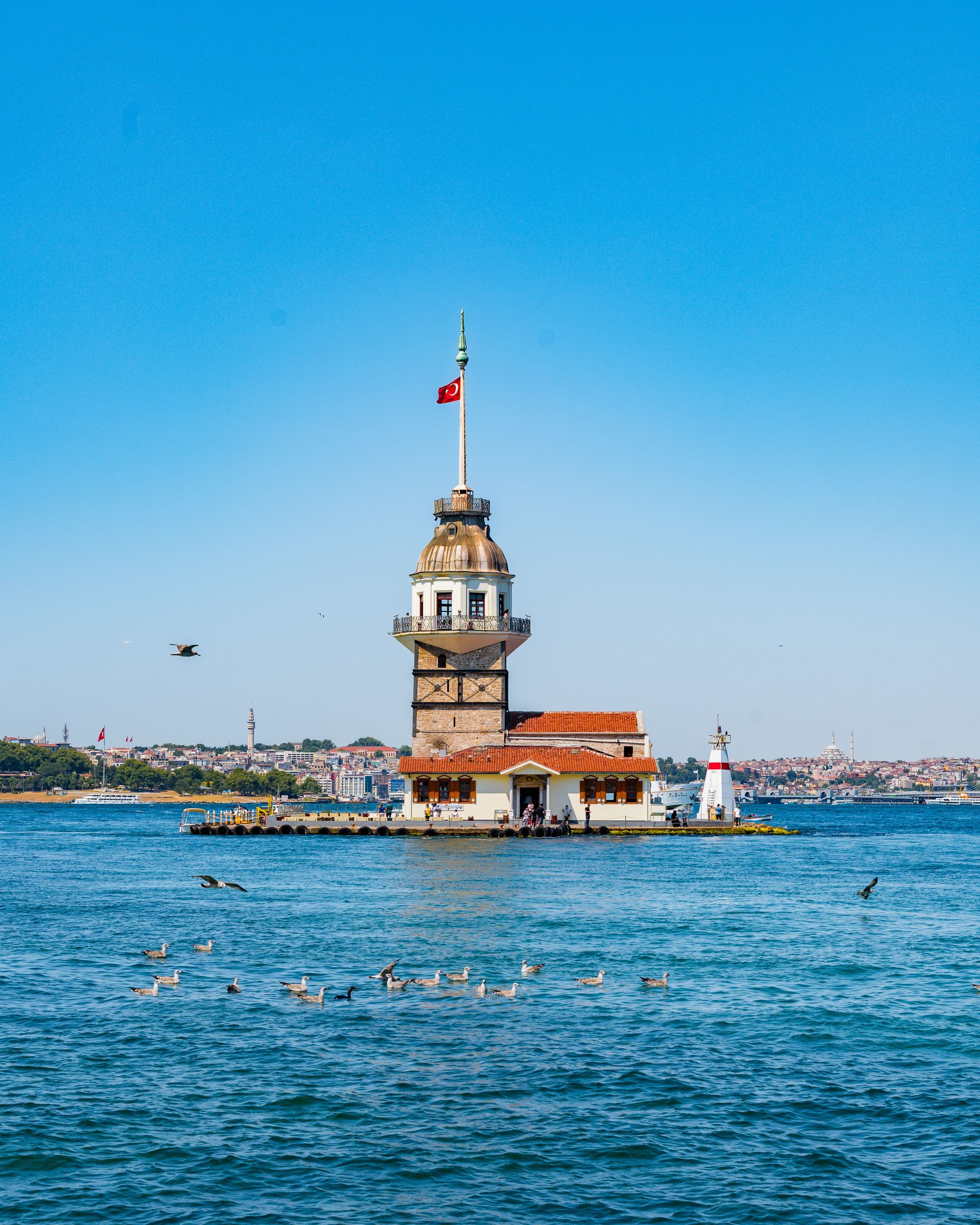
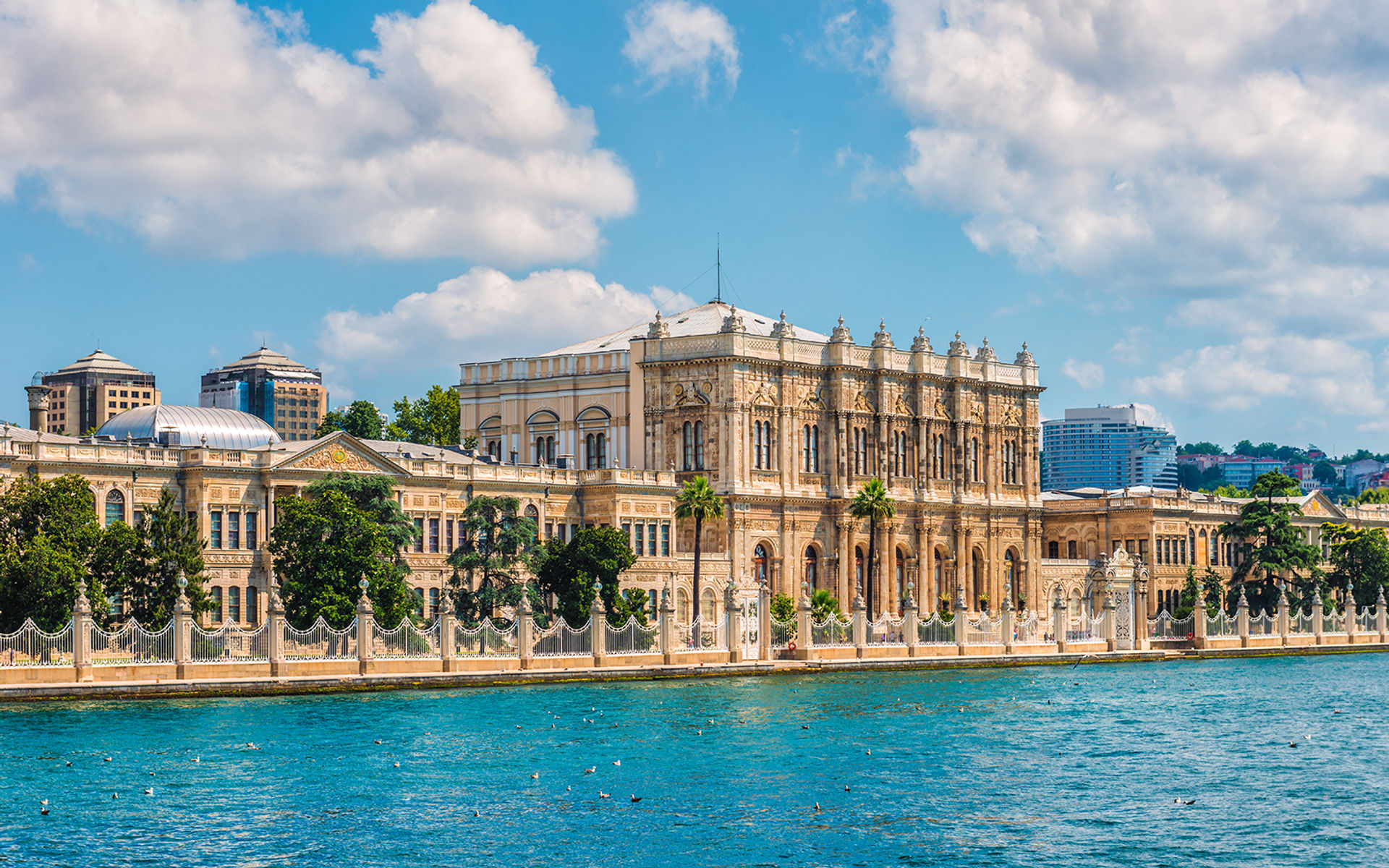
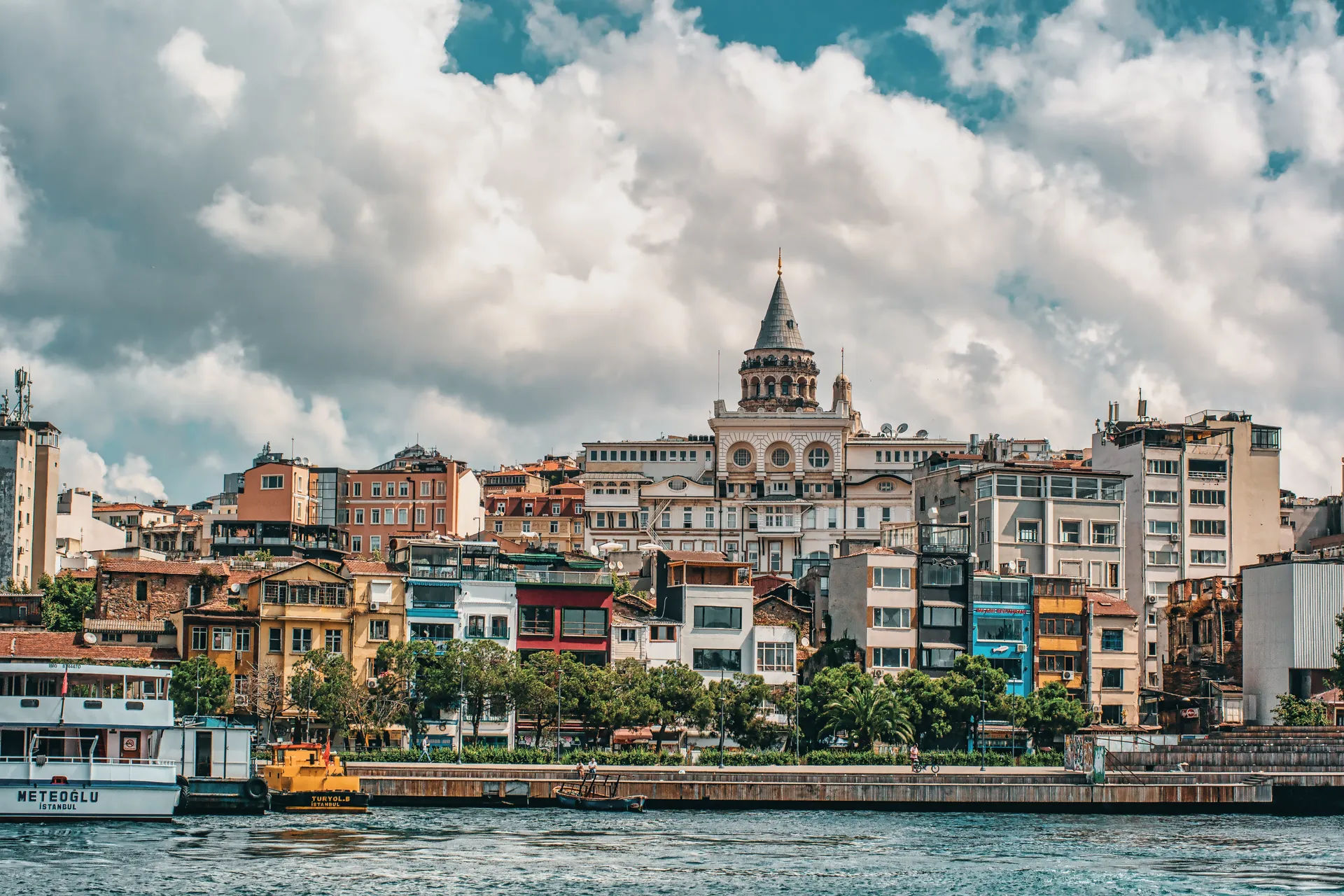
Adventure is for everyone!
Galataport, a lively harbor district with diverse cultural hubs, shops, and delicious dining spots, nestled along the Karaköy coastline, creates a cozy and inviting atmosphere. Now, starting from the Galataport, we embark on a unique journey through one of the most beautiful straits in the world, separating the Asian and European continents. Today, we are here to take you on an extraordinary Istanbul experience. Are you ready to explore many landmarks, from historical monuments to bridges, dazzling palaces to fortresses, mansions to groves, in the enchanting atmosphere of the Bosphorus?
To ensure your safety and comfort, please note that our tour program will be revised accordingly in case of adverse weather or exceptional circumstances. Let's embark on this journey together to create unforgettable memories and share this magical experience! Welcome aboard!
Galataport
Galataport Istanbul, covering a 1.2 km long coastline along the Bosphorus, has transformed the historic port into a world-class cruise terminal, opening up the coastline for public access. With its low-rise buildings, neighborhood concept design, and alternative transportation options, it offers visitors a breezy and safe experience in culture and arts, work, shopping, and dining.
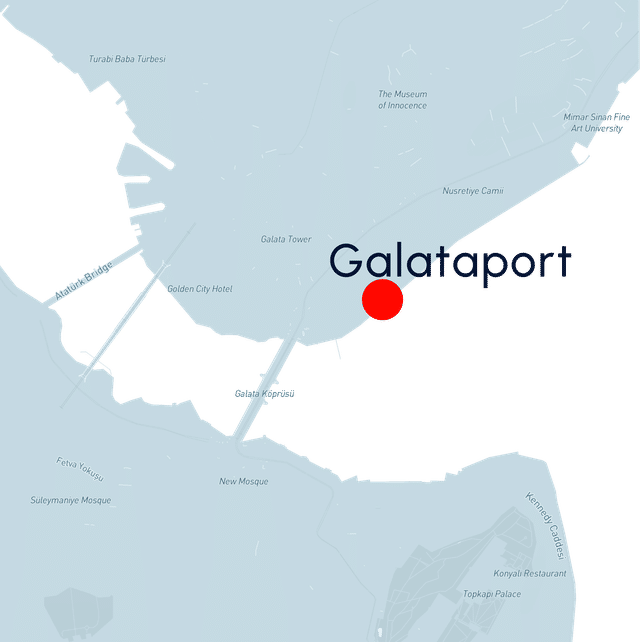
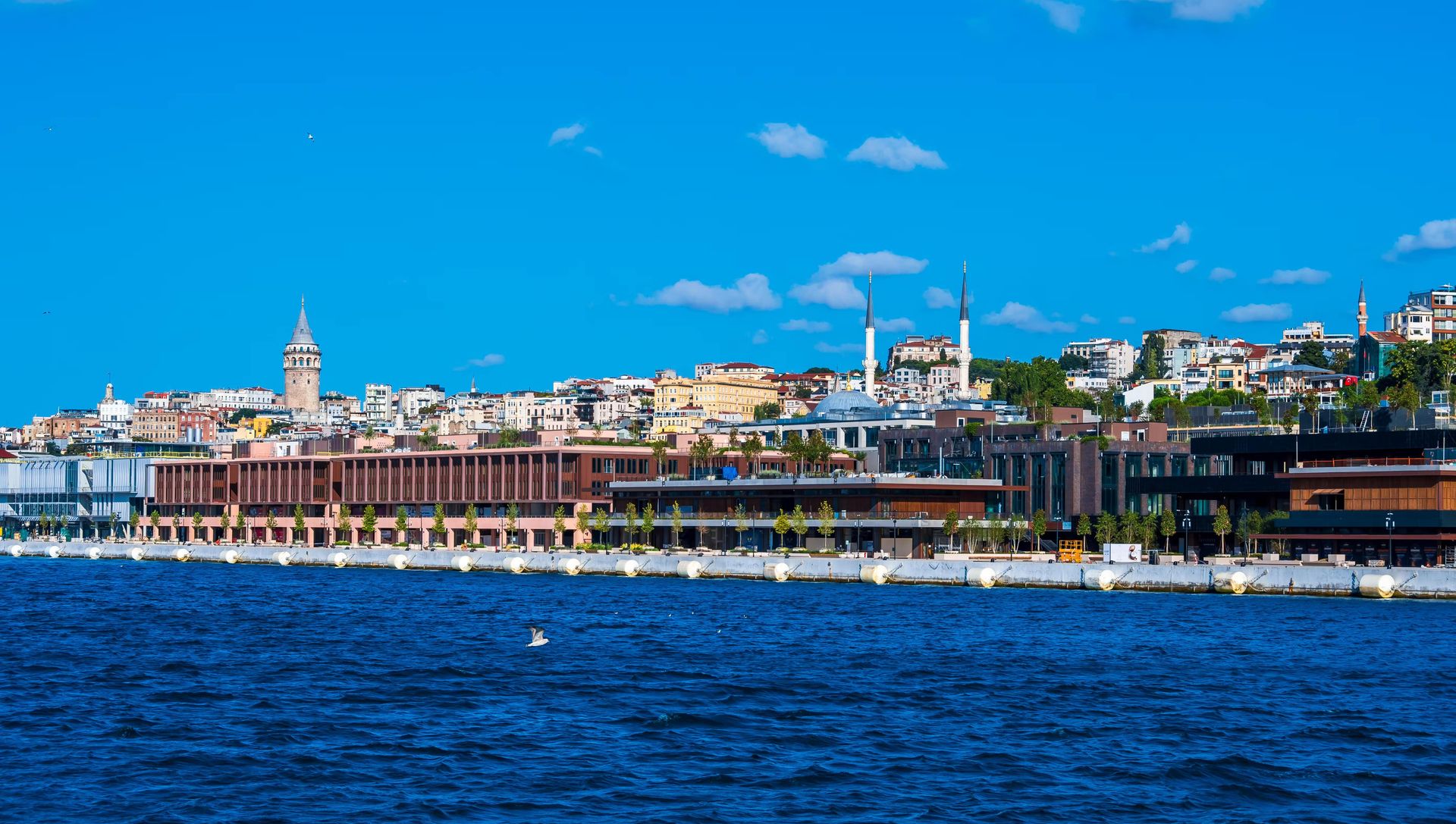
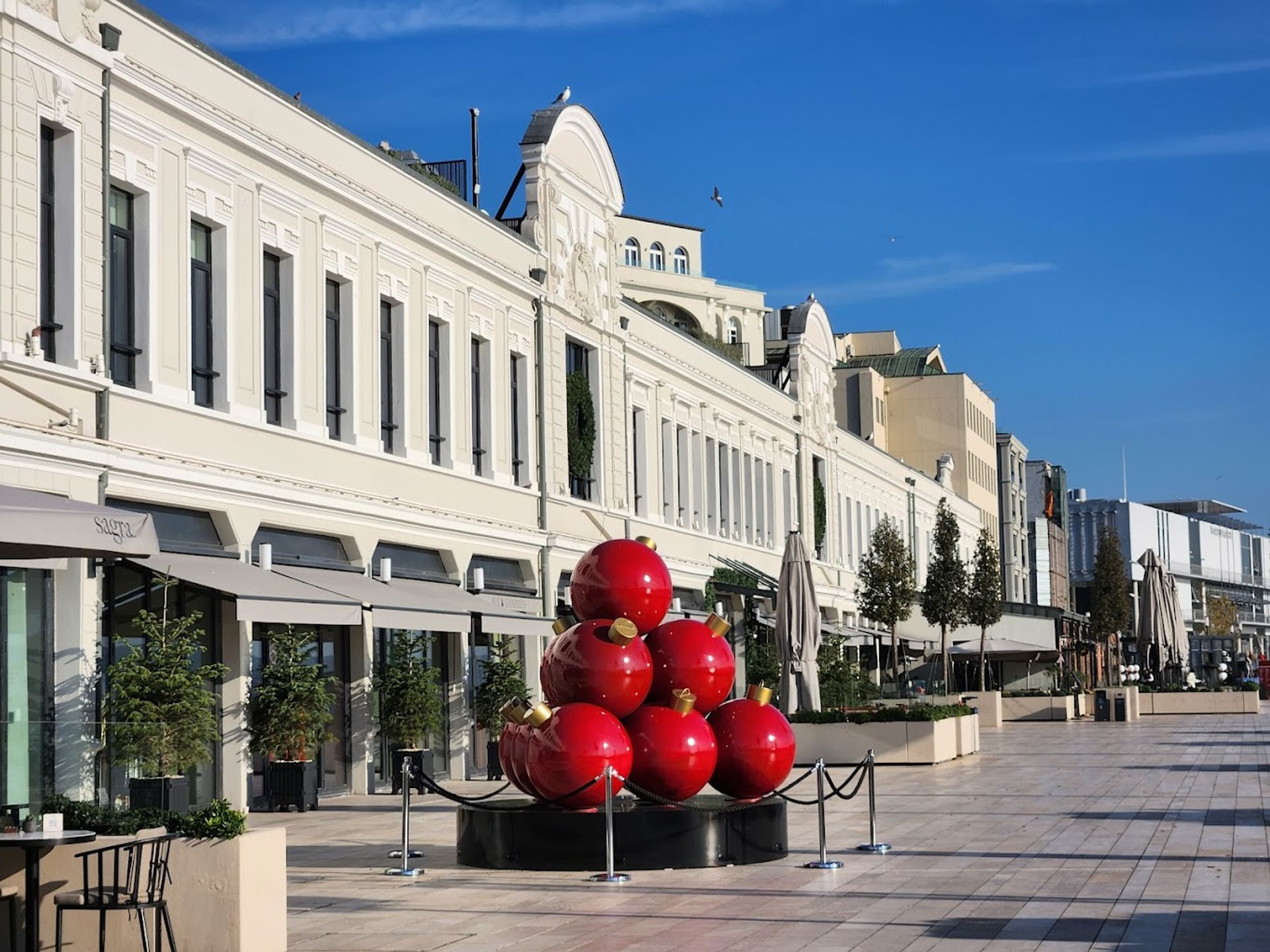

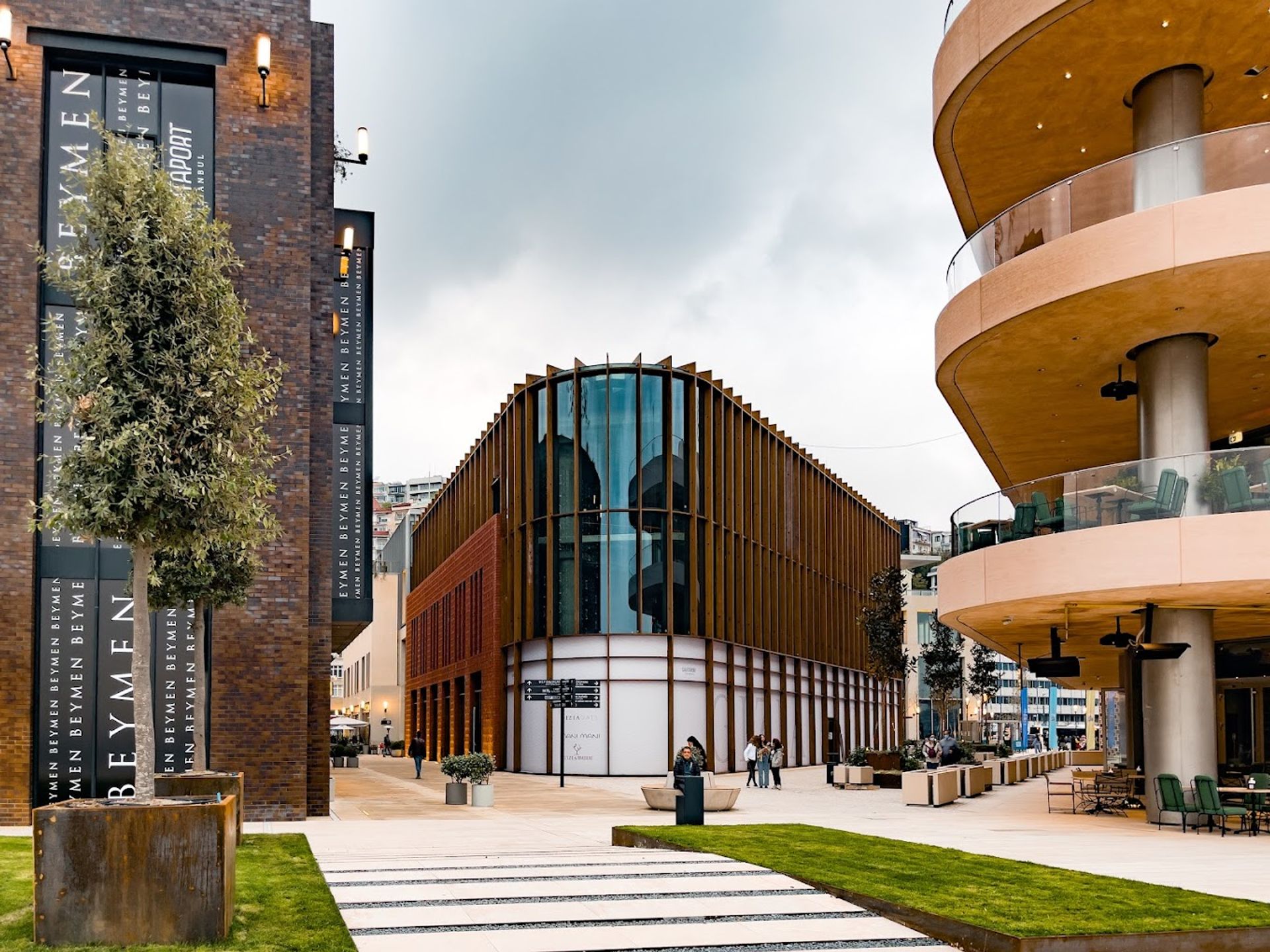






The Cihangir Mosque, sitting atop a hill that dominates the Bosphorus and offering a wonderful view from its small garden, has lent its name to one of the art community's favorite districts. Mimar Sinan built the mosque in memory of Sultan Suleiman the Magnificent's son, who died in 1553 due to the grief caused by the execution of his half-brother Mustafa. The Cihangir Mosque bears resemblance to the Dolmabahçe and Ortaköy mosques designed by the Balyan family. Sitting on the benches in front of it, one can enjoy one of the most beautiful views of Istanbul.
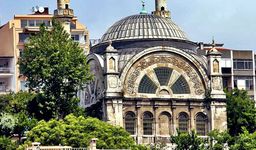
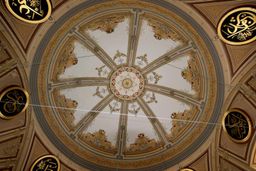
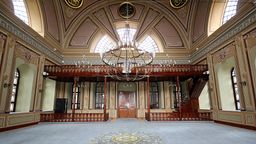
The university is named after the famous Ottoman architect Mimar Sinan, highlighting his contributions to architecture, art, and culture. Founded by Osman Hamdi Bey, a painter, archaeologist, art historian, and the director of the Muse-i Humayun, or the Archaeology Museums at the time, this prestigious university operates not only across different campuses but also from Çiftesaraylar in Fındıklı, which served as the former Ottoman Parliament building, and from the Cemile Sultan Palace.
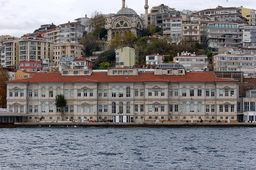
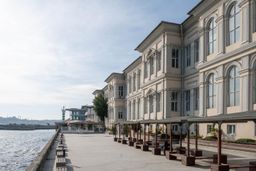
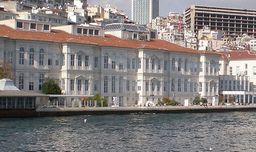
Beşiktaş
Beşiktaş, one of Istanbul's historic neighborhoods, sits right in the heart of the city. With the magnificent view of the Bosphorus, it blends historic structures with the energy of modern life. This neighborhood is a hub of cafes, restaurants, boutiques, and entertainment venues that will capture everyone's interest. Istanbul, with its marvelous waterways and having served as the capital of three different empires - Roman, Byzantine, and Ottoman, is truly special. Moreover, one of the most intriguing features of Istanbul is its spread across two continents. It's the only city in the world where you can travel between continents quickly and economically. Just imagine, you can cross from Europe to Asia in just 10 minutes. In Beşiktaş, you'll find beautiful historic docks that are visually stunning.
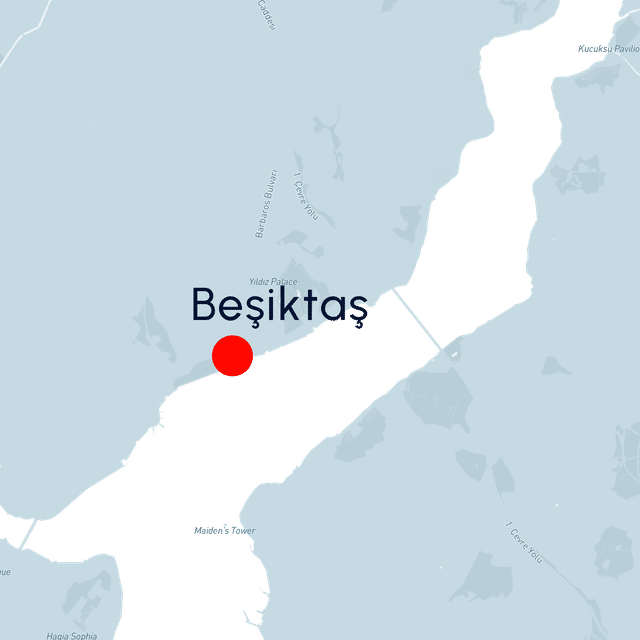
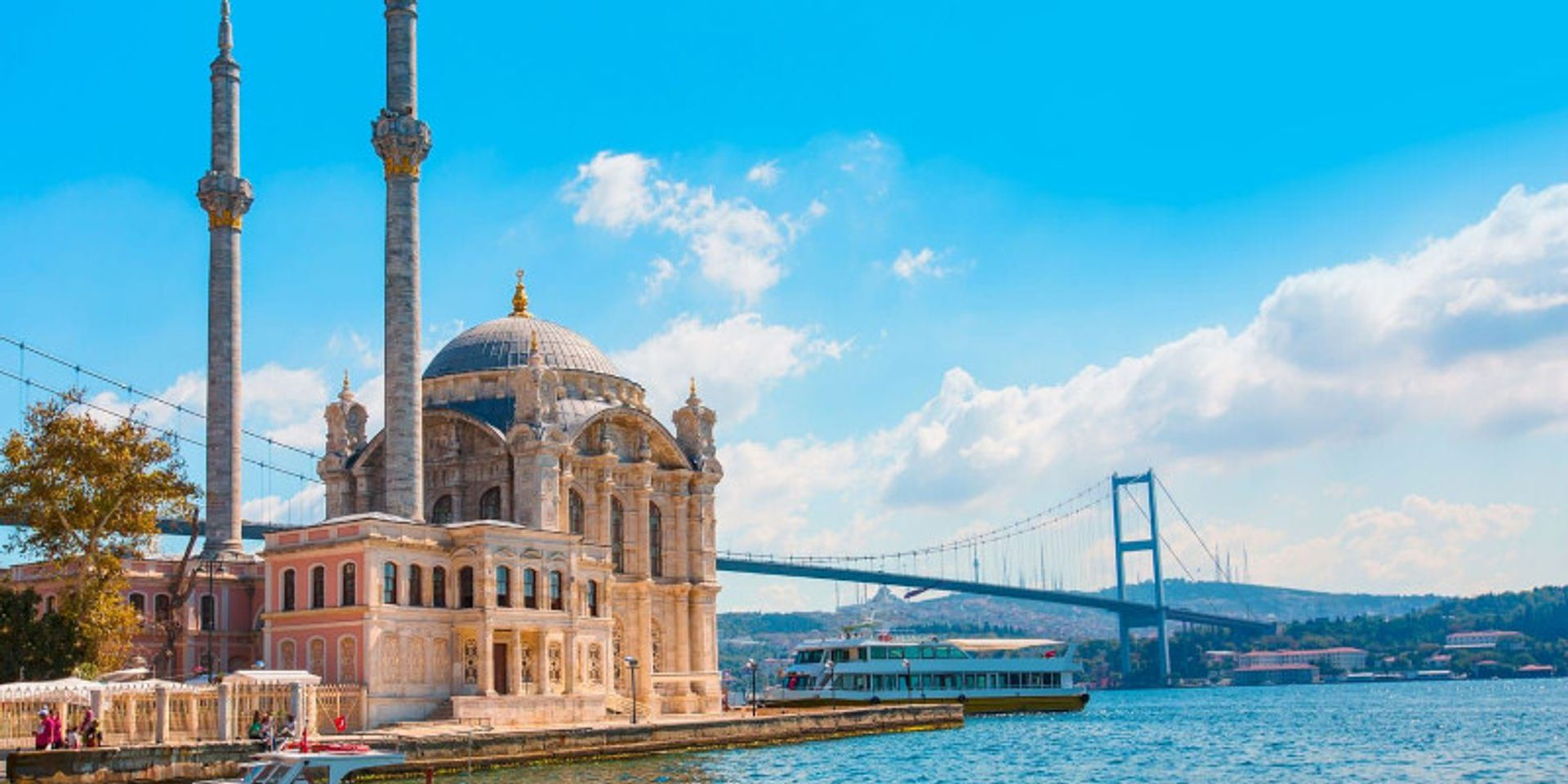
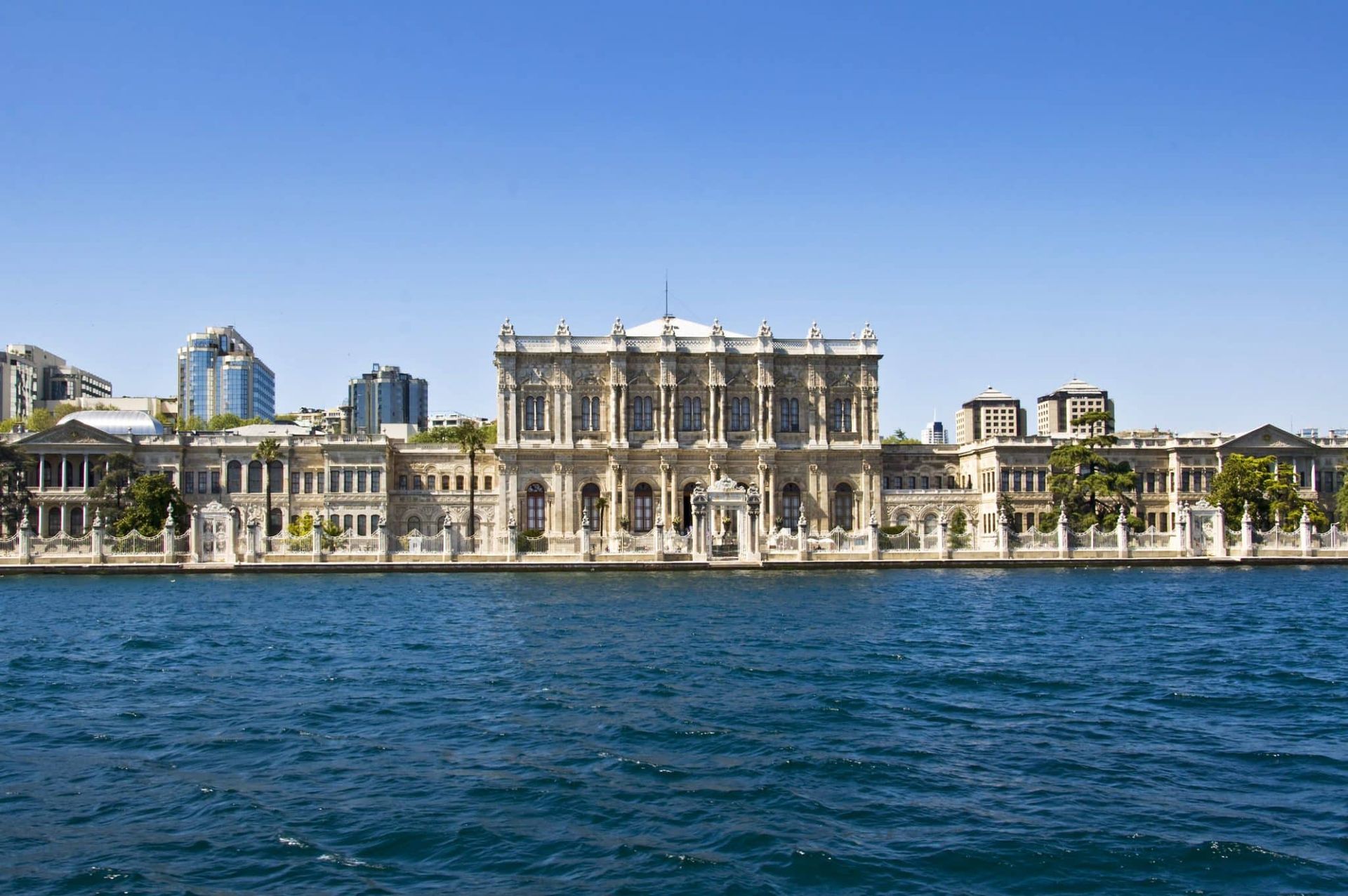

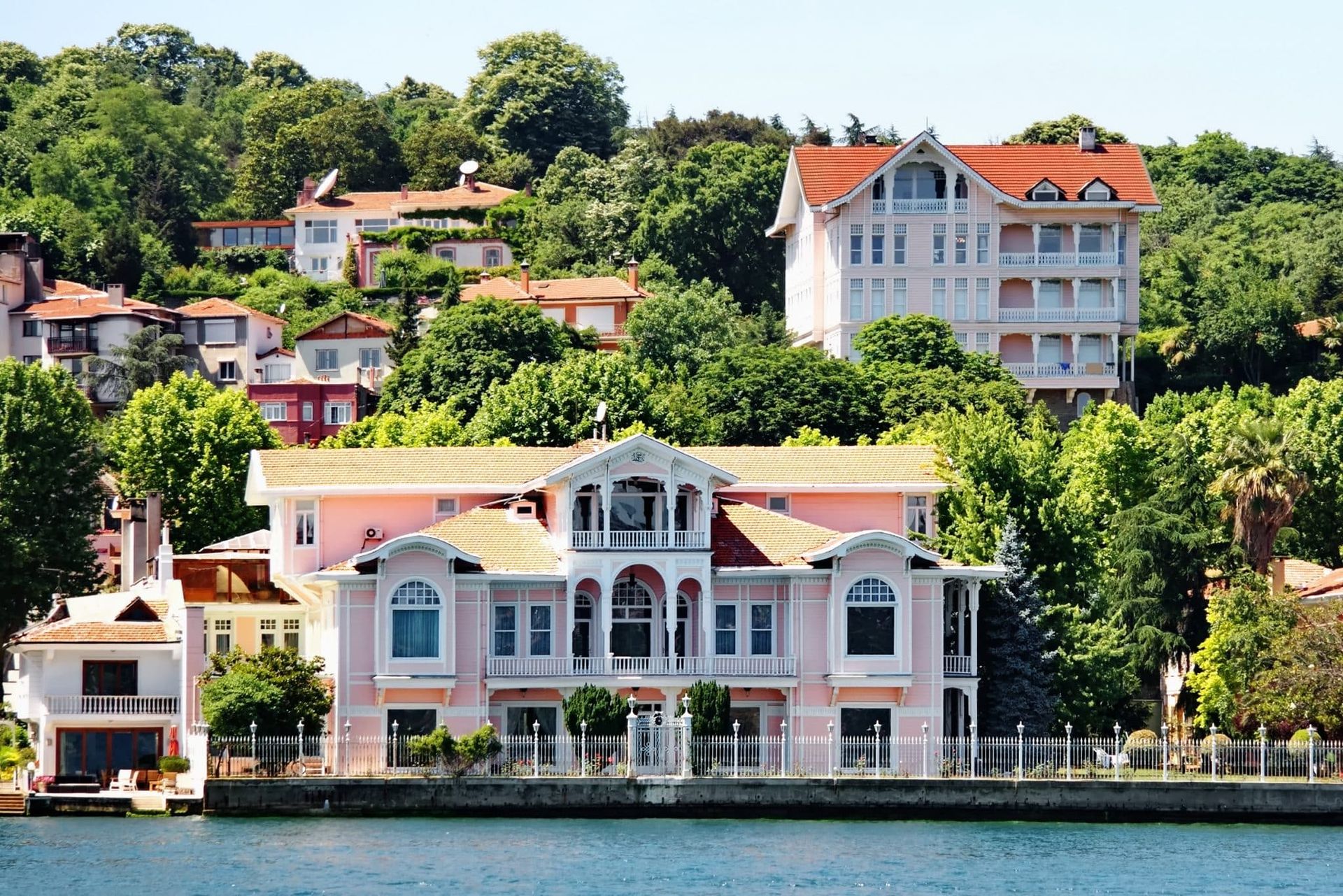
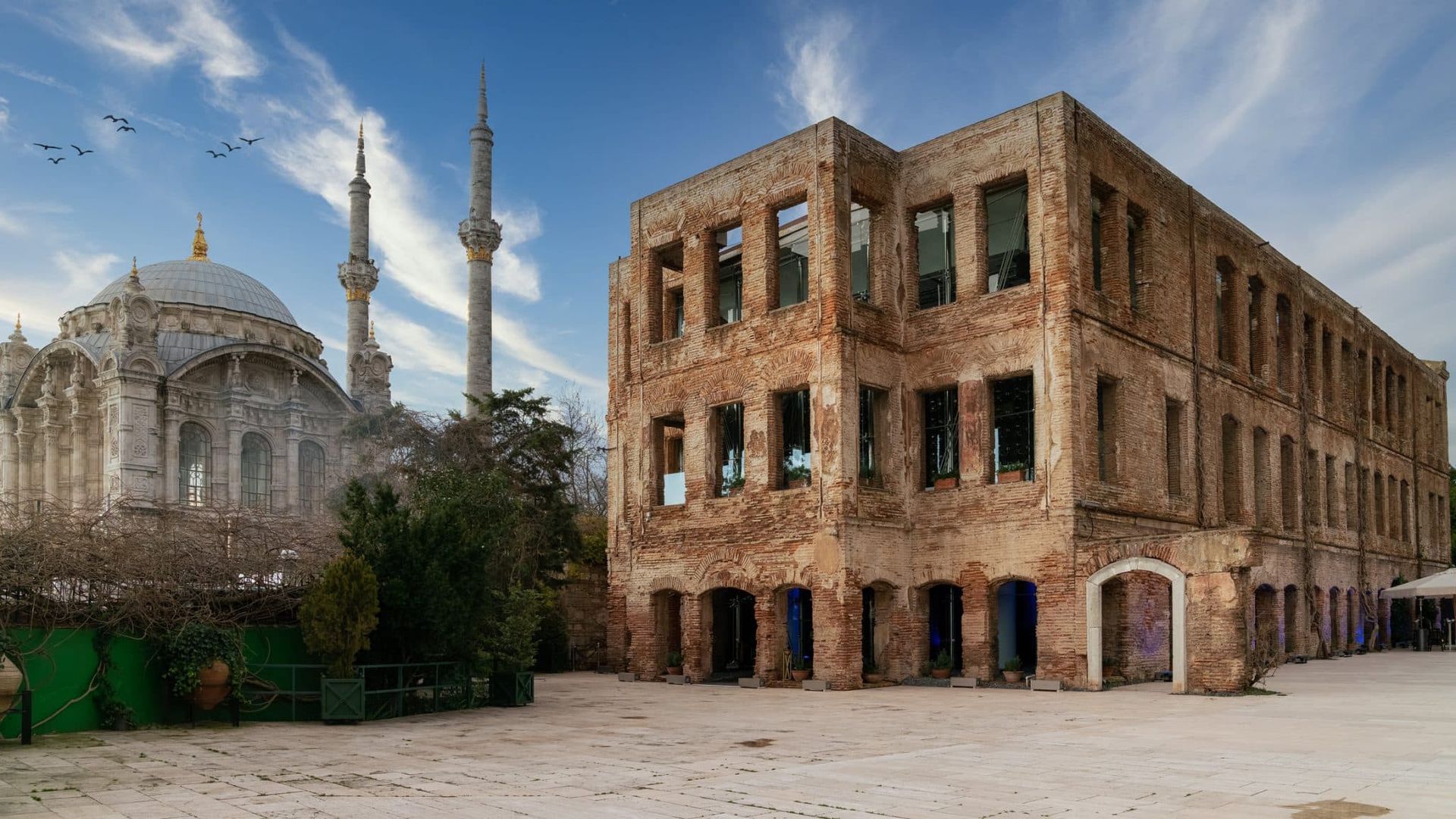





The Kabataş area, renowned for some of Istanbul's finest hotels, is located at one of the city's junction points. On the other hand, Tophane has recently gained vibrant colors with Galataport bringing activity to one side and the neighborhood's art venues in Tomtom and Çukurcuma on the other.
The square building you see right above the neighborhood is the Atatürk Cultural Center. After being closed for a long time, the center reopened on October 29, 2021, with its architecture resembling its old structure, reclaiming its central position in Istanbul's art scene. Watching Istanbul's breathtaking views from the restaurants inside is a delight! The tallest building you see right next to it holds an important place in the city's memory, The Marmara Hotel. It also boasts a delightful restaurant on its top floor. The building between these two, adorned with red and white colors, is the German Consulate. Located on Gümüşsuyu Avenue as you descend from Taksim towards Dolmabahçe, this magnificent building on your right has been used as an embassy building in the past.
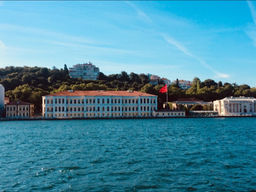
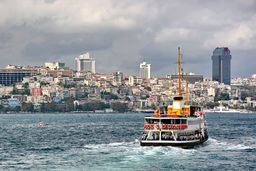
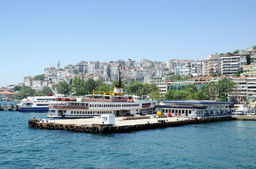
When you arrive at Dolmabahce, you're first greeted by Dolmabahce Mosque. This structure, built in the Baroque style, is one of the city's most beautiful works. Its original name is Bezmi Alem Valide Sultan Mosque because it was commissioned for Bezmi Alem Valide Sultan, the mother of Sultan Abdülmecid, who built Dolmabahce Palace.
Just behind it, you can see Süzer Plaza, which also houses the Ritz Carlton. Behind this skyscraper are the old barracks buildings, which are now used as campuses of Istanbul Technical University.
Continuing from Süzer Plaza, you'll find Turkey's first 5-star hotel, Hilton. The hotel, which is one of the symbolic structures of the city, was opened in 1955 with the participation of many famous figures, as depicted in old Istanbul photographs and etched in everyone's memory. Right in front of it is the Vodafone Arena belonging to Beşiktaş Football Club. Regarding the stadium's unique location, the famous Brazilian footballer Pele once said, 'Here, while playing or watching a match, you can also watch the opposite continent.
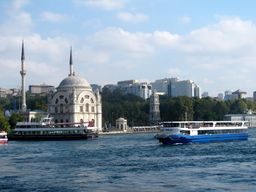
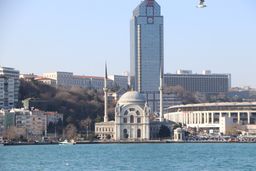
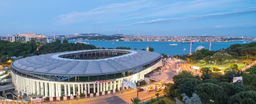
In the mid-19th century, during a period when the influence of the West began to be strongly felt, Dolmabahçe Palace is considered a sign of the Ottoman Empire breaking away from its past and traditional ties. The name of the palace comes from its location. Previously, this area was a bay serving as a harbor, but during the reign of Sultan Ahmed I, the land was filled with soil brought from the stadium area to create a park and a riding ground for the summer palace in Beşiktaş.
The palace was designed by Garabed and his son Nigoğos Balyan from the Balyan family. Wonderful works belonging to this family can be found along the Bosphorus in Istanbul. The construction began in 1843 and was completed in 1856. The main building had 285 rooms, 43 halls, and 6 bathrooms. A 600-meter-long quay was built to allow guests to arrive by sea. The main entrance gate of the palace is located next to the Rose Garden. When sultans arrived by land, they entered through this gate, while when they arrived by sea, they entered through the gate in the middle. The four-story clock tower, 27 meters high and built in 1890 by Sarkis Balyan for Sultan Abdul Hamid, combines neo baroque and empire styles.
The most important and highest section of this palace, witnessing many important events in Ottoman history as well as the early years of the Republic, is the magnificent Ceremonial Hall. The Ottoman dynasty would receive congratulations and hold special celebrations in this hall. On the right side is the largest part of the palace, the Harem section, while on the left side is the Selamlık section. Sultan Abdülmecid's signature can be seen in the harem and selamlık sections. Dolmabahçe Palace was the place where Atatürk spent his last days and passed away on November 10, 1938. The palace remained open for three days to show respect to the public. Afterwards, Atatürk's body departed from Sarayburnu towards his eternal resting place in Ankara.
Next to the palace, there is the former Crown Prince's Residence, which now hosts the Painting Museum and the Istanbul Office of the Presidency.
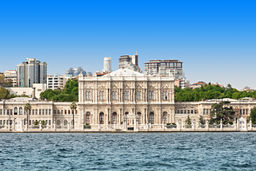
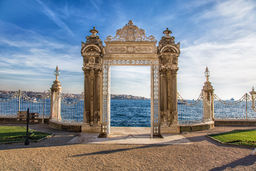
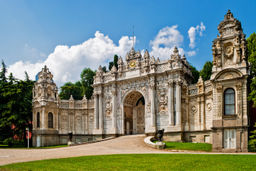
One of the historic buildings in Beşiktaş is now home to one of the city's most beautiful five-star hotels, Shangri-La. In the past, it served as a tobacco warehouse and the ITT Schaub-Lorenz factory. Initially, the building was constructed as a test workshop before the Demirağ family established an aircraft manufacturing factory in the 1930s.The family, credited with completing 1,250 km of Turkey's 10,000 km railway network, was given the surname 'Demirağ' by Atatürk in recognition of this achievement.
Right next to the hotel is the Naval Museum, which houses a very valuable collection. Among the must-see exhibits, especially in its newly built modern building, are 14 imperial boats reflecting the splendor of the Ottoman Empire.
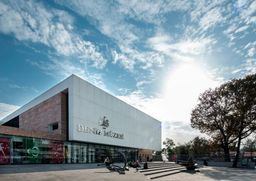
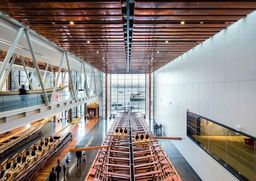
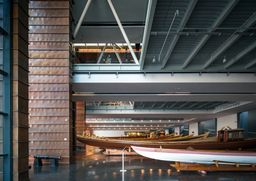
The historic pier in Beşiktaş, built in the style of First National Architecture, dazzles with its ornate exterior adorned with tiles. In the square just behind it, you'll be greeted by the modest tomb and statue of Admiral Hayreddin Barbarossa. Known by Europeans as 'Red beard,' this famous sailor is said to have given his name to the neighborhood according to one legend. Some say that Beşiktaş got its name because Barbarossa anchored his galleys to five stones found here. Another legend suggests that the name originated from the bringing of a piece of the cradle of Jesus to this place.
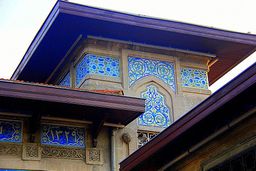

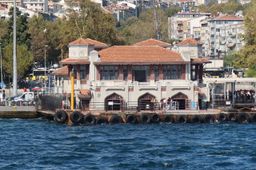
In the midst of the hustle and bustle of Beşiktaş Square, quietly standing is the Sinan Paşa Mosque, commissioned by the Ottoman Navy's admiral, Captain Sinan Paşa, in 1553 and built by the renowned architect of the time, Mimar Sinan. Its red-and-white striped exterior and central dome supported by hexagonal columns create a magnificent aesthetic. The mosque's fountain is one of the most unique and beautiful examples of 16th-century Ottoman craftsmanship.
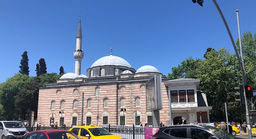
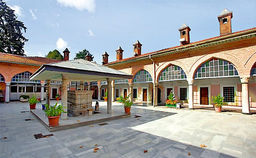
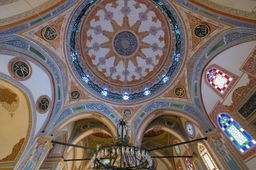
The Çırağan Palace stands as one of the magnificent palaces bestowed upon Istanbul by the Balyan Family in the second half of the 19th century. The gardens extending behind the palace now form one of the city's breathing spaces known as Yıldız Park. Inside the palace, there are many exclusive areas ranging from ballrooms to meeting rooms.
The name Çırağan Palace is derived from the word "çerağ," meaning "light-filled" in Persian. Adjacent to the palace, Çırağan Kempinski serves guests in a modern building. Behind the palace lies the tomb of Yahya Efendi. Yahya Efendi was a close friend of Sultan Süleyman the Magnificent. Built by Mimar Sinan in the 1570s, the tomb has become a place where sailors returning safely from voyages express their gratitude. Some members of the dynasty, including one of the daughters of Sultan Süleyman, rest in the cemetery of the tomb.
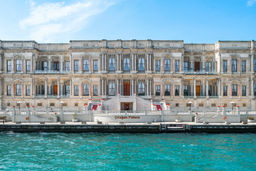
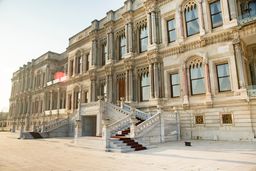
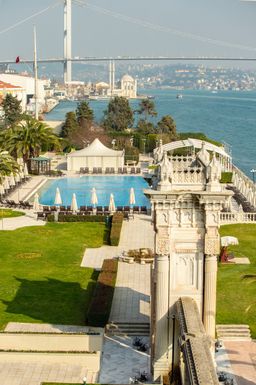
The Küçük Mecidiye Mosque, located at the lower entrance of Yıldız Park across from the Çırağan Palace, was commissioned by Sultan Abdülmecid in 1848. Designed in the Baroque style by the Balyan Family, this single-minaret mosque was part of a complex that included a madrasa, school, and caravanserai. The walls and domes of the mosque, adorned with flowers made of white plaster, were constructed using soil brought from the Kaaba.
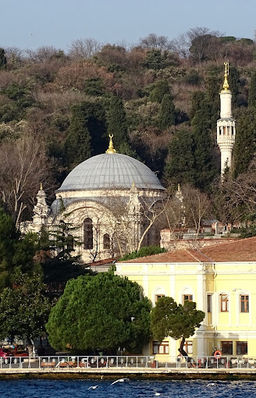
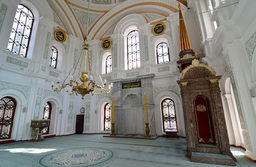
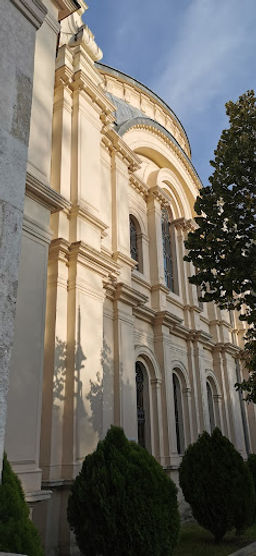
On both sides of the Çırağan Palace, you'll notice magnificent palaces built for other members of the dynasty. Among the buildings where the selected members of the Ottoman dynasty resided, the closest to Beşiktaş is the Atik Paşa Coastal Palace, while the farthest is the Hatice Sultan Waterside Mansion located just below the bridge. The first palace we encounter after the Çırağan Palace is now used as a Vocational and Technical Anatolian High School. Among the palaces belonging to Galatasaray University, the most beautiful one houses the university's foreign language department. Adjacent to the yellow-colored university building is one of the city's finest high schools, Kabataş Boys High School. Sultan Abdülaziz passed away in 1874 in the mansion currently used as Kabataş Boys High School.
Before reaching Ortaköy, you'll come across an intriguing building with eight columns in front of it, which is the Feriye (Redoubt) Barracks dating back to the 19th century, formerly responsible for the security of the palaces. Today, it houses a wonderful restaurant bearing the same name.
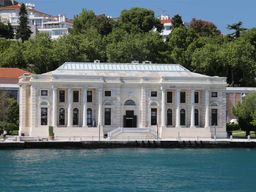
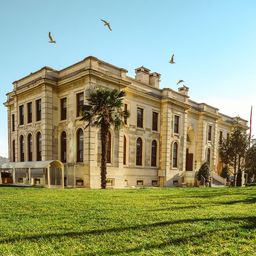
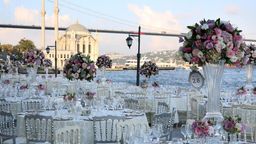
The perhaps most striking structure of Ortaköy, where hints of its old cosmopolitan days are hidden in every corner, is the Ortaköy Mosque, which creates the feeling of sitting right on the water. Its original name is Büyük Mecidiye Mosque. Watching the play of light entering through the tall windows of this mosque, one of the finest examples of Baroque style, is a mesmerizing experience. The imperial lodge located on the left side of the mosque was the place where sultans rested before or after the Friday prayer.
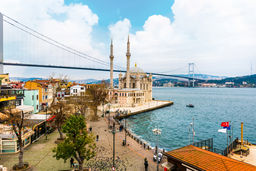
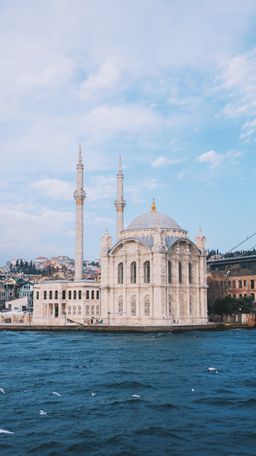
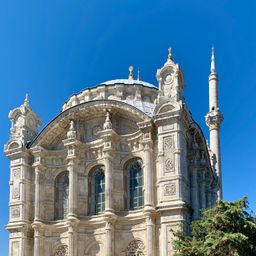
After passing the Ortaköy Mosque, you will come across the Esma Sultan Mansion, built for Esma Sultan, the daughter of Sultan Abdulhamid I, who married Çerkez Mehmed Pasha. Esma Sultan, who was the sister of Sultan Mahmud II, is said to have led a very colorful life and left behind many grieving men. The mansion was initially used as a school, then as a tobacco warehouse, and before turning into ruins in a fire in 1975, it served as a coal depot. In the 1990s, the remaining four walls were covered with glass and steel construction, and today it is used for events and functions.
Adjacent to Esma Sultan Mansion, the three white mansions, formerly known as Armaggan Bosphorus Suites, belong to Sarkis Balyan, the rightmost of which. In the 1860s, Sultan Abdulaziz, wanting to reward Sarkis Balyan for his work at the Beylerbeyi Palace, allocated this land to him.

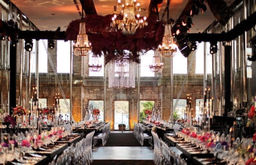
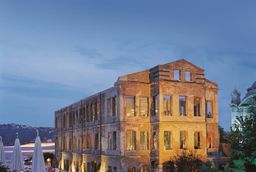
Located at one of the busiest traffic points, the hamam, one of the four works designed by Mimar Sinan in Beşiktaş, is known as the first structure built after the settlement of Turks in Ortaköy. Today, serving as a cultural center under the administration of Beşiktaş Municipality, the building is believed to have been commissioned by Hüsrev Kethüda, the steward of Vizier Sokollu Mehmet Pasha, in the 1570s.
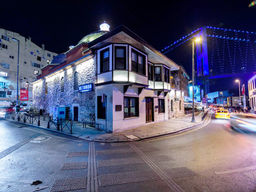
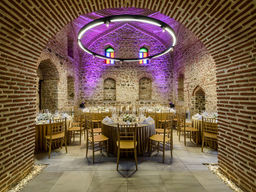
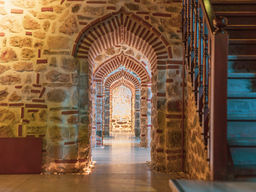
The Etz Ahayim Synagogue, located on the main street, was built by the Jews who settled in the area in the mid-17th century. It has suffered damage and been rebuilt several times during the famous fires of Istanbul. The name of the synagogue, one of the finest legacies of the neighborhood's cosmopolitan structure, means 'Tree of Life'.
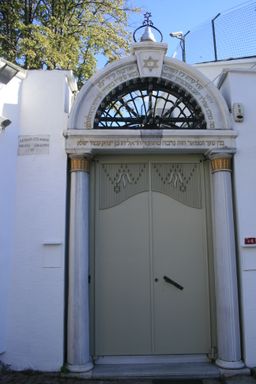
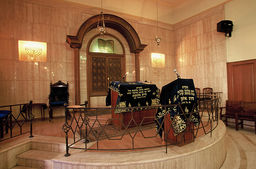
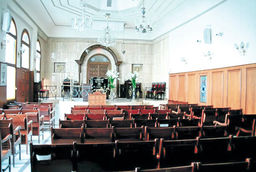
The history of the Ayios Fokas Greek Orthodox Church, hidden behind the shops in the bazaar, actually dates back to the Byzantine period. This area was named after the monastery complex of the same name that existed here at that time. The building, distinguished by its bell tower, was damaged during a major fire in the neighborhood during the reign of Sultan Ahmet III. By the decree of Sultan Abdülmecid, a new church was built in the same location, hence the name of the supporting sultan inscribed on the church door.
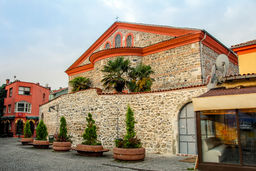
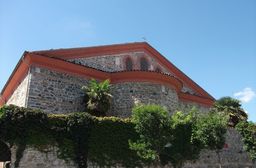
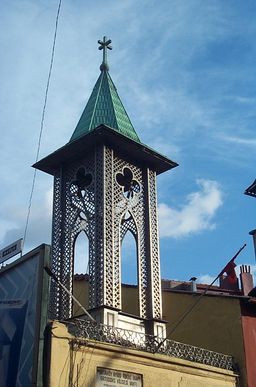
The first bridge connecting two continents was opened on the 50th anniversary of our Republic. Construction of the bridge, built between Ortaköy and Beylerbeyi, began in 1970 and was completed in 1973. Following the Republic Day, on October 30, 1973, it was inaugurated as the "world's fourth-longest suspension bridge" at the time. The Bosphorus Bridge, which is 1074 meters long and 65 meters high from the sea level, had its official name changed to the "July 15 Martyrs Bridge" in 2016 in memory of those who were martyred during the July 15 coup attempt.
Behind the first bridge, you'll see the red-colored pagoda-style building, the Bruno Taut House. Bruno Taut was a prominent German architect who settled in Istanbul after fleeing the Nazi regime. Taut, who later became a professor at the current Mimar Sinan Fine Arts University, is known for his works such as the Ankara University Faculty of Language, History, and Geography building and the Trabzon High School. He also designed the catafalque for Atatürk's Ethnography Museum, where Atatürk's body was placed. Designed overnight, the catafalque became Taut's last work after his death on December 24, 1938.
The pink building next to it was formerly used as a hospital and is now used as the headquarters of the Alarko company.
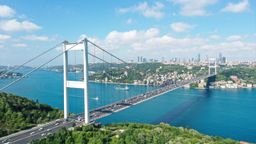
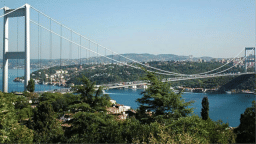
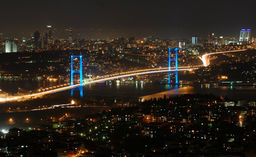
As we move from the palace district towards the villages along the Bosphorus, we begin to see the "Pearls of the Bosphorus," as the yalıs (waterside mansions) are often called. These yalıs along the Bosphorus are constructed as elegant wooden buildings with docks and boat houses where boats can moor. The term "Yalı," equivalent to the Ottoman "Seahouse," is derived from the Greek word "Aegialos," meaning "seashore." The urbanization of the Bosphorus area began during the Byzantine period with monasteries and fishing villages. Especially after the Tulip Era, pearl-like yalıs were lined up along the Bosphorus necklace. Most of those that have survived to the present day date back to the 19th and 20th centuries.
One of these is the splendid white Naime Sultan Mansion. Nearby, just below the Bosphorus Bridge, lies the Hatice Sultan Mansion in its green splendor. Hatice Sultan was the grandmother of the renowned author Kenize Murad. Guiding Kenize Murad through Istanbul and introducing her to the places where her mother's family lived is among the cherished memories of my guiding career. These structures, known as the "Hanım Sultan Palaces," will serve as hotels following extensive restoration.
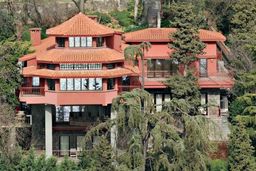
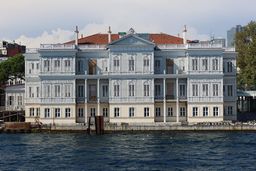
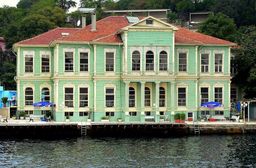
Do not be deceived by the current green appearance of this charming district, lying between the Cemil Topuzlu Park on the coast and the Şeyhülislam Grove stretching along the slope. Only the name of a bus stop remains to remind us of the past of Kuruçeşme, which was once used for storing sand and coal: the Coal Distribution Stop!
Cemil Topuzlu, who gave his name to the park on the coast, was one of the former mayors of Istanbul. You will remember the name Cemil Topuzlu from the Harbiye Open Air Theater.
The source of the district's current name lies in the name Koruçeşme. Next to the Tezkireci Osman Efendi Mosque, there is the Köprülü Nurse Fountain, built in the 17th century. In fact, in the past, the district was a region with plenty of water flowing from its fountain and lush greenery. But over time, as the fountain dried up and the greenery diminished, Koruçeşme became Kuruçeşme!
From here, when you look directly across, you can see the highest point of the city, Çamlıca Hill. Çamlıca Mosque, the largest mosque in Turkey, is also located here.
At the top of Kuruçeşme, you will see one of the largest flags of Turkey. This flag, a symbol of the conquest of Istanbul by the Ottomans in 1453, covers an area of 1453 square meters.
As you continue towards Kuruçeşme Park, the structure that will catch your attention by the sea is the Mandarin Oriental, a rather ostentatious hotel.
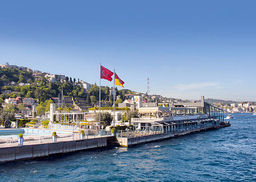
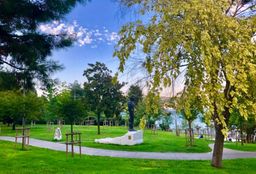
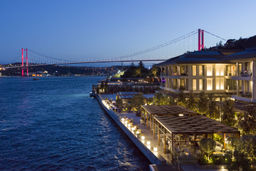
In the history of Kuruçeşme, it is known that many Armenian and Greek families once lived there. One of the remaining places of worship from those times is the Holy Cross Armenian Church. Constructed by Garabed Balyan in 1881 on the site of another church that was previously built, this rectangular-shaped church was made using stone and brick. In the same street where the Ayios Dimitrios Church once stood, there was a Clergy School, which was later moved to Heybeliada. A tunnel within the church leads to one of the most unusual sanctuaries in the city, the Ayios Sotiros Holy Well. For centuries, dripping water has led to limestone deposits on the walls, giving visitors the feeling of being in an intriguing cave upon their first encounter.
At the juncture where Kuruçeşme and Arnavutköy merge, behind high walls, stands the Church of Hagios Ioannis Prodromos, distinguished by its round wooden dome.
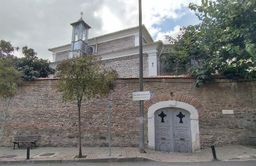
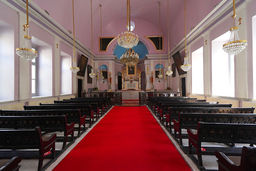
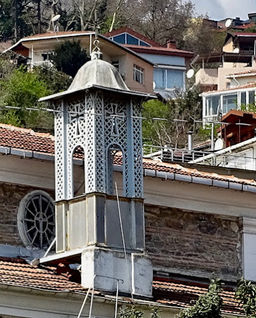
In the Bosphorus, there are a total of two small islands you will encounter. One is the island on which the Maiden's Tower is located, and the other is this island, bearing the name of Galatasaray Sports Club. Galatasaray Island was given to the architect Sarkis Balyan by Sultan Abdulhamid II as a reward for his successful work on the Esma Sultan Mansion and Çırağan Palace. The architect constructed a two-story mansion on the island and conducted his physical studies there.
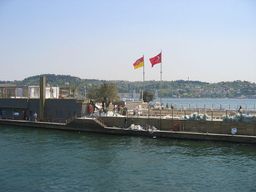
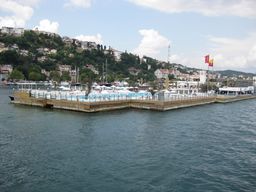
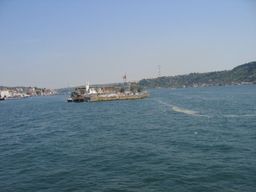
Arnavutköy
Arnavutköy is considered one of the most beautiful districts along the Bosphorus. Its most defining feature is its magnificent wooden houses... It reminds us how beautiful and elegant a village can become, undergoing a graceful transformation, amidst a period of proliferation of concrete buildings. Once famous for its vineyards, Arnavutköy gained more popularity in the early 19th century thanks to its strawberries. It got its present name from the Albanian master builders brought by Sultan Abdülmecid. While it used to have a large population of Greeks and Jews, today only a few Greeks reside in the neighborhood.
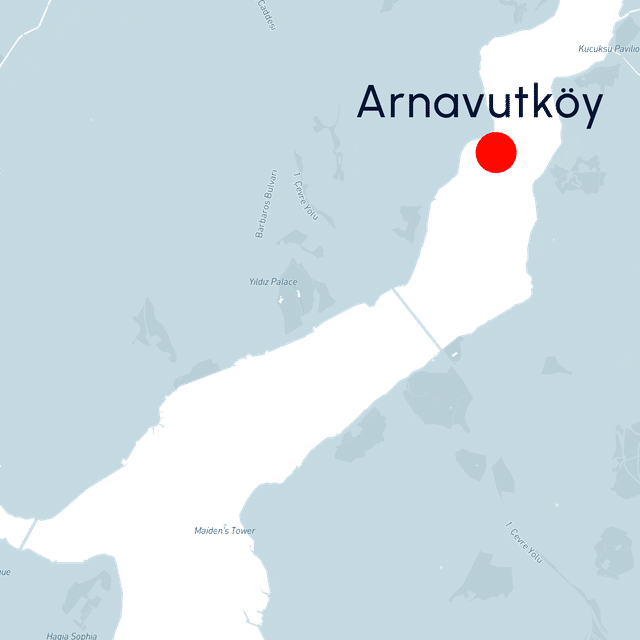
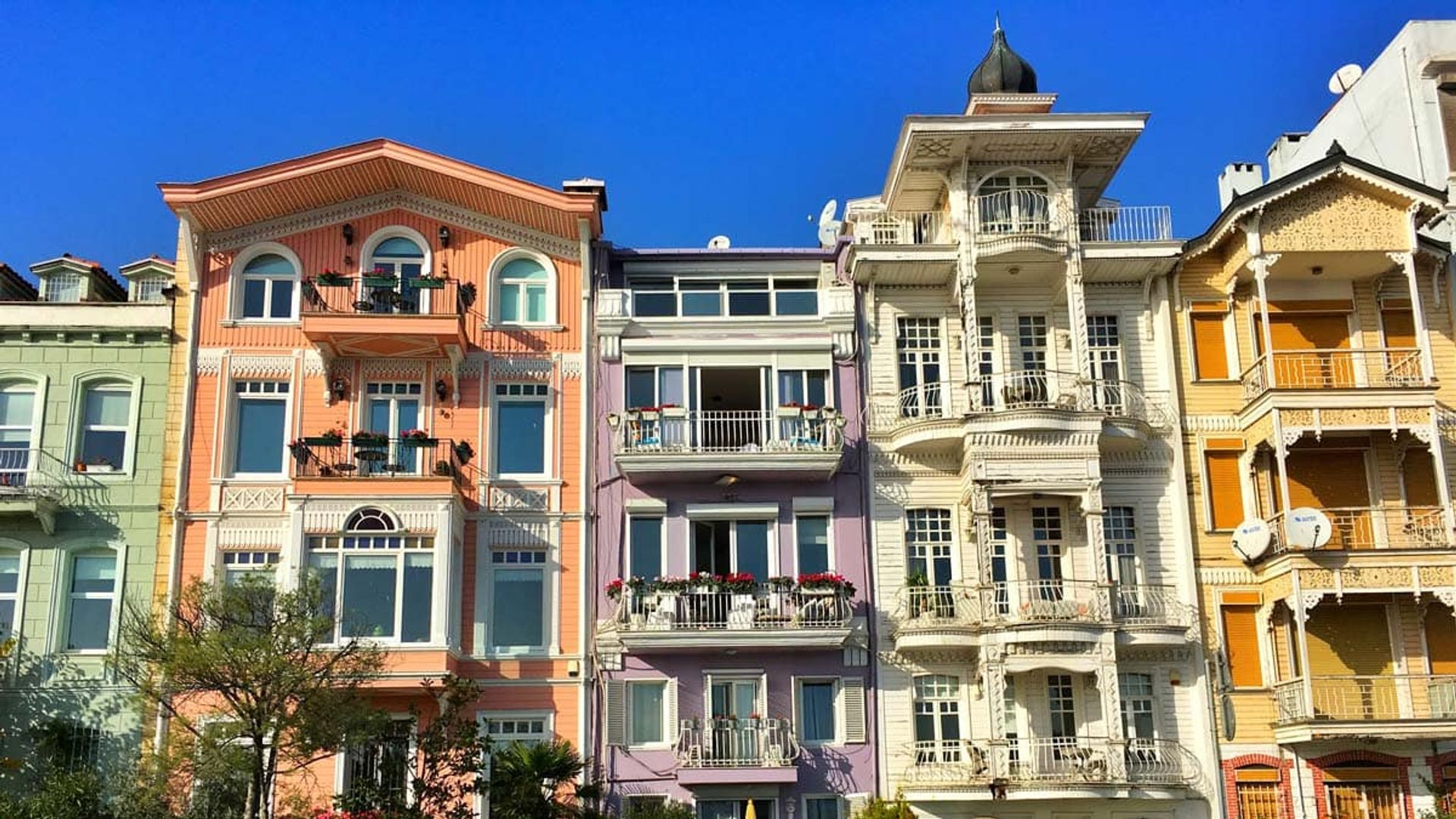
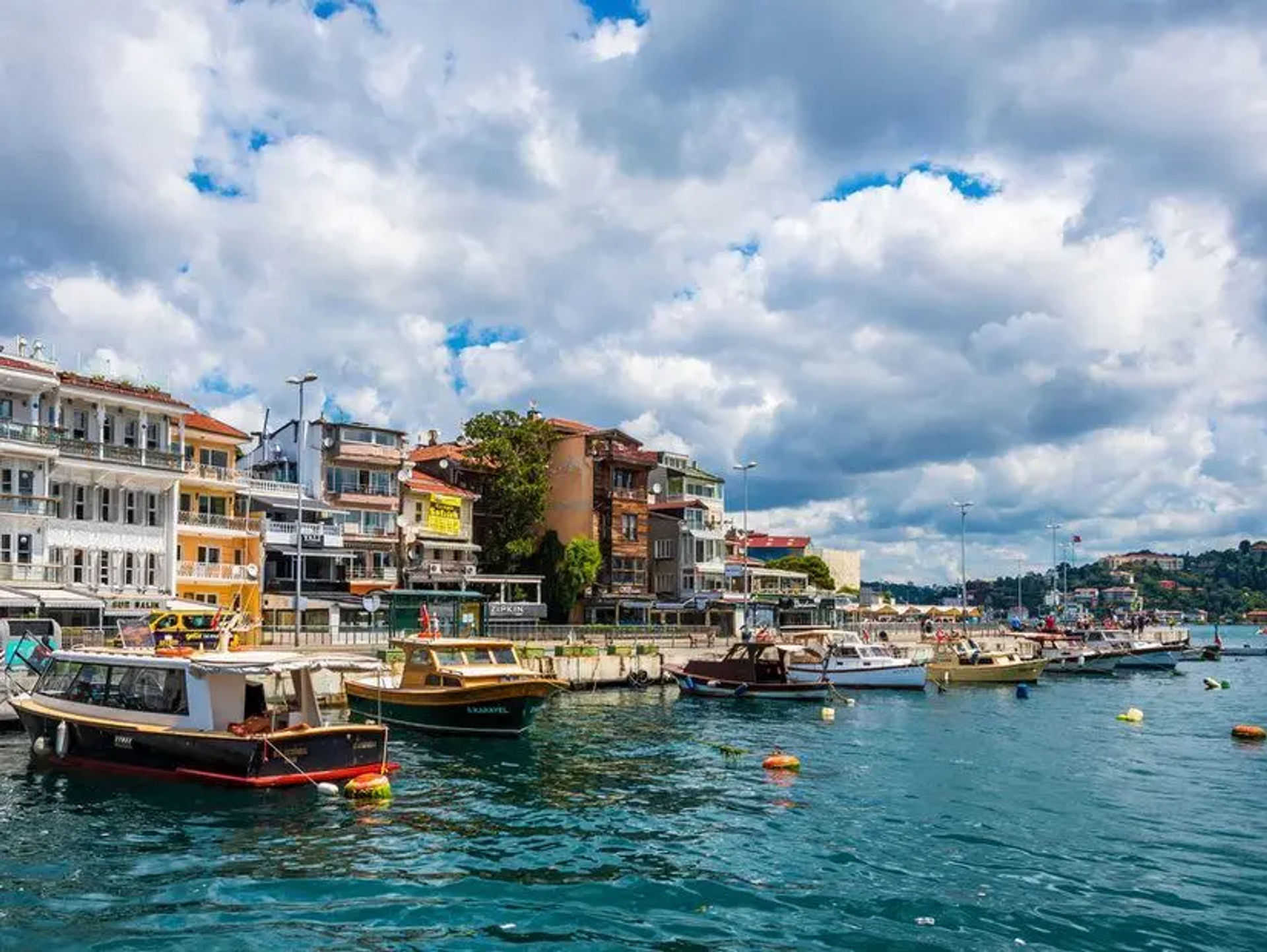
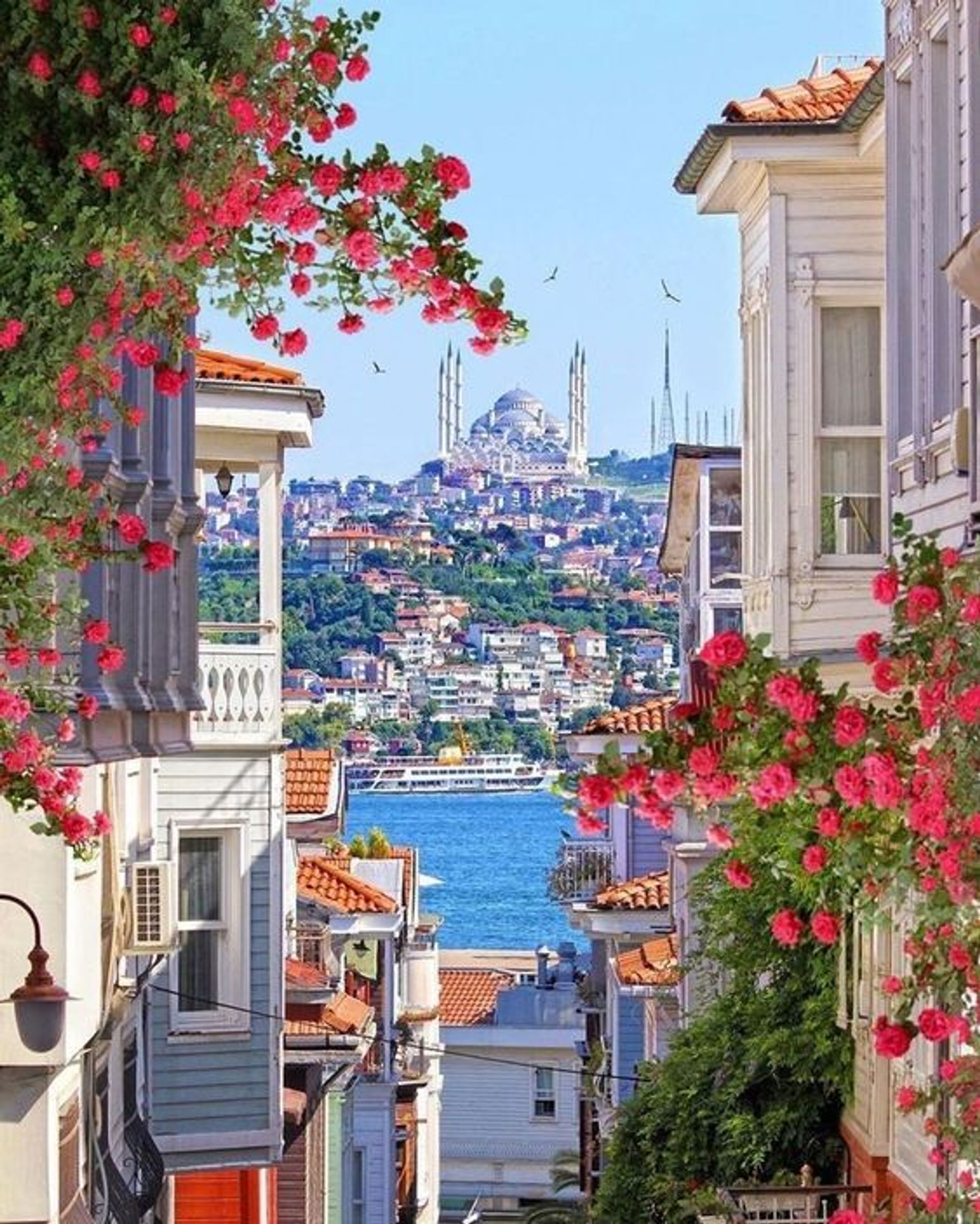

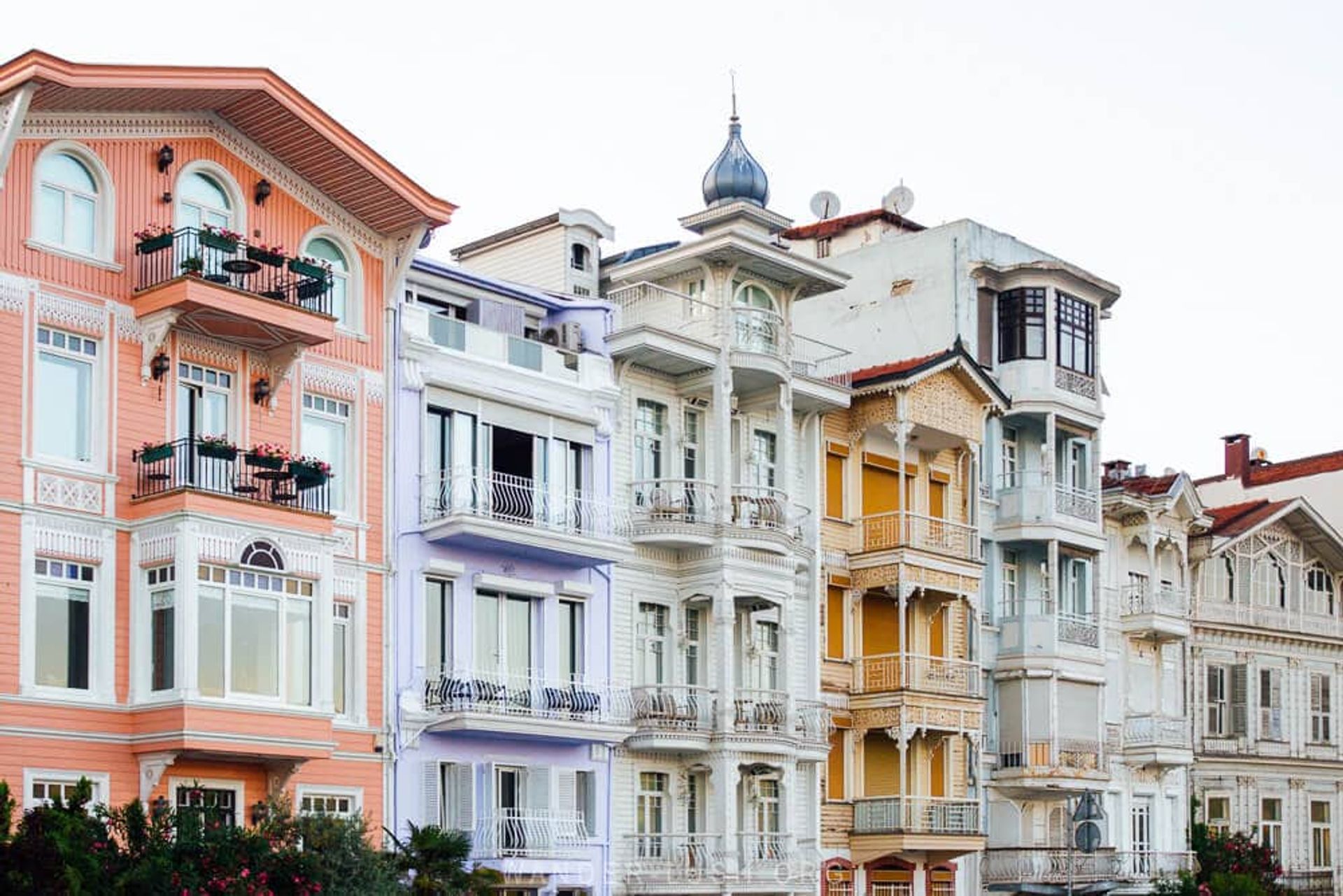





In Arnavutköy, which once had a large Greek and Jewish population, the Taksiarhis Church is a significant structure carrying the traces of the past. The history of the building dates back to the Byzantine period, and it was constructed by Muzurus Pasha. It has an impressive appearance with its dome resembling that of a mosque and a bell tower at the entrance. The church is dedicated to Michael and Gabriel, and thus, it has taken the name Taksiarhis, which means "archangels."
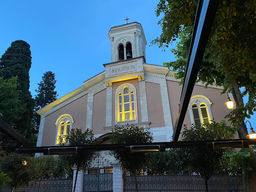
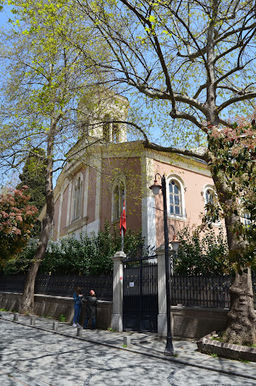
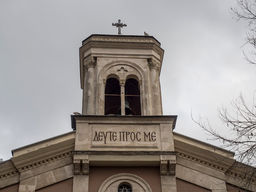
The Ali Vafi Mansion stands out across from Galatasaray Island with its two triangular roofs. Constructed in the Victorian architectural style, this mansion catches the eye with its impressive details and historical atmosphere. Ali Vafi Bey was a banker of Cretan origin. Behind the mansion, the building of Robert College can be seen. Right in front of this mansion, with its shutters painted in burgundy, is the Makbule Atadan Mansion, where Makbule Hanım, Atatürk's sister, lived.
As you head towards Arnavutköy from the coast, the Red Mansion that appears is known as the Halet Çambel Mansion. It was built in the 1830s for the Armenian gardener of Sultan Mahmud II. Halet Çambel, a famous archaeologist who graduated from Robert College located behind the mansion, conducted excavations in one of the most interesting Hittite cities near Osmaniye, Karatepe. Çambel was married to Nail Çakırhan, a recipient of the Ağa Khan Award. She donated the mansion to Boğaziçi University.
In ancient times, due to the limestone quarries on its hill, Arnavutköy was known as Hestai and has undergone many name changes over the centuries. Before it acquired its current name in the 19th century, it was referred to as Horasmoto, meaning "Village of Angels''. There are two theories regarding the name Arnavutköy: According to the first, the district was named after the Albanian construction masters brought by Sultan Abdülmecid, and the roads made by these masters were called "Albanian pavement". The other theory suggests that after the conquest of Istanbul, the district's security was entrusted to Albanian-origin Janissaries, and the name has been a legacy from that time.
Upon arriving in Arnavutköy, it's impossible not to notice the colorful, beautiful wooden buildings. These buildings, which were once mansions, became "road mansions" in the 1980s when a stilted road was constructed in front of them.
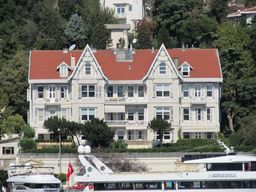
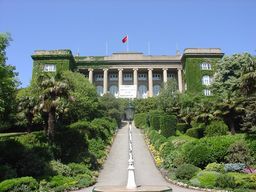
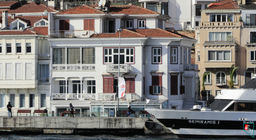
The Arnavutköy Mosque, located by the sea, was built in 1832 by Sultan Mahmud II. It is also known as the Tevfikiye Mosque, and it is believed to have been constructed for the worship of soldiers in the barracks before Muslims settled in Arnavutköy. Right next to the mosque, you will see the Ornate Police Station, a masonry building constructed in the 19th century.
Akıntıburnu in Arnavutköy is one of the places in the Bosphorus with the strongest currents, similar to Kandilli. In the past, to get past the cape, some boats were pulled from the shore with ropes. The 15th-century writer Petrus Gyllius wrote that even crabs, upon reaching Akıntıburnu, would come ashore and continue their way on land!
In Istanbul, there are more than 3,500 mosques, 19 synagogues, and around 400 churches. About 90 of these churches belong to the Greek Orthodox.
The district between Arnavutköy and Bebek is known as Çamlıbahçe. Here, on a dominant hill, you will see the mansion known as İzzetabad Palace. Among those who lived in the building, which is also referred to as the Painted Mansion, was Belgin Doruk.
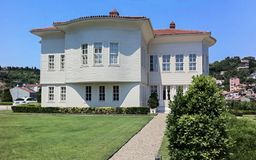
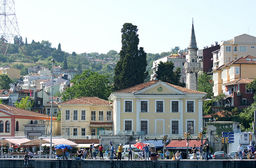
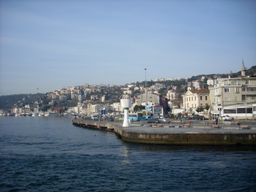
The Egyptian Consulate in Bebek is one of the most impressive structures in the area. The site was originally occupied by the mansion of Dürrizade Esseyyid Mehmed Ataullah Efendi, one of the sheikh ul-Islams of Sultan Abdulhamid I. After the Dürrizades, the mansion passed to Grand Vizier Mehmed Emin Rauf Pasha, and then to Grand Vizier İzzet Pasha. During İzzet Pasha's tenure as the foreign minister, the mansion hosted significant conferences, visits, and invitations. After İzzet Pasha's death, Sultan Abdulhamid II purchased the mansion and gifted it to the mother of the last Khedive of Egypt, Abbas Hilmi Pasha, and the wife of the former Khedive, Tevfik Pasha, Khediva Emine.
This palace-like structure, styled in Art Nouveau, was used as a summer residence until the Khedive was deposed by the British in 1914. According to urban legend, Emine Hanım wanted to donate the building to the Turkish State, but she changed her mind after an official correspondence addressed her as "Emine Hanım from Bebek," and instead, she donated it to the Egyptian State under the condition that it be used as an embassy. After the embassy was moved to Ankara in 1923, this building became a consulate and was thoroughly and successfully restored in 2010.
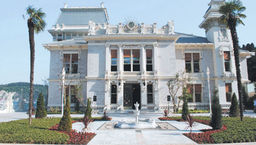
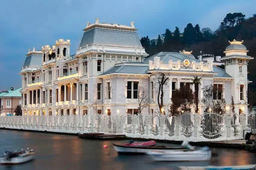
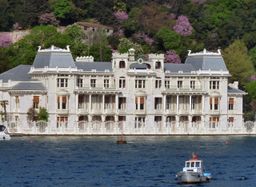
Once a small fishing village, the history of the district stretches back to the pre-Christian era. As for the origin of its name, some suggest it comes from the phrase “as beautiful as a baby,” while others refer to the nickname “Bebek Çelebi,” attributed to the handsome appearance of Bölükbaşı Mustafa Çelebi, who controlled the area after the conquest.
Where Bebek Park is located today, there once stood the Hümayun-u Abad Palace, built by Sultan Ahmed III in the 18th century. The palace was demolished during the reign of Sultan Abdülmecid. Initially used as a summer district, Bebek became a permanent residence with the start of ferry and tram services in the mid-19th century. Today, Bebek is undeniably one of the most popular districts along the Bosphorus, a place to see and be seen.
Adjacent to Bebek Park stands the Hümayun-u Abad Mosque, also known as Bebek Mosque, built in 1912 by Kemaleddin Bey, a pioneer of the First National Architectural Movement, featuring a quite classical style.
Heading from Bebek to Aşiyan, one notices the Narlıyan Apartment, a white elegant building with oval balconies. Between Ayşe Sultan and the Arifi Pasha Grove lies Boğaziçi University. Also, between Bebek and Aşiyan, one can find the Kayalar Mosque, a rare example of 17th-century wooden mosques in Istanbul.
Next to the mosque is the Yılanlı Yalı (Serpent Mansion), built on stone walls in the 18th century. Sultan Mahmud II was very fond of the mansion owned by the Foreign Minister (Hariciye Nazırı) Mustafa Efendi and mentioned this to their mutual friend Said Efendi. To protect his friend and the mansion, Said Efendi fabricated a story that the mansion was infested with snakes. This prevented the sultan from acquiring it, but the mansion has since been known as “Yılanlı Yalı.” After a fire, part of the mansion was restored to its original state, while unfortunately, the other part was turned into a concrete apartment building.
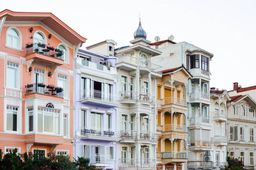
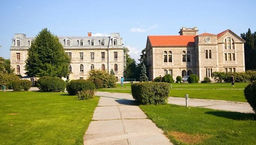

As you move from Bebek towards Rumeli Hisarüstü, atop the hill, you'll see the small house built by the poet Tevfik Fikret, known for his opposition to the government. Fikret, who was a professor of Turkish Literature at Robert College, was buried in the garden of his house in 1961. The house, turned into a museum in 1945, displays various items including the magnificent "Fog" painting by the last caliph Abdülmecid Efendi, inspired by Tevfik Fikret's poem of the same name. "Aşiyan" means "bird's nest" in Persian.
If you visit the area in April, you can see the surroundings filled with Judas trees. The Judas tree is unique to Istanbul and can be found in every corner of the city. Known in Western languages as "Judas-tree," it has an interesting story related to Judas Iscariot, one of Jesus Christ's apostles. The tree is famous for its legend that after Judas betrayed Jesus and hanged himself from a tree, the white flowers turned to a red-pink color in shame. Thus, the legend of the Judas tree was born.
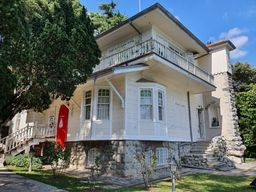
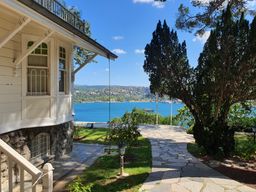
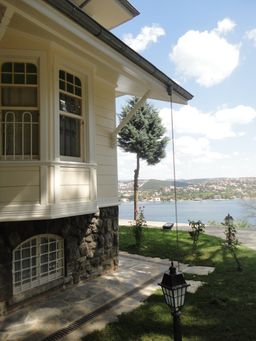
Rumelian Fortress
The area where Rumeli Fortress is located is one of the narrowest points of the Bosphorus, where the distance between Asia and Europe drops to approximately 800 meters. To exploit this strategic location, the Ottoman Empire built two fortresses in this region: one is the Anatolian Fortress constructed by Bayezid I (Yıldırım Bayezid), and the other is the Rumeli Fortress commissioned by his grandson, Fatih Sultan Mehmed.
This fortress, consisting of 13 towers, is one of the most strategic structures built during the conquest of Istanbul. Although the architect of the fortress was Mimar Müslihiddin, the sultan closely supervised every stage of construction. From the perspective of the sea, he entrusted the right section to Saruca Pasha and the left section to Zağanos Pasha. He assigned the responsibility of the coastal tower to Halil Pasha, while he personally oversaw the section facing the sea. The towers bear the names of the pashas who supervised their construction.
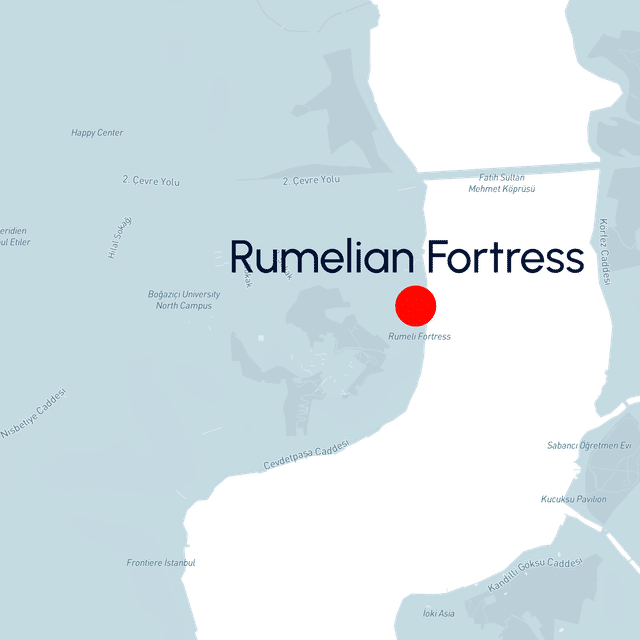
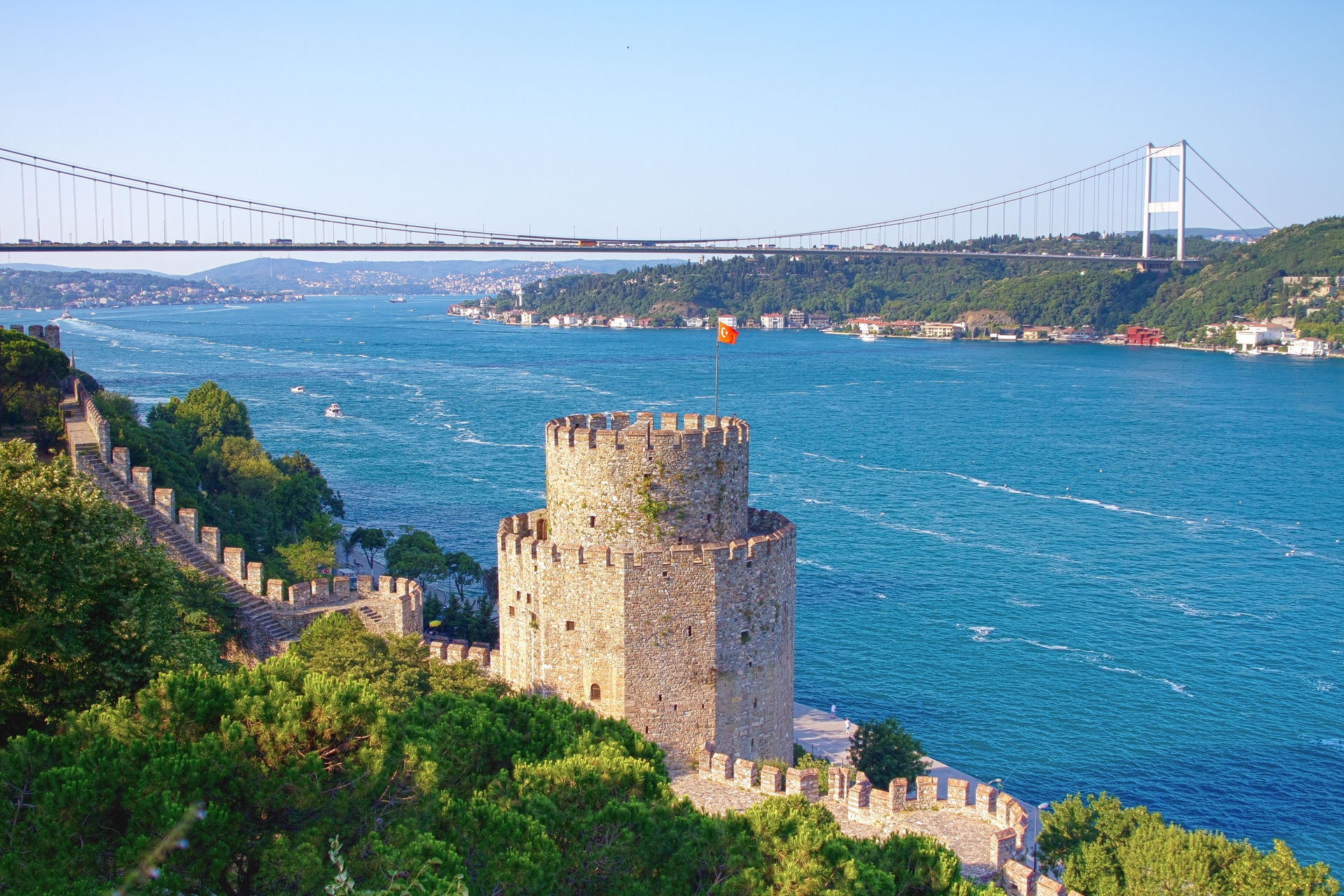
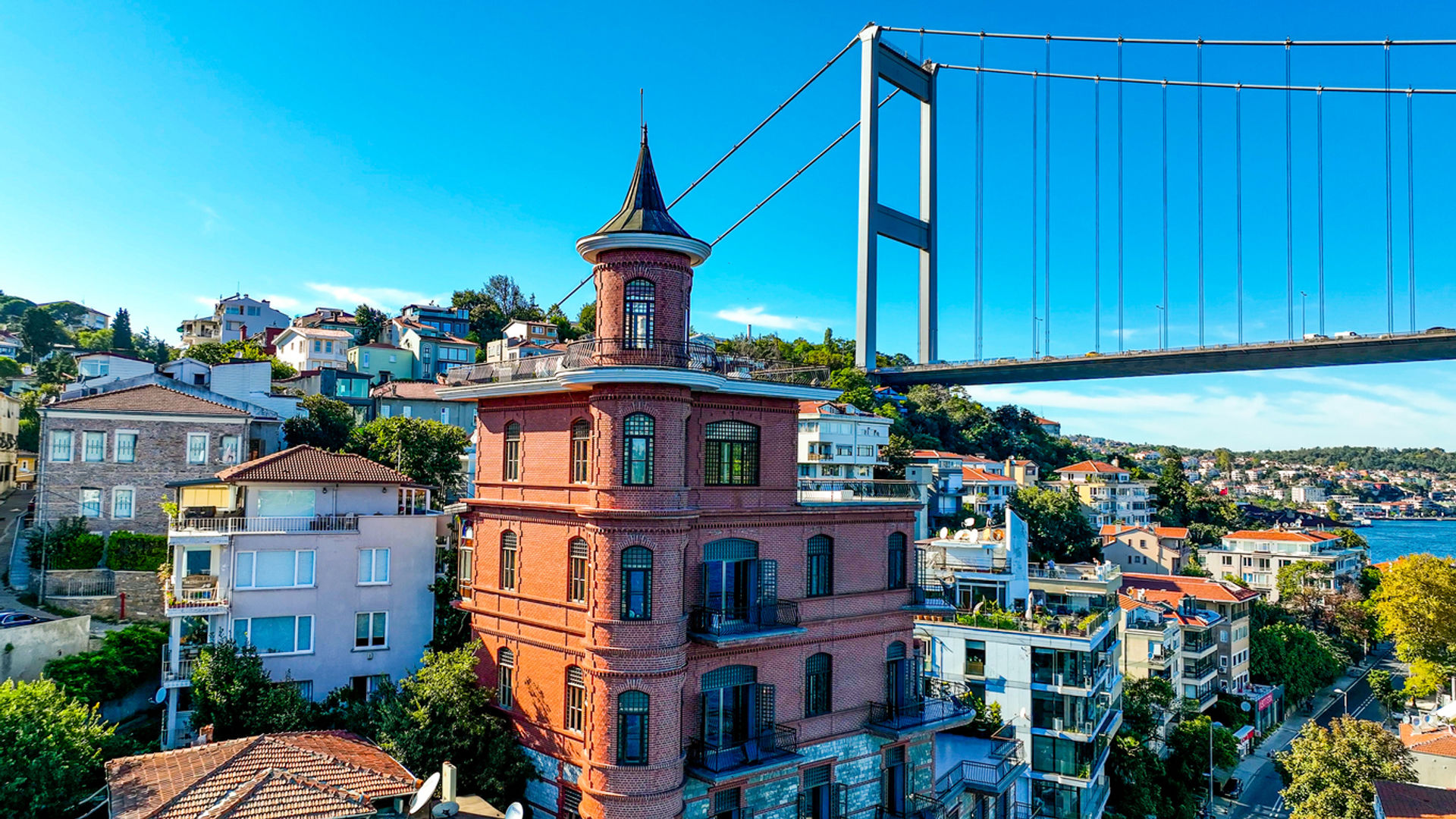
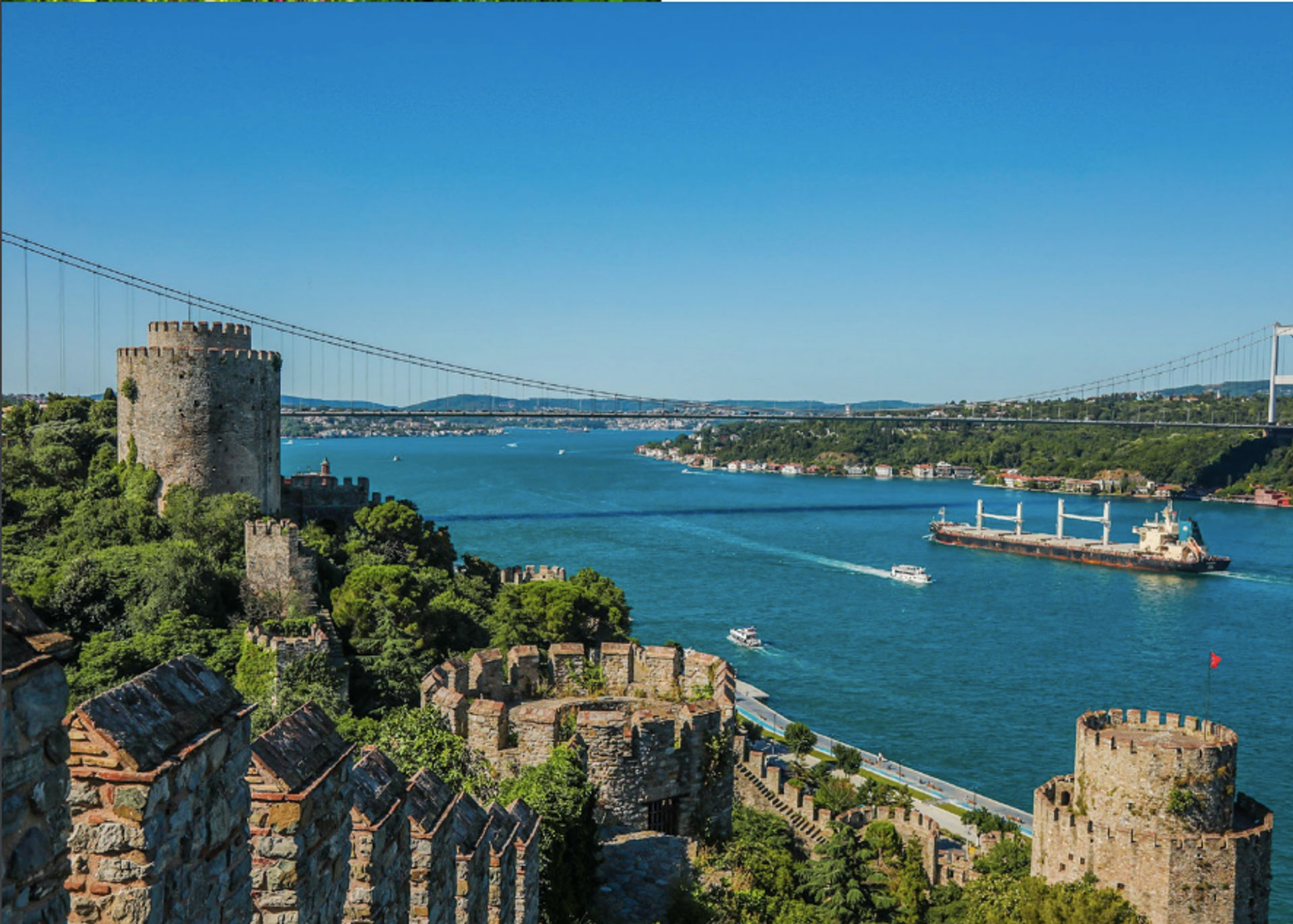
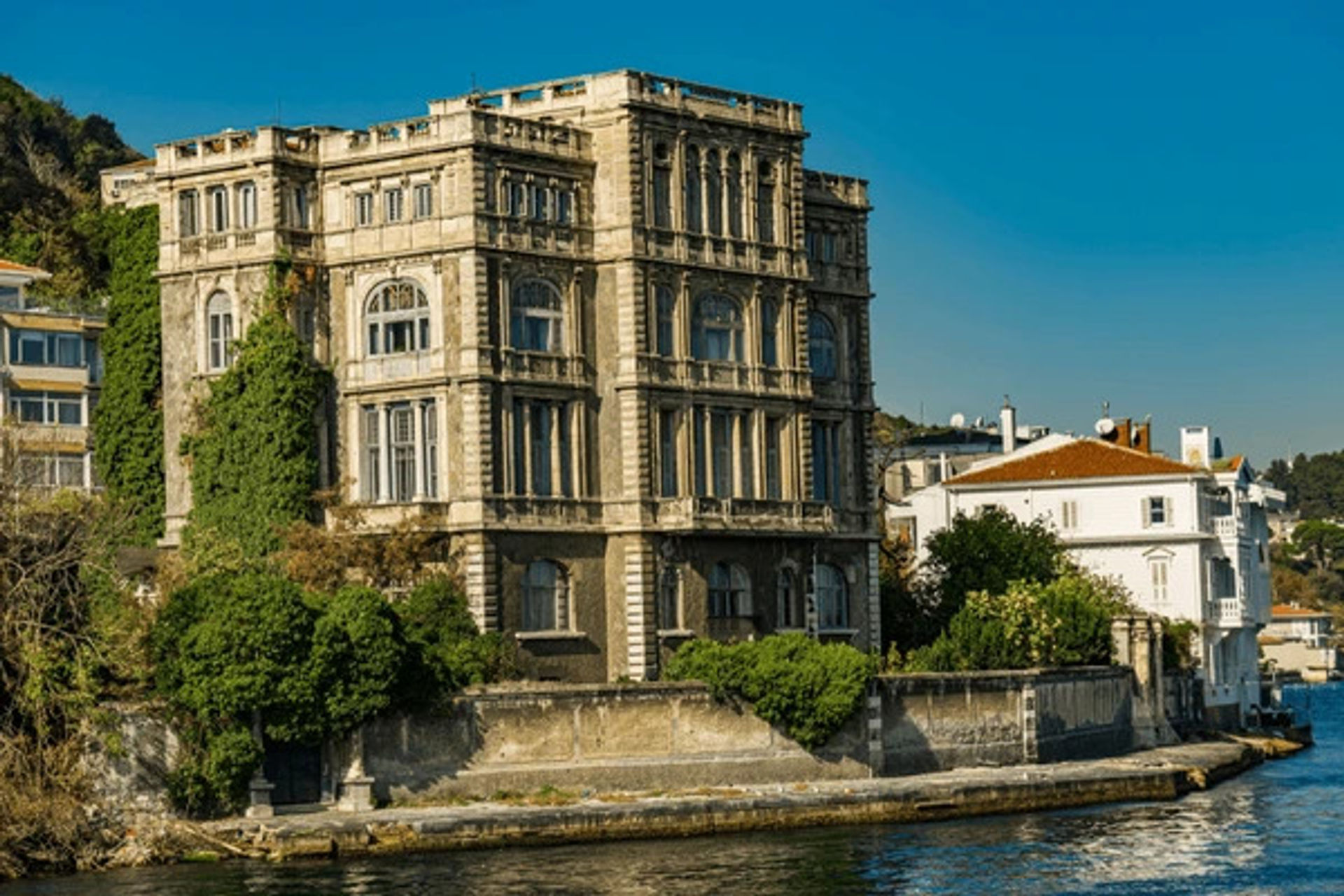
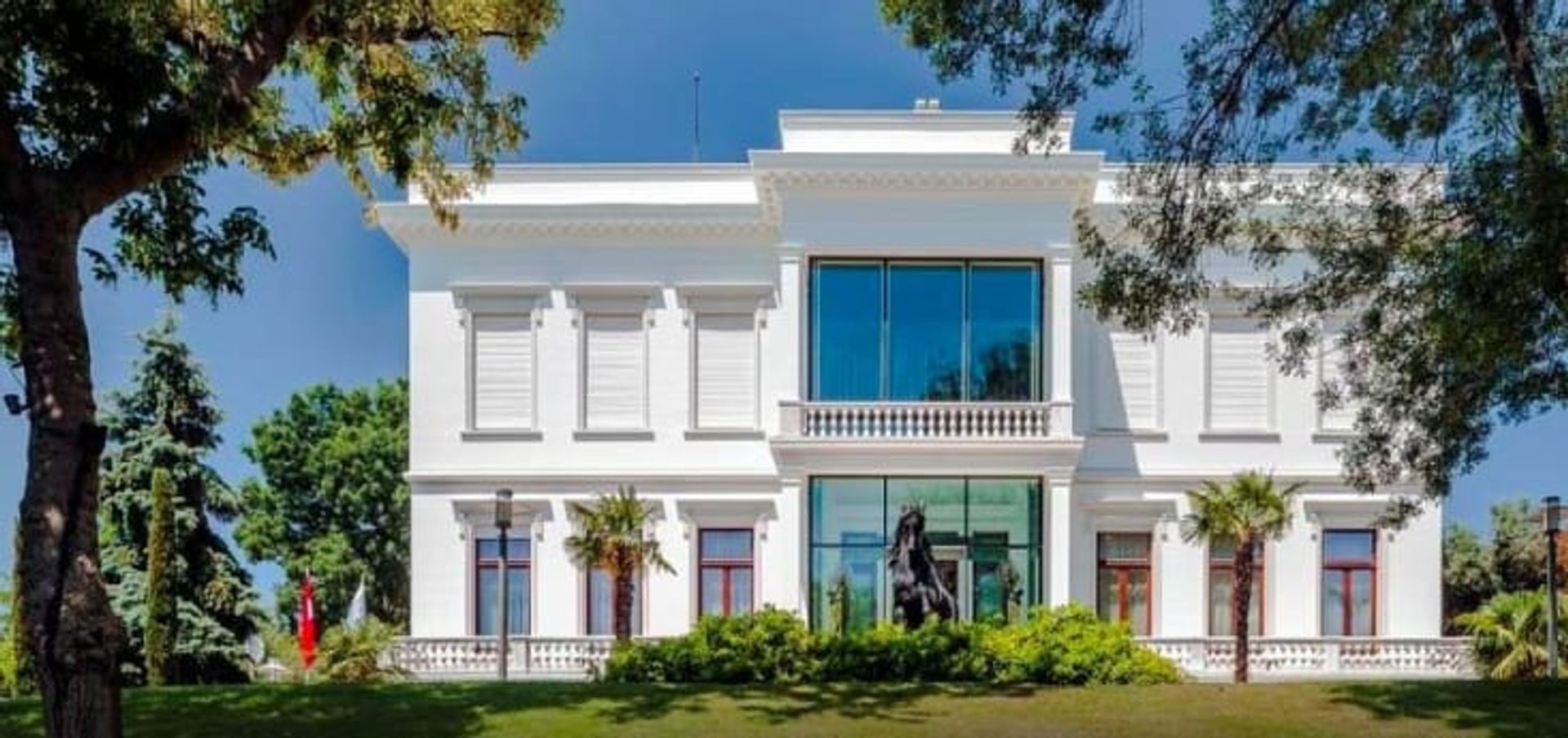





The Hacı Kemalettin Mosque, distinguished by its red-and-white striped facade, was originally built as a small mosque. Later, it was converted into a larger mosque by Sultan Mahmud I.

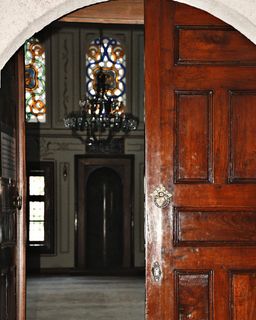
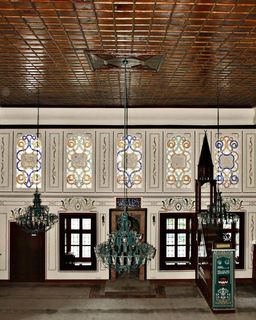
The Ali Pertek Mosque, with its exterior featuring neatly arranged stone-brick mixed walls without plaster, is known among the locals as the "Gentlemen's Mosque" because prominent figures and the wealthy used to frequent this mosque more than others in the neighborhood.
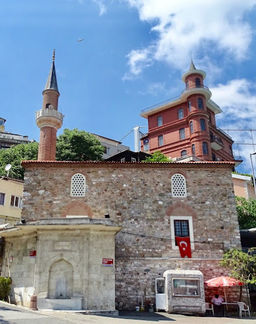
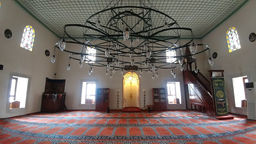
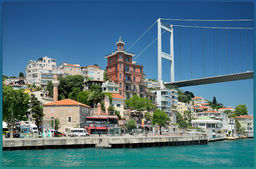
One of the active places of worship in the Rumeli Hisarı area, which was once densely populated by Armenians, is the Surp Santuht Church. The church building originally had a wooden architecture when first constructed. This structure stands out with its arched windows and bell tower.
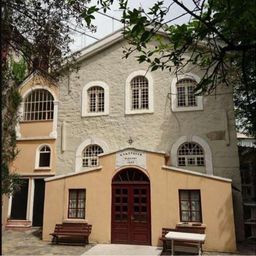

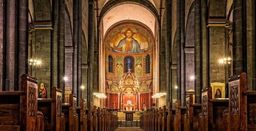
Positioned at one of the most beautiful points along the Bosphorus, this mansion with towers, made of red brick, was initially commissioned by Yusuf Ziya Pasha, the Chief Aide-de-camp to the Khedive of Egypt, Abbas Hilmi Pasha. However, the outbreak of World War I halted its construction. Yusuf Ziya Pasha lived in the mansion with his second wife, Nebiye Hanım, and her three daughters from her first marriage, until his death in 1926. Known among the locals as "Perili Köşk" (Haunted Mansion) due to its unfinished construction, the building is now home to Borusan Holding. In a wise decision made in 2011, they opened the building as a museum called Borusan Contemporary on weekends. Both the exhibited artworks and the view are magnificent.
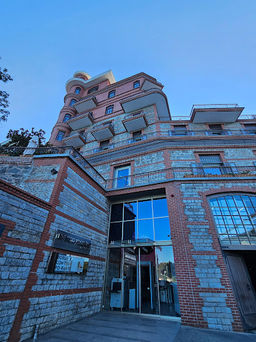
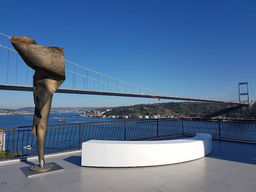
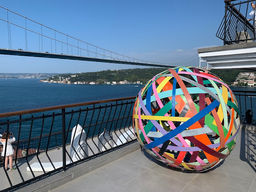
Located just beneath the bridge, this elegant, stone mansion was designed by Alexandre Vallaury for Zeki Pasha at the beginning of the 20th century. Zeki Pasha was one of Sultan Abdulhamid II's loyal men and served as the Marshal of the Tophane Arsenal for 17 years. The mansion later changed hands, becoming the property of Sabiha Sultan, the daughter of the last Ottoman Sultan Vahdettin, and her husband Ömer Faruk Efendi. Ömer Faruk Efendi, the son of the last Caliph Abdülmecid Efendi, was the father of Neslişah Sultan, who was born in this mansion. Ömer Faruk Efendi and his family lived in the mansion until the dynasty was exiled. This four-story building, one of the rare stone mansions along the Bosphorus, has more than twenty rooms. At one time, Ali Kemal, the grandfather of Boris Johnson, also lived in this mansion. The mansion, listed for sale at a record price, is considered one of the most expensive houses in the world.
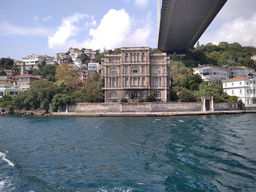

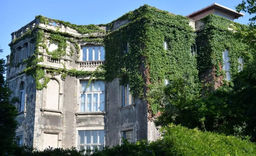
The Mediha Sultan Palace, constructed in the Neoclassical style, stands out with its structure of cut stone blocks in a light pink hue. Today, it serves as the Metin Sabancı Baltalimanı Bone Diseases Hospital. The palace was designed in the mid-19th century by Architect Sarkis Balyan for Mustafa Reşid Pasha. Mustafa Reşid Pasha, who was appointed as Grand Vizier six times during Sultan Abdülmecid's reign and was a pioneer of the Tanzimat Reforms, had a son named Galip. Galip married Fatma Sultan, daughter of Sultan Abdülmecid, and they lived in this palace. Later, another daughter of Abdülmecid, Mediha Sultan, married Damat Ferit Pasha, and the couple became the new owners of the palace, which was then named after the Pasha's wife. The Baltalimanı Treaty between the British and the Ottomans was signed here in 1838, lifting some of the commercial restrictions between the two countries.
The name Baltalimanı comes from Baltaoğlu Süleyman Bey, the Grand Admiral (Kaptan-ı Derya) who constructed ships for Mehmed the Conqueror during the siege of Istanbul. The "Balta" (Axe) nickname was given to the Grand Admiral because of the numerous trees that had to be cut down to build these ships.
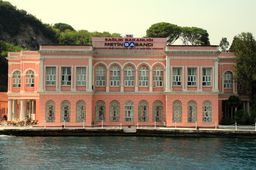
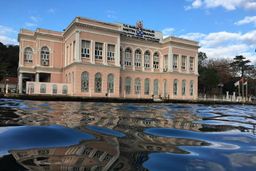
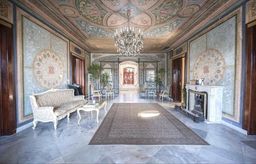
Boyacıköy is one of the most delightful corners of the Bosphorus. In the 18th century, Sultan Selim III relocated families from Kırklareli to Istanbul for the development of the art of dyeing and the production of the needed fezzes, settling them between Emirgan and Baltalimanı. From that day to this, one of the most beautiful villages along the Bosphorus has been known as Boyacıköy. Hidden among its streets are wooden houses and beautiful examples of Ottoman civil architecture, and the Muhayyeş Grove is located on the slopes of Boyacıköy. The grove gets its name from Misbah Muhayyeş, who moved from Beirut to Istanbul and purchased the Pera Palace Hotel.

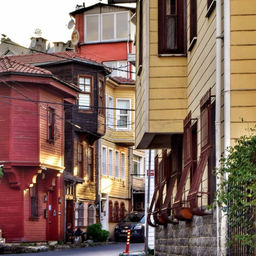
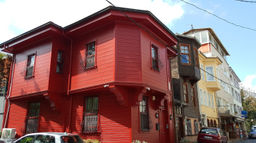
Before you reach Emirgan Square, you will see the Hamid-i Evvel Mosque, which resembles a house more than a mosque. Constructed in 1782 by Sultan Abdülhamid I, the fountain in the square next to the mosque was also commissioned by his wife. The mosque, which underwent a beautiful restoration in 2009, is accompanied by a Hünkâr Kasrı (Imperial Pavilion).
Next to the mosque, there is the Şerifler Mansion, an elegant structure from the 18th century. The mansion was likely built in place of Emir Güne Han's Divanhanesi in the 17th century. During the expropriation in 1945, its Harem section was demolished, cutting off its connection to the shore. This oldest mansion on the European side of the Bosphorus once belonged to Sharif Hussein of Mecca (the ruler of Mecca and Medina). In return for inciting the Sharifian Arabs against the Ottoman Empire, he demanded recognition of his own kingdom from the British. Collaborating with Lawrence of Arabia, he revolted against the Ottoman State in June 1916. His sons, Abdullah became the Emir of Jordan in 1921, and Faisal became the King of Iraq. After the abolition of the caliphate in Turkey in 1924, Sharif Hussein declared himself Caliph! He lived in exile in Cyprus until 1930. The building is currently used by the Union of Historical Towns and the ÇEKÜL Foundation.
The name Emirgan comes from an Iranian nobleman named Emir Güne Han. During the Revan Campaign in 1635, Emir Güne surrendered his fortress to Sultan Murad IV without a fight. The Sultan brought him to Istanbul and gave him the name Yusuf Pasha. The Sultan then awarded Yusuf Pasha a 500,000 square meter area, known today as Emirgan Grove, which was referred to as the Feridun Bey Gardens at the time. Evliya Çelebi, who lived during the same period, described the grove in poetic language, where the two close friends enjoyed many pleasant conversations. After the death of Murad IV, Sultan Ibrahim executed Yusuf Pasha. In the 19th century, Sultan Abdülaziz gave the grove to Khedive Ismail Pasha of Egypt. After constructing a magnificent mansion on the shore, Ismail Pasha also had the Yellow, White, and Pink pavilions built in the grove. Ismail Pasha, who incurred significant debts while ruling Egypt, was deposed in 1879 under pressure from the French and British and spent his final days in Emirgan. Since 1943, it has been used as a public park under the Istanbul Municipality. The grove is especially vibrant during the Tulip Festival in the spring months.
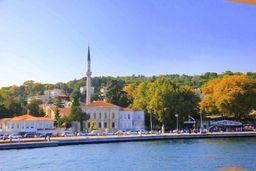
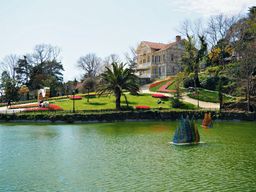
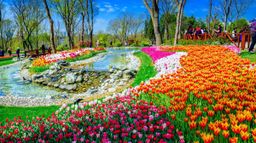
Since 2002, the Sakıp Sabancı Museum has held a special place in the city's art scene, located in a magnificent building also known as "Atlı Köşk" (Equestrian Villa) due to the horse statue at its entrance. The mansion, situated on land given by Sultan Abdülmecid to Khedive Mehmed Ali Pasha in the 19th century, was later purchased and renovated by another Egyptian prince to its current condition. It was bought by Hacı Ömer Sabancı in 1951. After Hacı Ömer Sabancı's death, his son Sakıp Sabancı moved into the mansion, and it served as a home to one of Turkey's most important industrialist families until 1998. The museum, which houses a rich collection of calligraphy and paintings, frequently features exhibitions of great names like Rembrandt, Rodin, Dali, and Picasso, alongside contemporary artists.
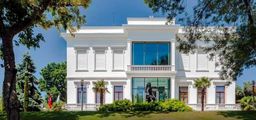
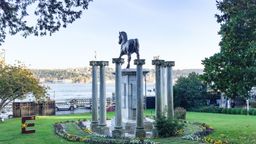
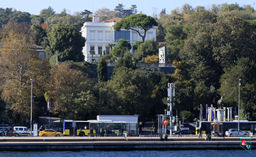
Anatolian Fortress
Yıldırım Bayezid, who commissioned the construction of the Anatolian Fortress, was unable to conquer Istanbul due to uprisings in the city. Later, his grandson, Fatih Sultan Mehmet, fulfilled this dream at the age of 21. Today, the Anatolian Fortress is a district that preserves its historical texture and offers stunning views of the Bosphorus. Together with Küçüksu Stream, Göksu Stream, known as "Asia's Sweet Waters," adds a distinct atmosphere to the Anatolian Fortress.
When thinking of the Asian shores of the Bosphorus, districts like Kanlıca, Beykoz, and Kandilli come to mind first. With its pleasant parks, cafes, and restaurants, the Anatolian Fortress offers its visitors the opportunity to relax alongside some of the most beautiful views of Istanbul.

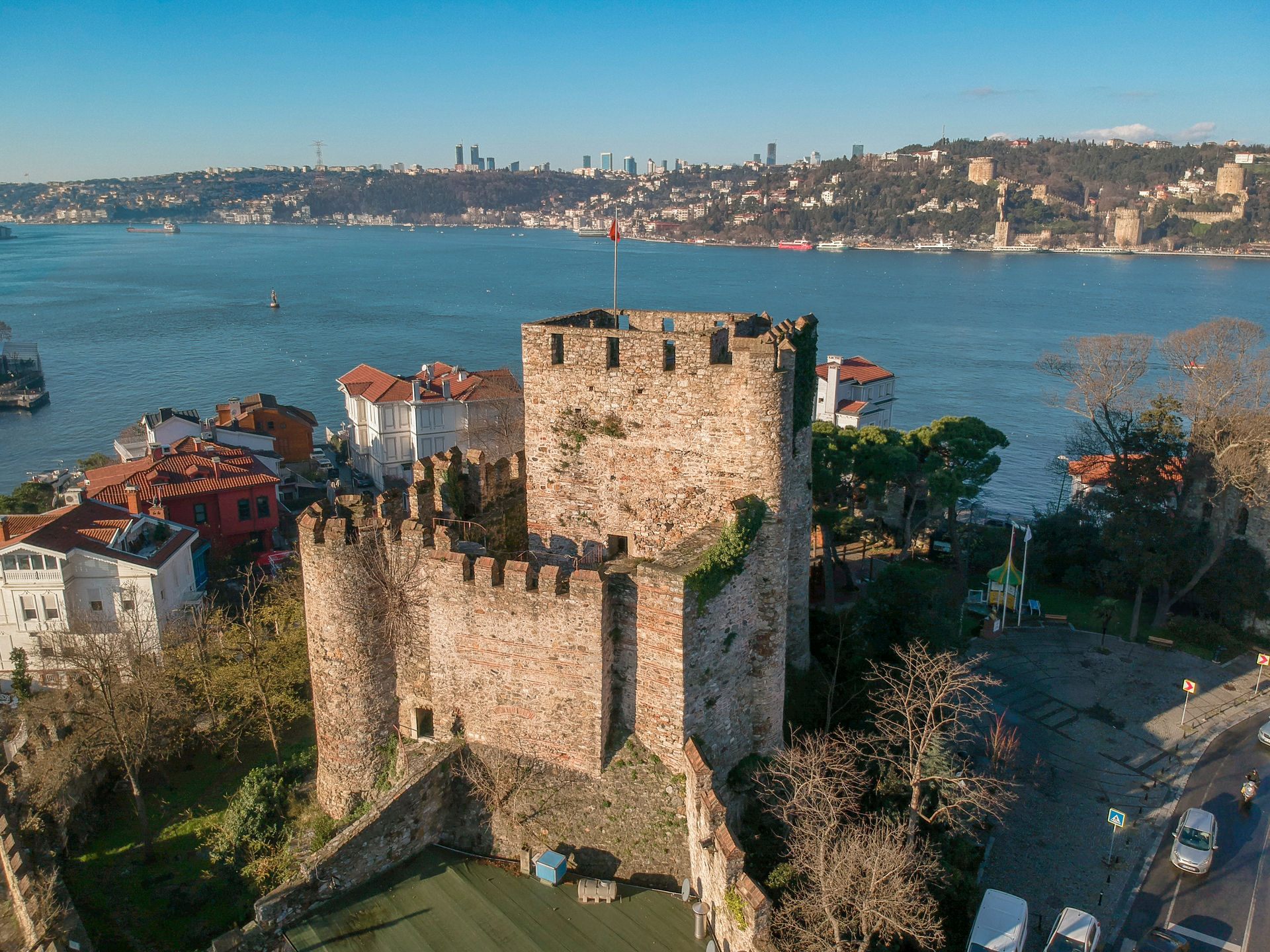
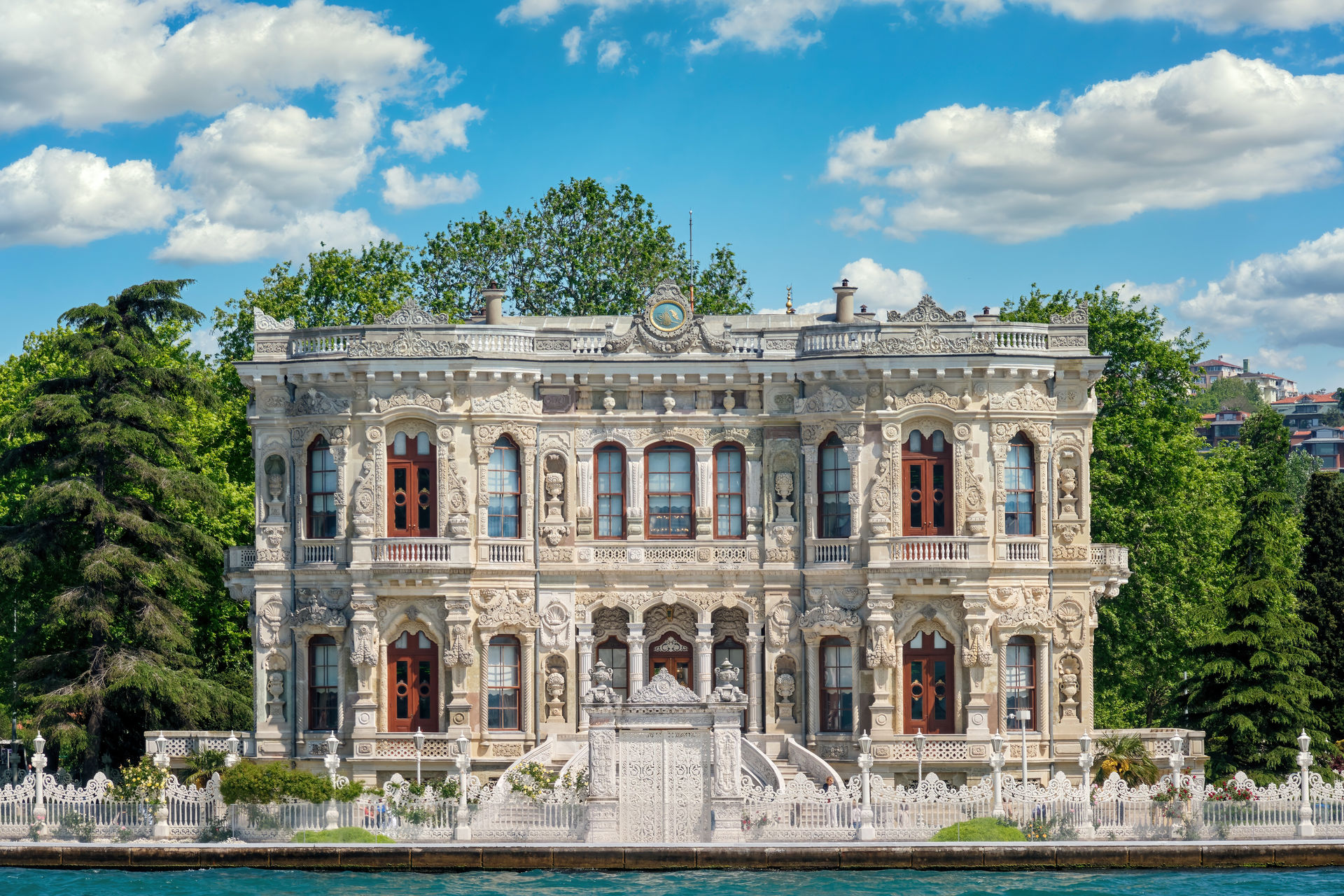
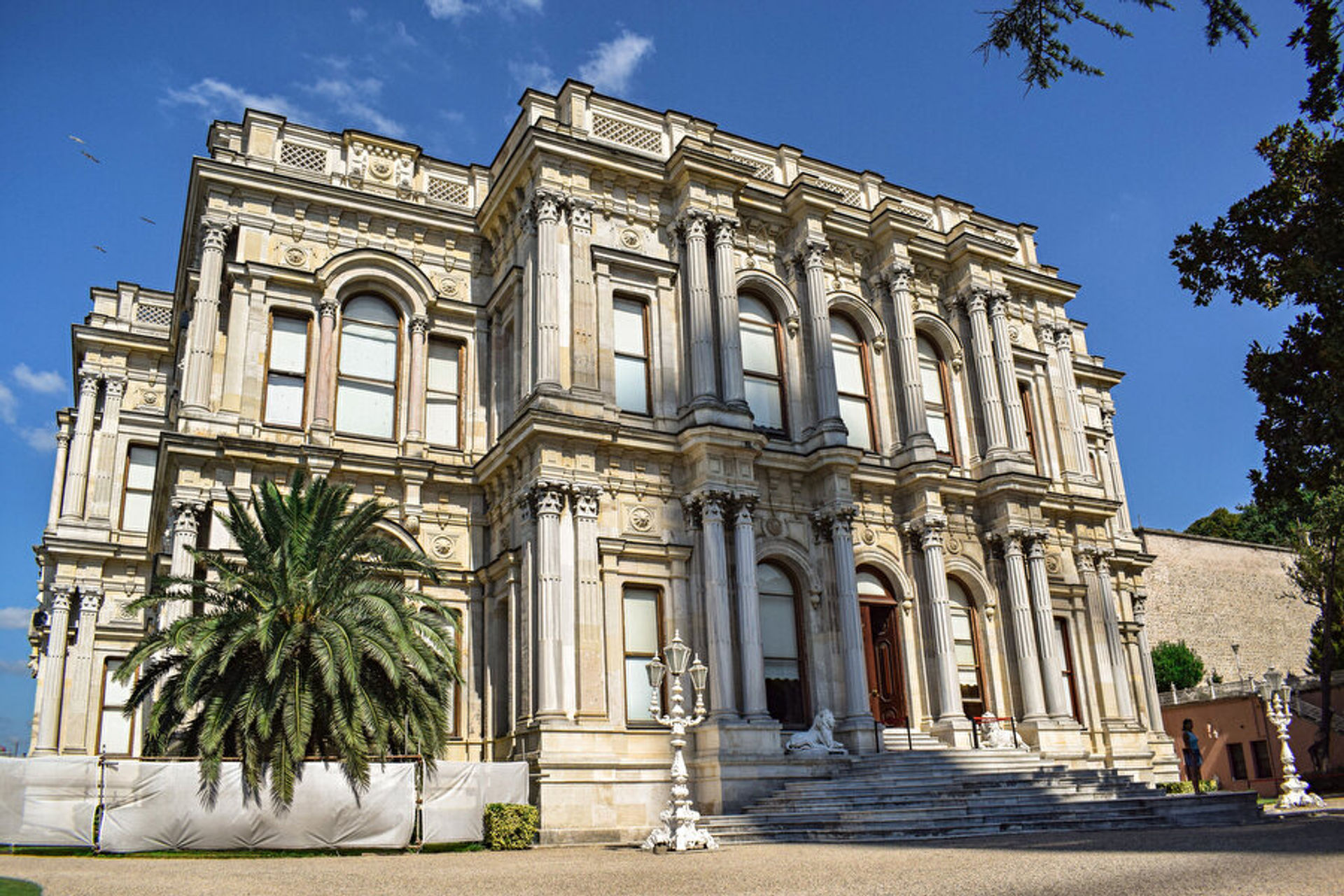
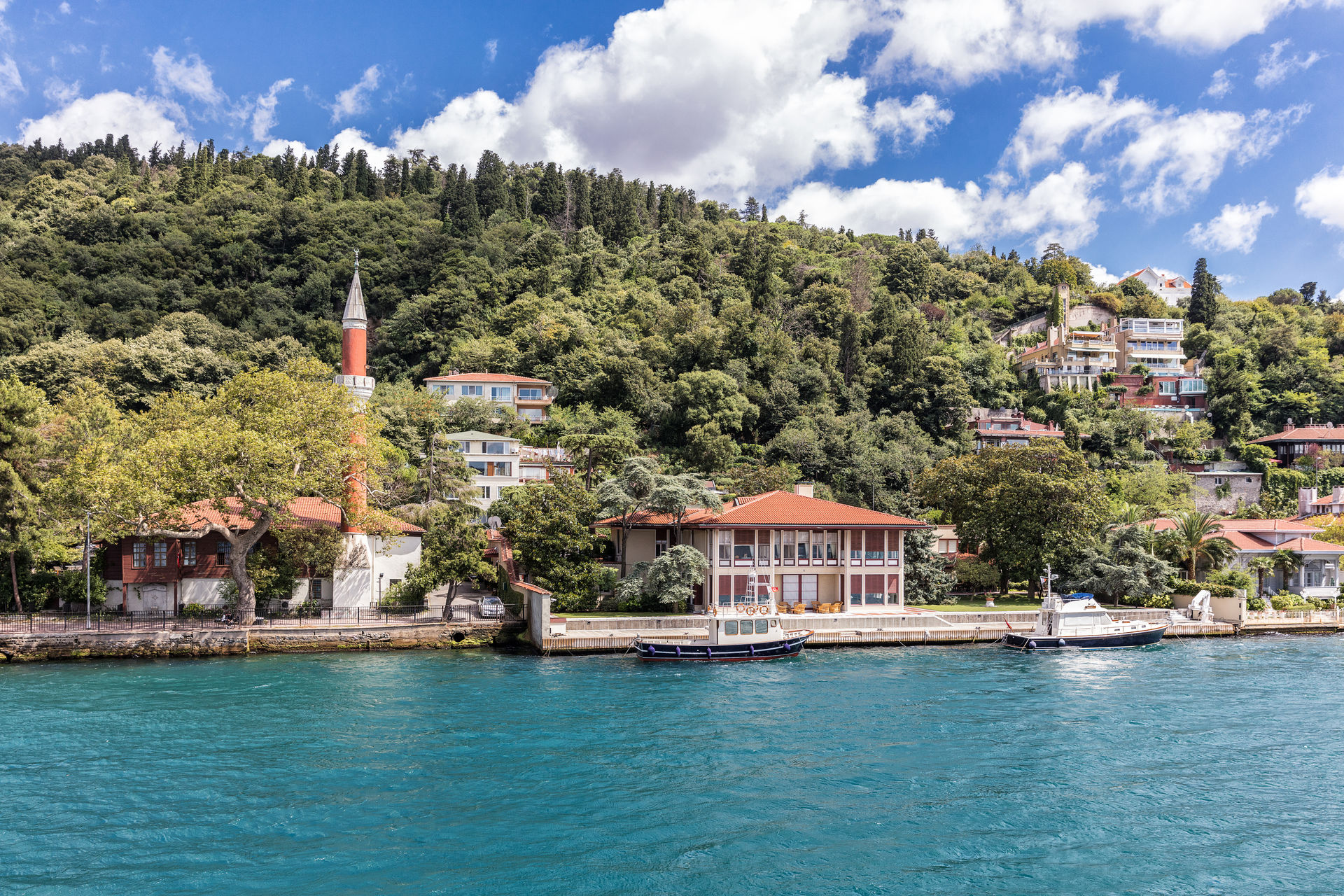
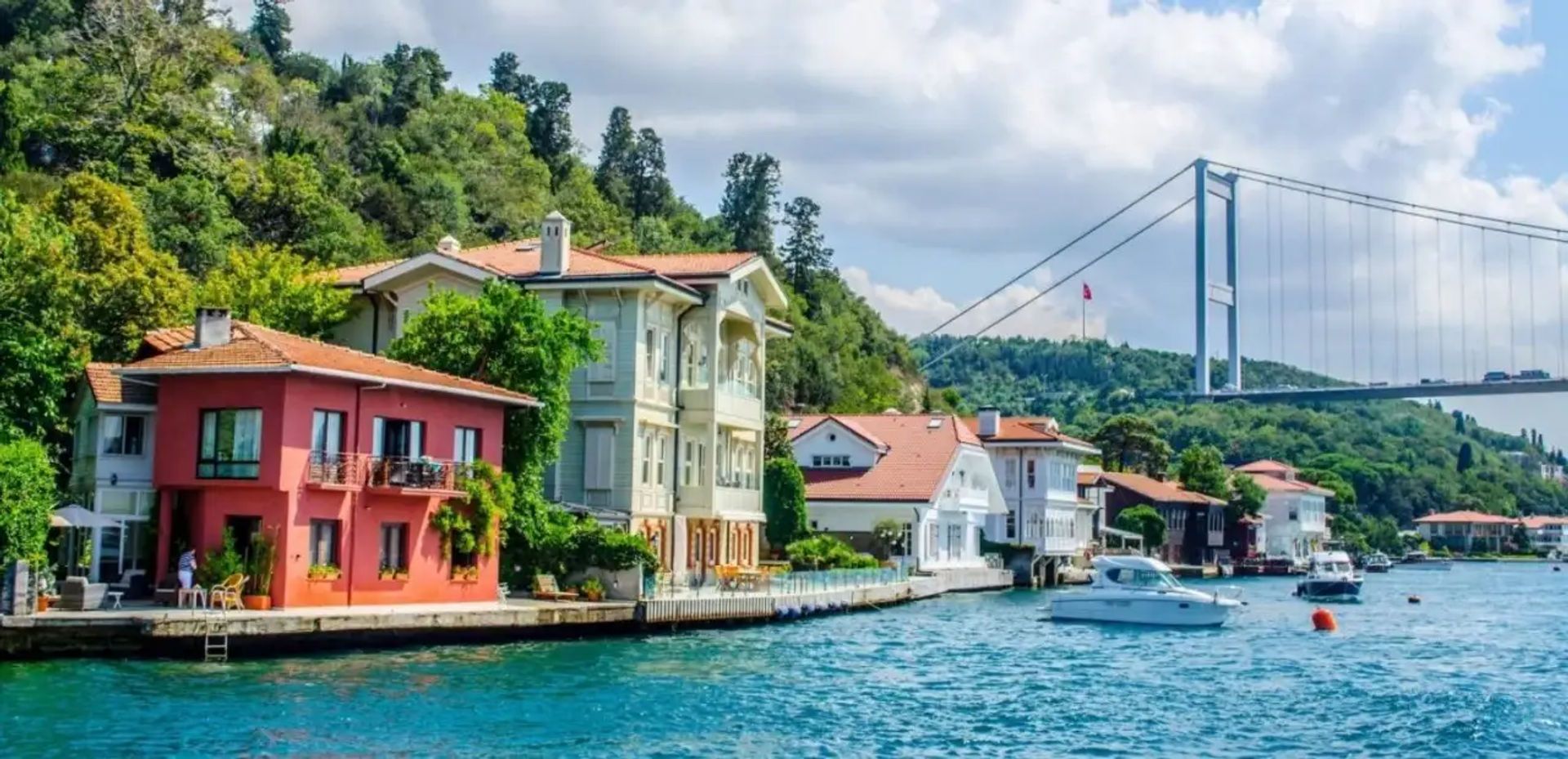





Though Kanlıca is first and foremost known for its yogurt, this beautiful district stands out with its green atmosphere and clean air. Located just beneath the Fatih Sultan Mehmet Bridge, it draws attention with its mansions, Mihrabad Grove, and the elegant Hıdiv Pavilion built by the last Egyptian Governor Abbas Hilmi Pasha. As you may recall, the magnificent Egyptian Consulate building on the opposite shore in Bebek was also related to Hıdiv, belonging to his mother, Khediva Emine.
In the past, full moon celebrations were held in Kanlıca Bay, where people would set out on moonlight cruises in their boats. Just under the second bridge, you can spot the Lacivert Restaurant, known for its distinctive twin roofs. This structure, which has appeared in numerous Turkish films, now serves as a luxury restaurant.
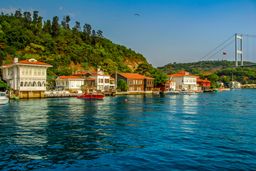
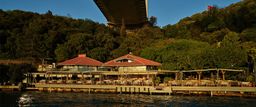
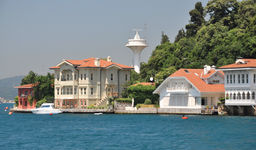
The Salih Efendi Mansion is notable for its red facade. Salih Efendi, who graduated from the first medical school opened during Sultan Mahmud II's reign and served as the chief physician to three sultans, owned it. Unfortunately, the mansion hosted many TV series and movies but suffered significant damage in a ship accident in 2018.
Amcazade Hüseyin Pasha Mansion is one of the oldest mansions on the Bosphorus. According to stories, the Treaty of Karlowitz was signed in this mansion in 1699.
The Marquis Necib Bey Mansion stands out with its white facade and yellow details, appearing as if it consists of stacked blocks at first glance. The original owner, a French Marquis, converted to Islam to marry Melike Aliye Hanım, taking the name Ahmet Necib. The elegant, white, two-story Nuri Pasha Mansion can be seen nearby.
Another notable white mansion is the Zarif Mustafa Pasha Mansion, which was originally a service building for the staff but is now highly valued. It fits the description of being right by the sea, or "Lebiderya," and contains a 300-year-old historical bathhouse within.
One of the larger mansions of Anatolian Fortress is the Bahriyeli Sedat Bey Mansion, known for its brown shutters and also as the Magnolia Mansion. The white mansion nearby is known as the Ali Rıza Bey Mansion.
Right in front of Anatolian Fortress, you can see the Commodore Remzi Bey Mansion. Former Prime Minister Erdal İnönü once lived in this mansion.
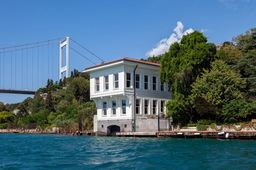
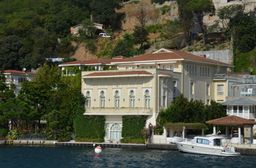
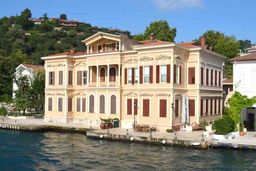
Göksu, historically famous for its leisurely boat rides, flows into the sea where the Sabancı Teacher's House is located. One of the largest and most expansive mansions along the Bosphorus, the Kıbrıslı Mansion, lies just ahead.
Flanking the Kıbrıslı Mansion on both sides is the white Abud Efendi Mansion. Behind the mansion, adorned with columns in its garden, are the maroon-colored Count Ostrorog Mansion and the white, splendid Ricardo Pulos Mansion, with the Cemile Sultan Grove extending behind them.
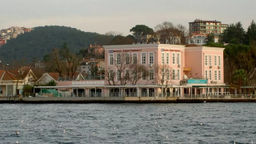

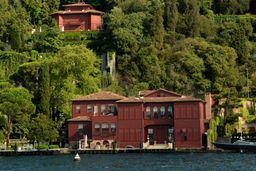
Küçüksu Pavilion's history extends back to the Byzantine Period. During the Ottoman Era, it emerged as one of the Sultan's private gardens, known as "Kandil Bahçesi." It's known that Sultan Murad IV was fond of Küçüksu and its surroundings, naming the area "Gümüş Selvi" (Silver Cypress). The pavilion was designed for daily use, which is why it does not contain any bedrooms. It was utilized for day trips for hunting or picnicking. For overnight stays, the Dolmabahçe and Beylerbeyi palaces were preferred.
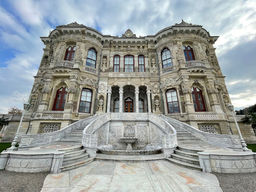
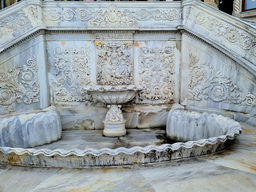
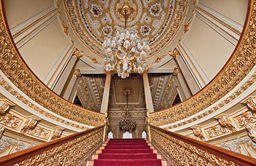
Kandilli, nestled between two groves, is known for its "devil's current" at the point where the stream hits the shore. Here, currents can reach speeds of 7-10 knots, as it is one of the narrowest points of the Bosphorus.
In this area, you will see three beautiful maroon houses. The one at the top is known as the Casanova Mansion. Legend has it that the infamous lover Casanova stayed here during his visit to Istanbul, which is why the mansion is associated with his name.
Among the magnificent white mansions in Kandilli, the Clifton Mansion was formerly owned by the Clifton Family. You can distinguish this mansion by the three small windows on its upper floor.
The mansion owned by one of Turkey's prominent ambassadors, Fuat Bayramoğlu, was designed by the famous architect Sedad Hakkı Eldem. With its red and white facade, the mansion stands out as a remarkable structure.
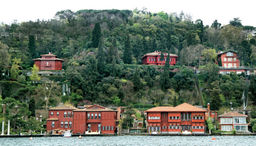
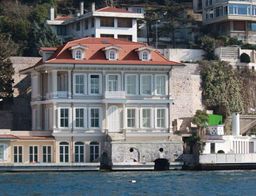
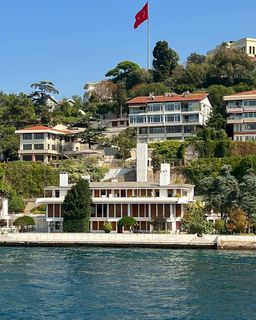
Vaniköy is one of the peaceful, green-clad corners of the Bosphorus, named after the significant historical figure Vani Mehmed Efendi. Following a fire that left the Vaniköy Mosque in ruins, it has been restored and once again takes its place among the Bosphorus's landmarks.
The Recaizade Mahmut Ekrem Mansion, with its stone facade, was used as an oil factory for many years. The Ahmet Nazif Pasha Mansion, notable for its chimneys at each end of the roof, is a smaller mansion.
One of the most beautiful mansions along the Bosphorus, the Mahmud Nedim Pasha Mansion, has its harem section on the right and the selamlık (reception section) on the left. The tower in the selamlık section is particularly striking.

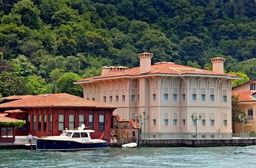
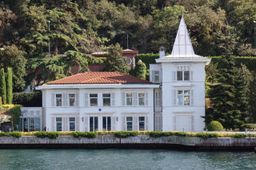
Kuleli
Kuleli is a historic neighborhood with a stunning view of Istanbul. It is located at the point where Kuleli Military High School, the jewel of the Bosphorus, is situated, offering the opportunity to explore the historical texture and impressive architecture of Kuleli while cruising along the calm waters of the Bosphorus.
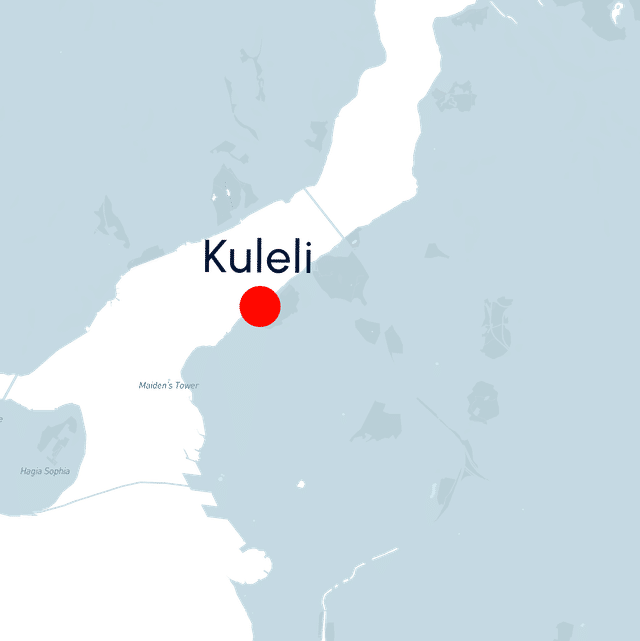
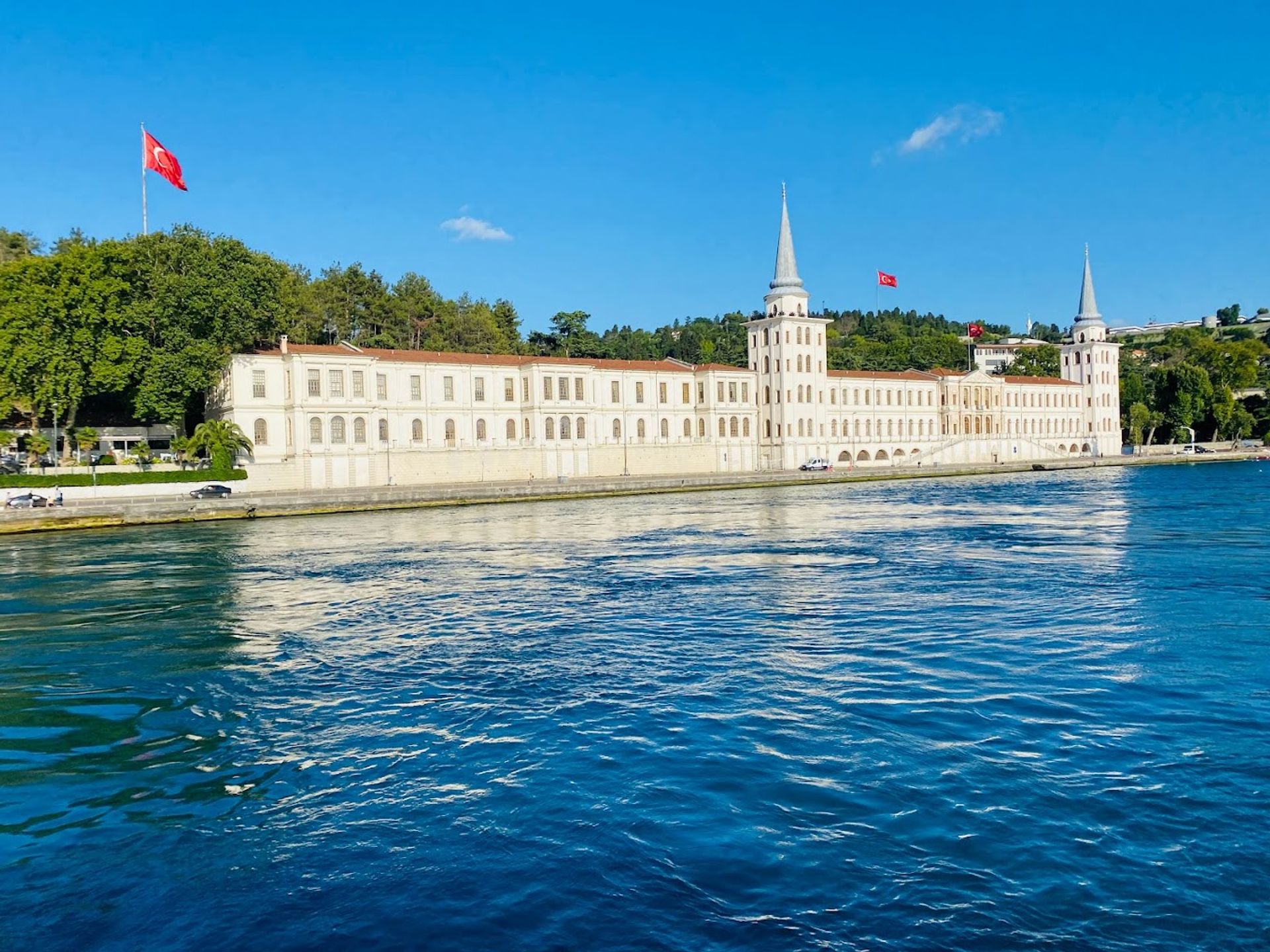
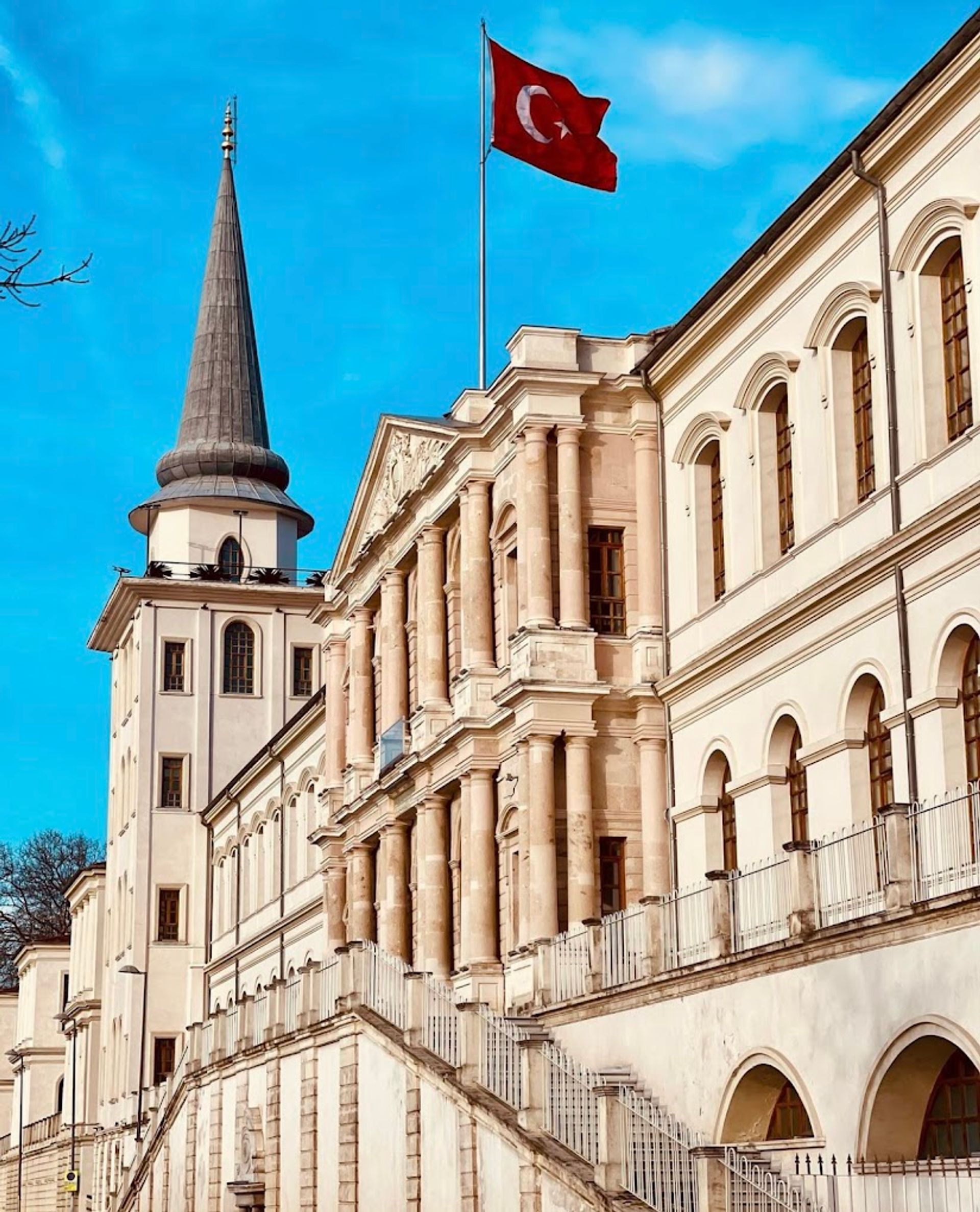
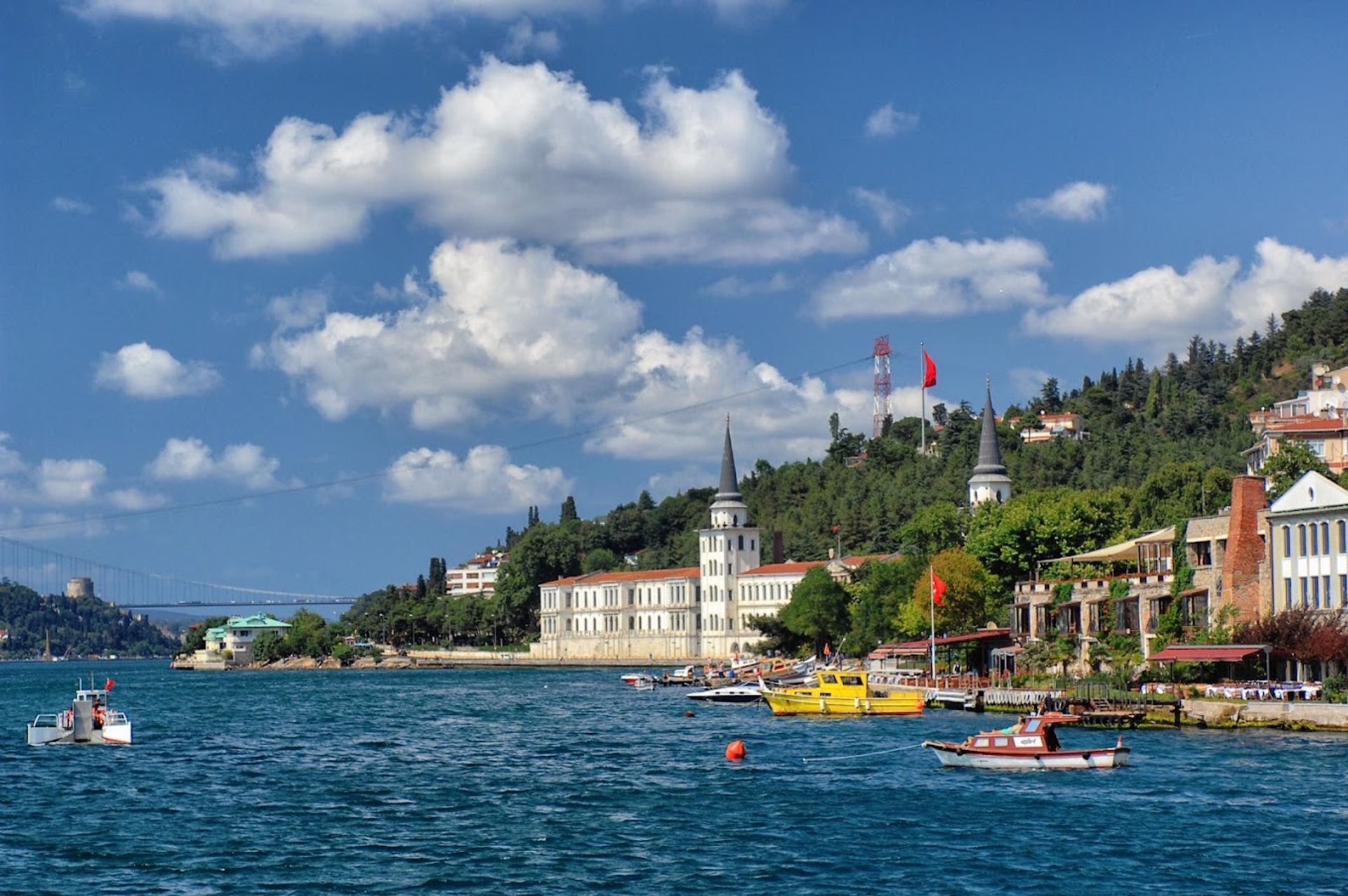
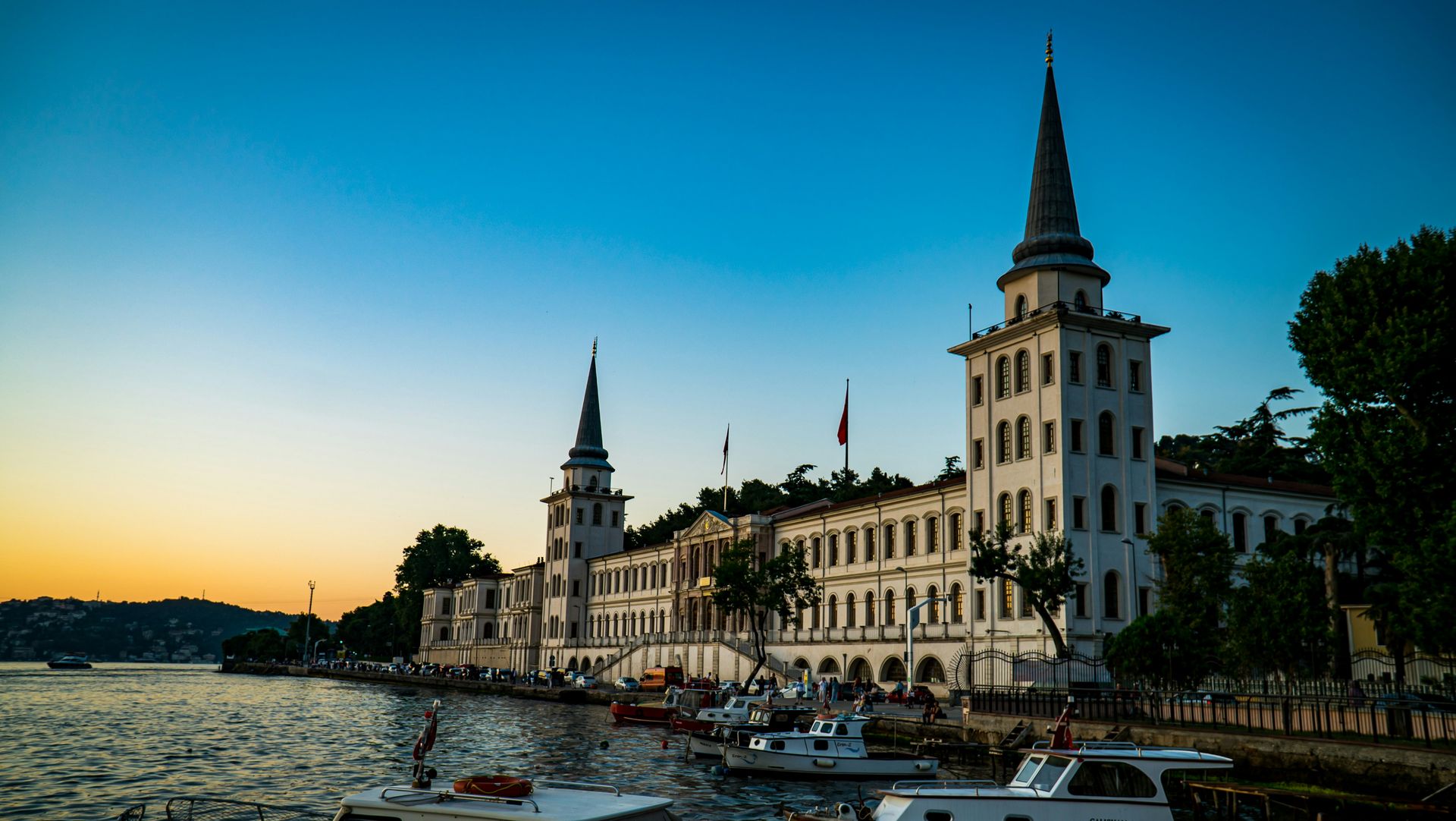
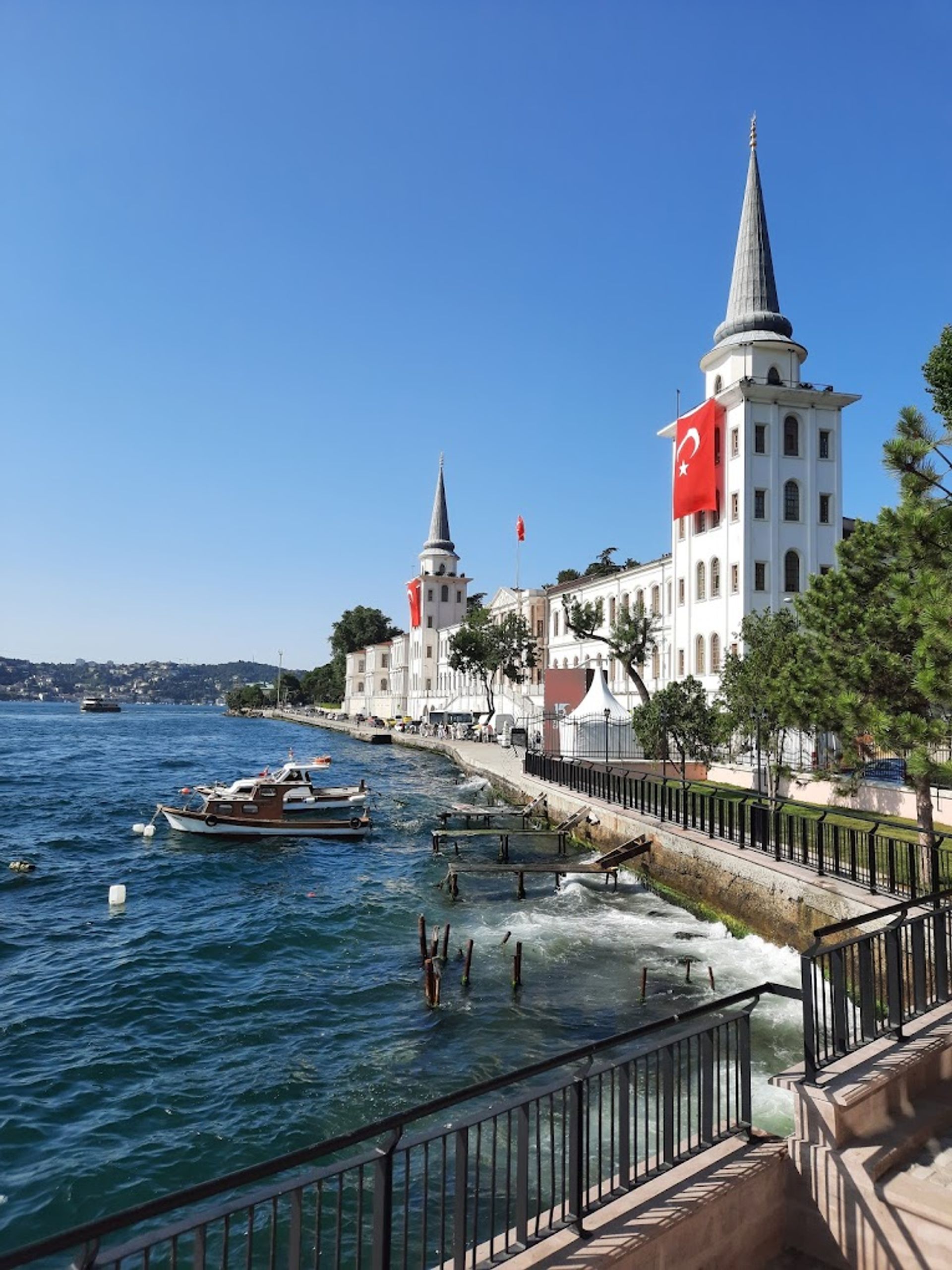





Kuleli Military High School is undoubtedly one of the most striking structures along the Bosphorus. Designed by the Balyan Family, the building is situated on a vast plot of land. It used to serve as an Ottoman barracks. The most distinctive architectural features of the school include the five-story towers at each corner and the terraced Imperial Pavilion (Hünkar Kasrı) located in the middle of the facade.
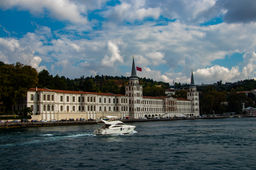
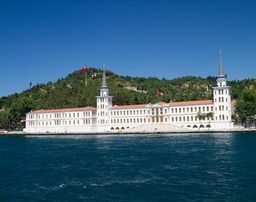
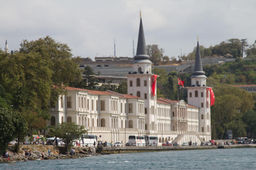
The stone buildings located near Kuleli, known as the elephant stables, were originally constructed for storing elephants and later repurposed as an armory. Situated right on the shoreline, the Sumahan Hotel, once an old liquor factory, has been transformed into a hotel showcasing a marvelous example of industrial design following its restoration.
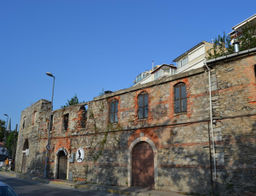
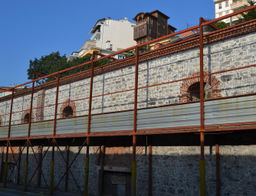
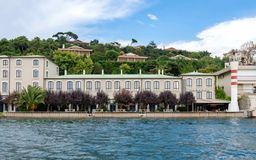
Near Çengelköy Pier, right in front of the Ayios Yeoryios (Aya Yorgi) Church, stands the four-story Server Bey Mansion, alongside the Sadullah Pasha Mansion, which is painted in salmon color. These are among the most significant mansions in Çengelköy and some of the ones that impressed you the most during your visit along the Bosphorus.
Vahdettin Mansion is located on the hills of Çengelköy. Its yellow color and onion-domed architecture make it stand out as one of the two summer palaces in Istanbul. The mansion is known as Vahdettin Mansion because it was used by Prince Mehmed Vahdeddin Efendi before he became Sultan. It is currently utilized as a 'Working Office' by the Presidency of the Republic of Turkey.

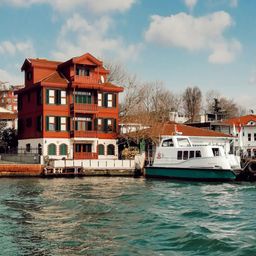
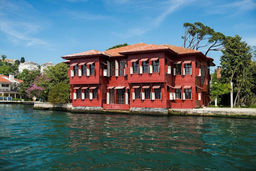
The white mansion with towers on both sides is the Mabeyinci Faik Bey Mansion, next to which is the Hasip Pasha Mansion. The historic and cult movie "Topkapi" was filmed in the Mabeyinci Faik Bey Mansion. In this film, starring Melina Mercouri and Peter Ustinov, thieves attempt to steal the emerald dagger from the Topkapi Palace.
During the Ottoman era, if a mosque had two or more minarets, it meant it was commissioned by a sultan. The Beylerbeyi Mosque, with its small garden by the sea, was built in 1778 by Sultan Abdulhamid I for his mother Rabia Sultan. The architect of Laleli Mosque, Mehmed Tahir Ağa, was commissioned for its construction. Because of its founder, it is also known as Hamid-i Evvel Mosque and was built in the Baroque style.
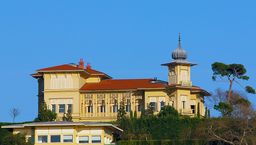
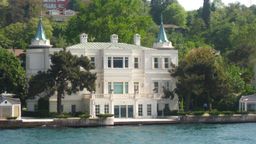
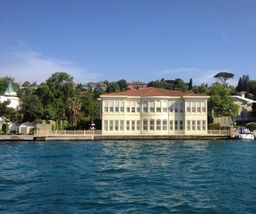
Beylerbeyi Palace, one of the most beautiful palaces along the Bosphorus, adds an impressive silhouette to Istanbul with all its grandeur. This palace was used as a summer residence, with the left side serving as the harem section and the right side as the selamlık (reception) section. It is one of the palaces built by Sarkis Balyan and has been part of the National Palaces following the proclamation of the Republic. Empress Eugénie, the wife of Napoleon III, stayed here during her visit to Istanbul for the opening of the Suez Canal. According to stories, Empress Eugénie and Sultan Abdülaziz experienced a grand love affair here. Impressed by what she saw, the empress had the windows replicated for the Tuileries Palace in Paris. Napoleon III had a fond saying about Istanbul: "If the world were a single country, Istanbul would be its capital."
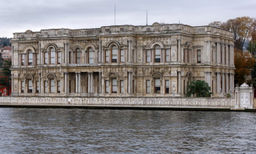
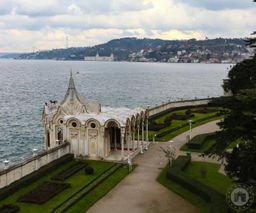

After crossing the First Bridge, one of the first sights on the hillside is the Cemil Molla Mansion with its triangular roof, one of Kuzguncuk’s most beautiful mansions, now serving as the headquarters of a construction company. In the past, the wealthy had both a summer (selamlık) and a winter (haremlik) mansion. Due to the coastal humidity in winter, they preferred mansions within the grove, making the Cemil Molla Mansion known as a winter residence. During the reign of Sultan Abdulhamid II, it functioned as a cultural center, pioneering in several aspects: it was among the first buildings in the city to be illuminated by electricity, hosted one of the empire's first telephones, had its private cinema, and contained a photography studio.
The Üryanizade Mosque by the sea, constructed in 1860 by Üryanizade Ömer Efendi, a Sheikh ul-Islam of Sultan Abdulhamid II, is notable for its overhanging wooden minaret and its charming appearance reminiscent of a quaint mansion.
The yellow building on the hills of Kuzguncuk, now serving as the Kuzguncuk Primary School, was once the home of Marko Pasha, the founder of the Red Crescent and a Greek doctor. Known for his dismissive response to lengthy explanations with just "Tell me what happened?" this phrase has embedded itself into Turkish as the idiom "Tell it to Marko Pasha."
Kuzguncuk was considered by Jews as "the last stop before the holy lands," making it a desirable place to live or at least to be buried in for those who couldn't make it to the holy lands. Initially settled by Jews fleeing persecution in Spain in the 15th century, by the 17th century, it had become a Jewish village, hence nicknamed "Little Jerusalem."
The arrival of Greeks and Armenians in the 17th century added cultural richness to this seaside town. Turks, for some reason, did not favor settling in Kuzguncuk, preferring the Paşalimanı area instead. Therefore, today, you can find two synagogues, two Greek Orthodox churches, and one Armenian church here, showcasing Kuzguncuk's historically cosmopolitan nature.
The pink mansion in front of Fethi Ahmet Paşa Grove is the Fethi Ahmet Paşa Mansion, known to have been a residence of Nazım Hikmet. Positioned over the sea, it's referred to as a 'lebiderya' mansion. Fethi Ahmet Paşa, the husband of Atiye Sultan from the Ottoman dynasty, was also the founder of the Military Museum in Harbiye.
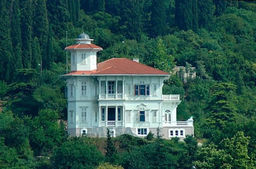
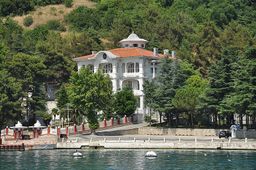

Uskudar
Located right at the entrance to the Bosphorus, Uskudar is one of the oldest settlement areas of the city, thus having a deep-rooted history. Initially, Uskudar was known as "Chrysopolis," meaning the City of Gold. This name is said to have originated either from Persian invaders storing the spoils they brought from Anatolia here or from the colors created by the sun setting over the Bosphorus. Before the conquest of Istanbul, during the Byzantine period, it acquired the name "Scutari," which refers to a military barracks. The area where these barracks were located was called "Skutarion." Uskudar became a significant center during the Ottoman era and has always maintained its importance.
Uskudar is rich in fountains, inns, baths, and historic mansions dating back to the Ottoman period. The coastline is a frequently chosen spot for Istanbul residents and visitors to watch the city's beauties and relax.
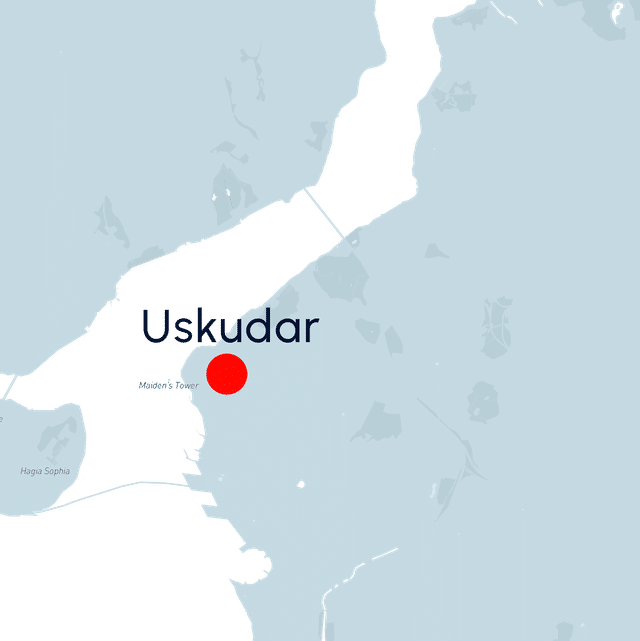
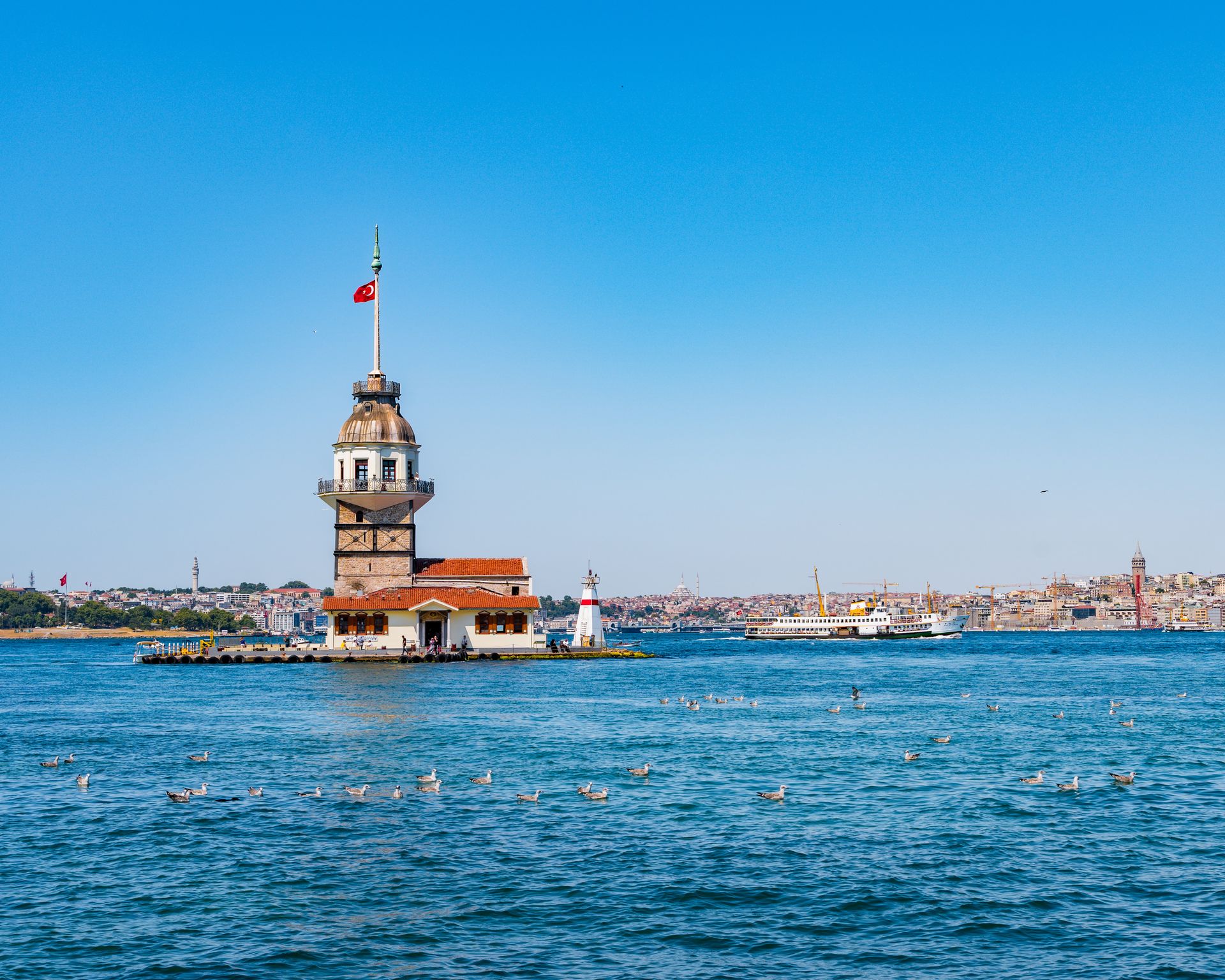
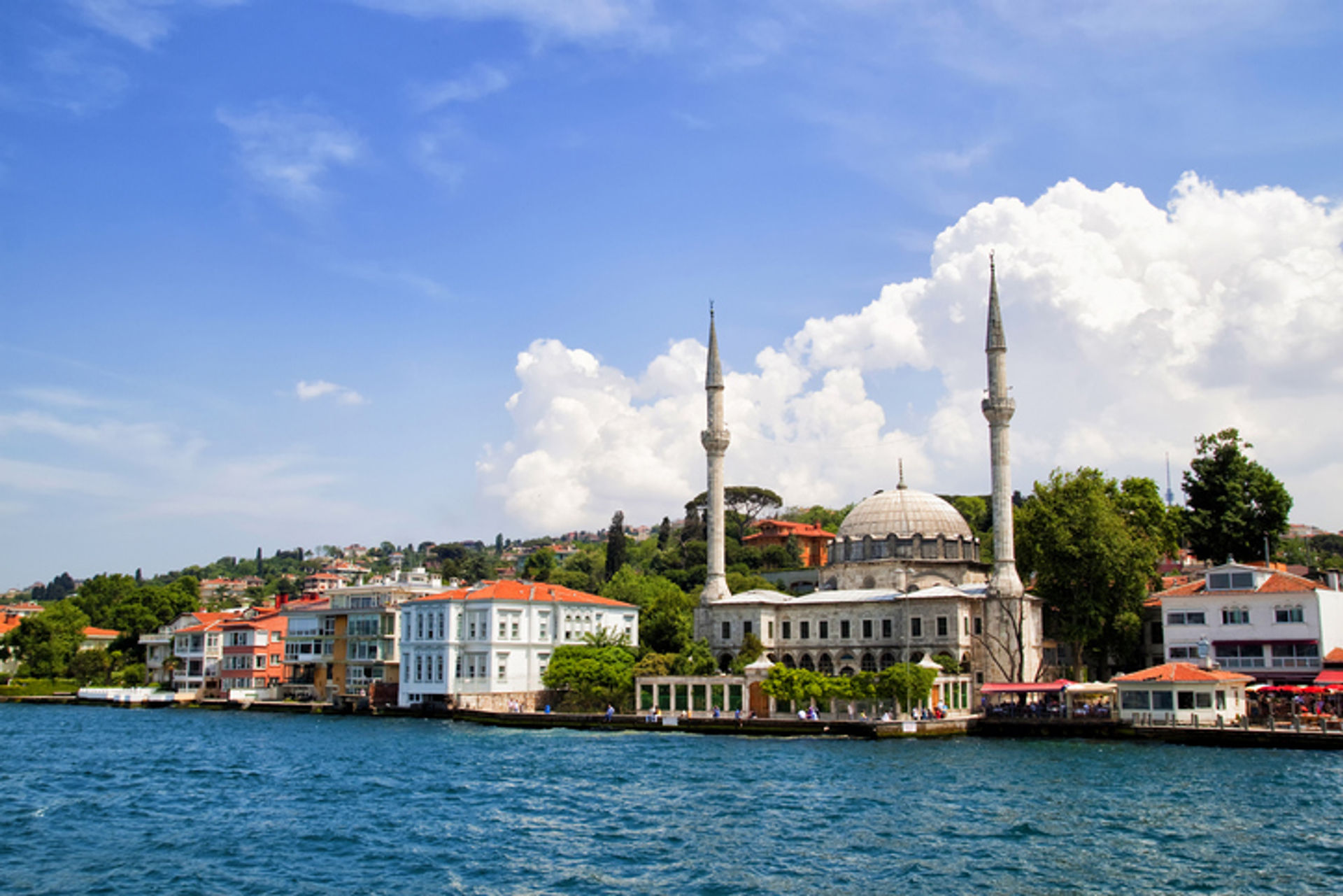
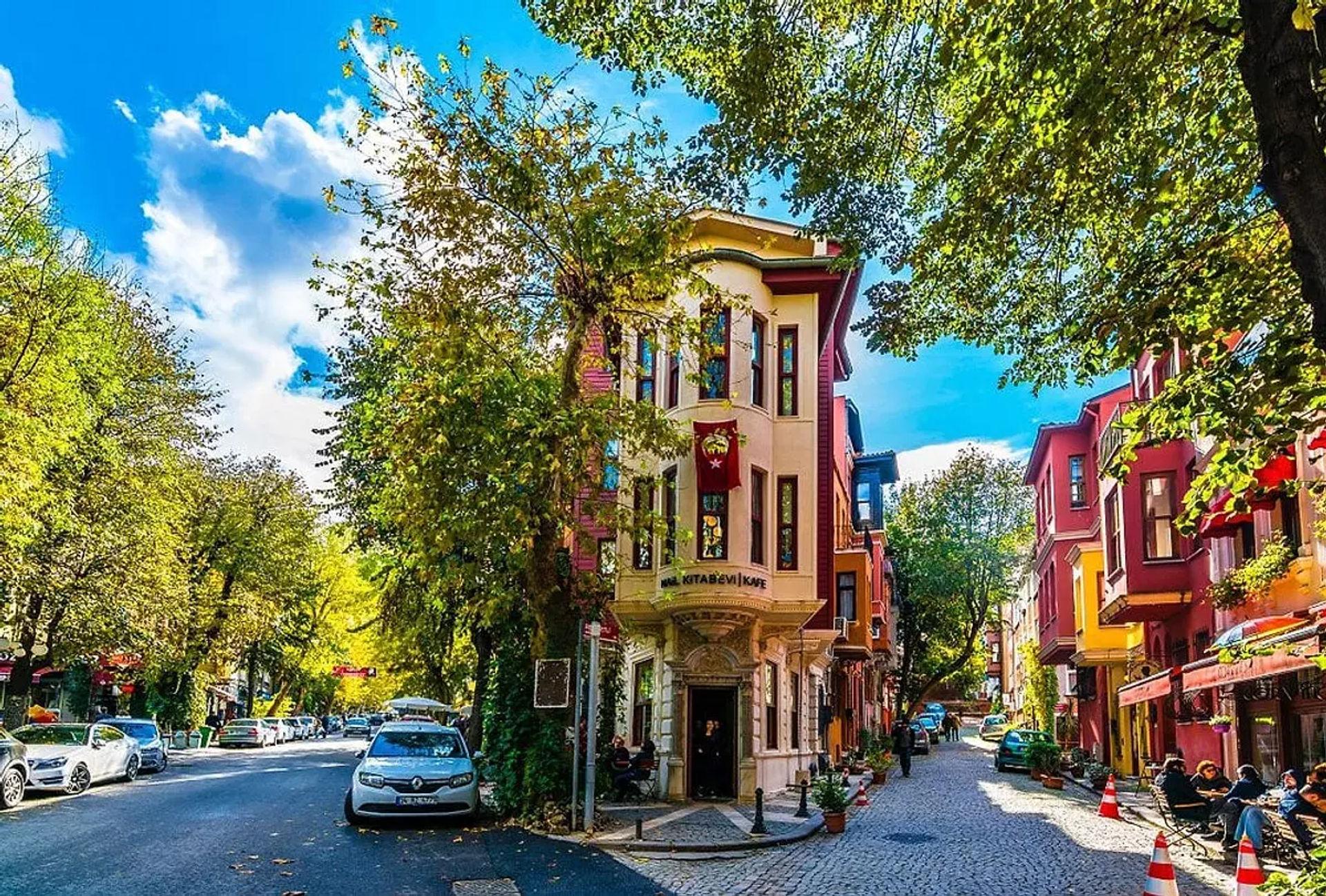
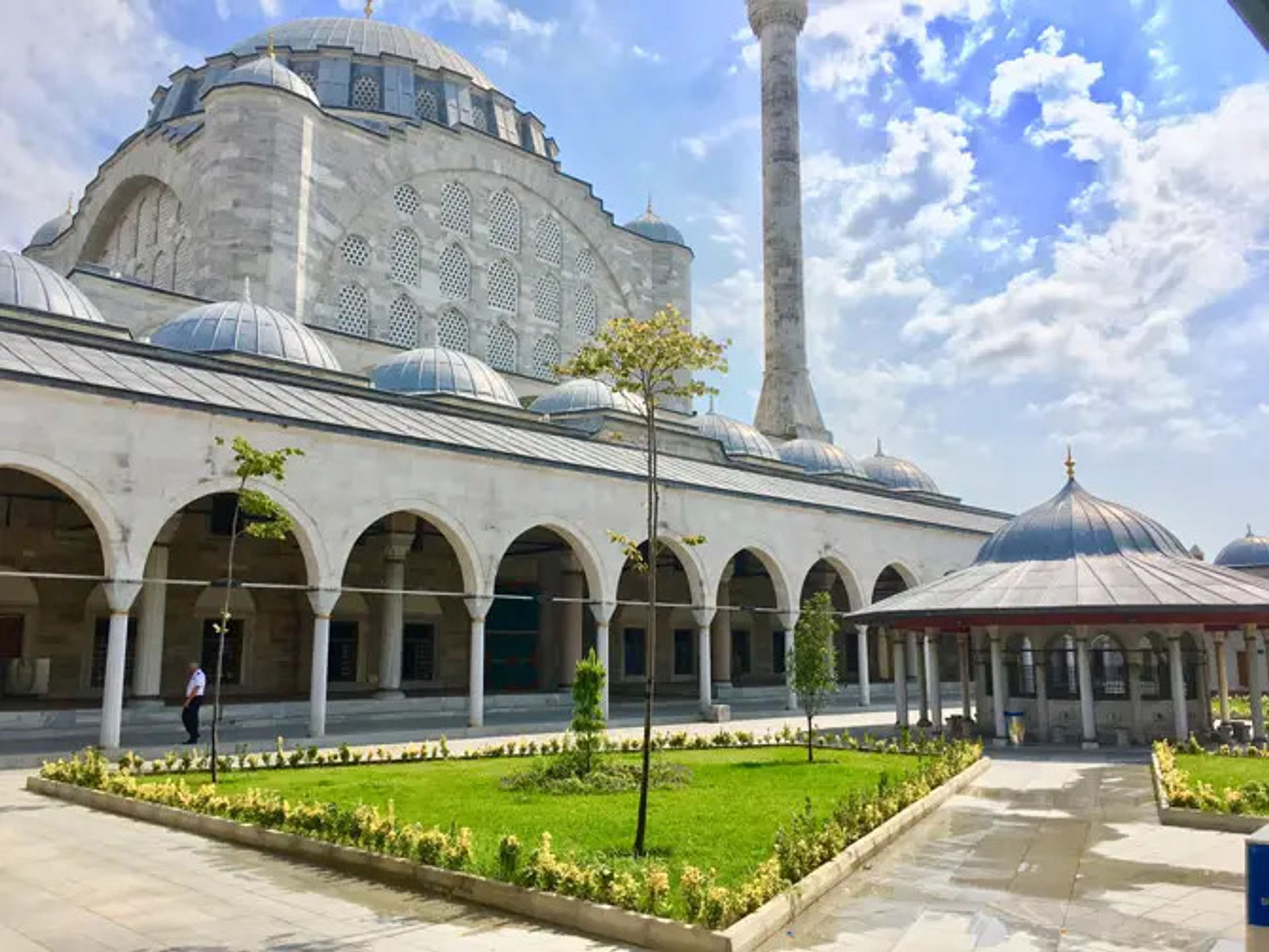
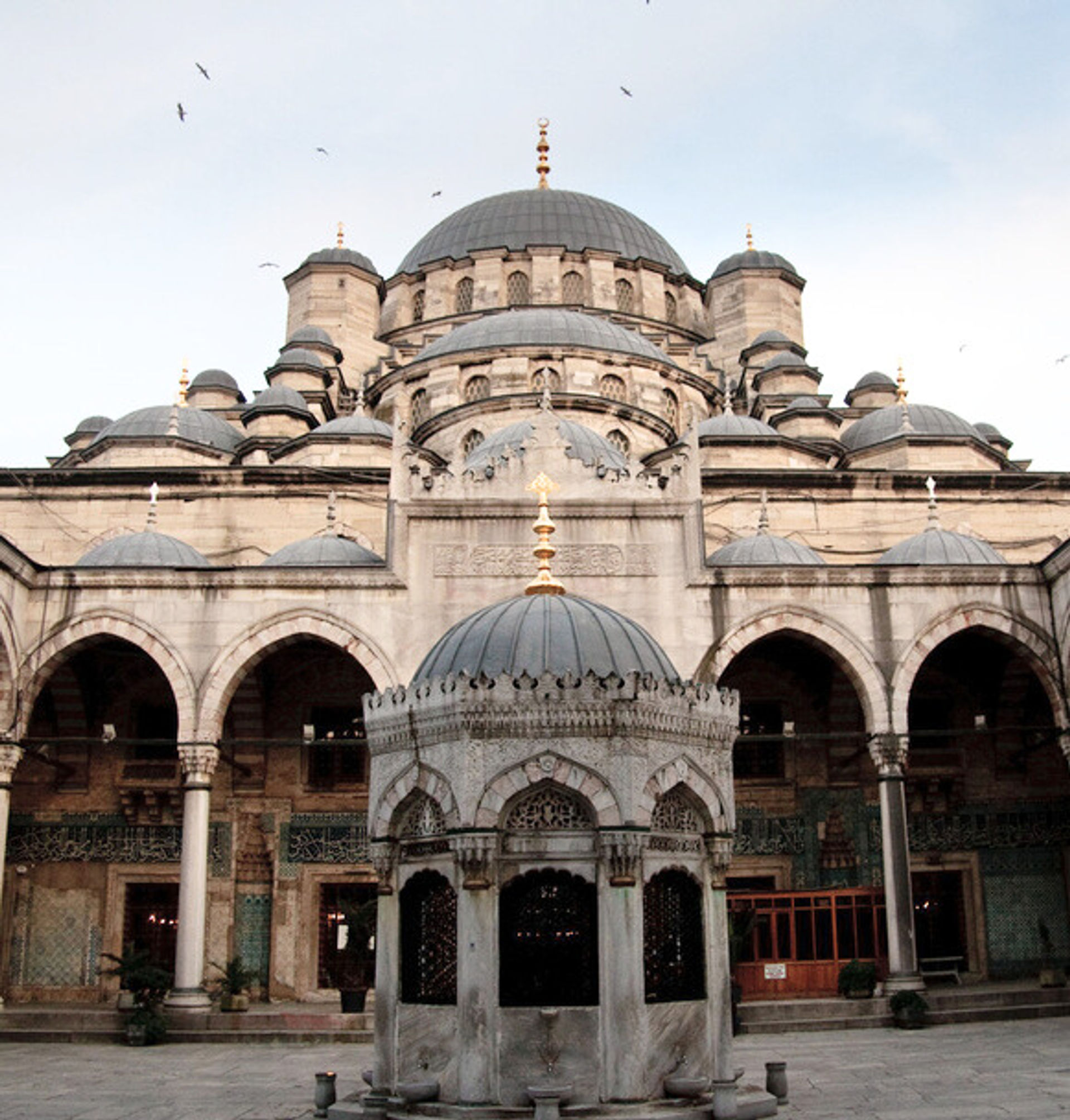





Mihrimah Sultan Mosque is dedicated to Mihrimah Sultan, the daughter of Suleiman the Magnificent. According to popular stories, it is said that the architect Mimar Sinan was in love with Mihrimah Sultan and, therefore, built two mosques in her name. The other mosque is located in Edirnekapı. It is also said that as the sun sets over the mosque in Edirnekapı, the moon rises over the mosque in Üsküdar, reflecting the Persian meaning of "Mihrimah," which is sun and moon. Sinan first used his signature half-domes in this mosque. Another name for Mihrimah Sultan Mosque is the Jetty Mosque. Initially, when it was built by the seashore, sultans would arrive by boat. The view from its fountain is described as one of the best in Istanbul.


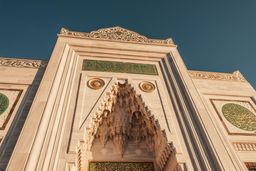
The Yeni Valide Mosque, a standout architectural achievement of its era, was designed and built by Kayserili Mehmed Ağa, a distinguished architect of the Tulip Period. This mosque encapsulates the refined taste and sophistication of the Valide Sultan, showcasing the classical Ottoman architectural style. Notably, the mosque's courtyard houses an octagonal fountain, while the exquisite stone craftsmanship of the fountain dedicated to Gülnûş Emetullah Sultan is especially noteworthy, reflecting the artistic and cultural heights reached during the period.
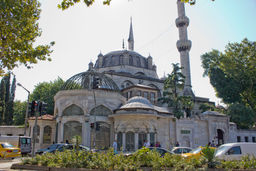
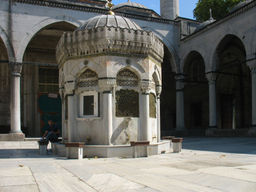
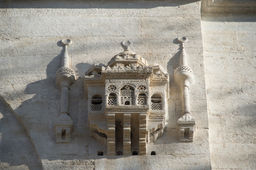
Semsi Pasha Mosque is a small mosque constructed by Mimar Sinan on the Üsküdar shoreline. Semsi Pasha requested a mosque that would not allow birds to perch on it, a challenging demand he placed before Mimar Sinan. Ingeniously, Sinan chose such a location that fulfilled Pasha's wish. Due to the wind currents at this spot, birds do not perch on the mosque, earning it the nickname "Kuşkonmaz Camii" (the Birdless Mosque).
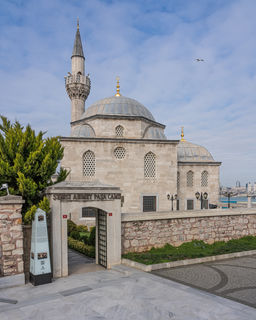
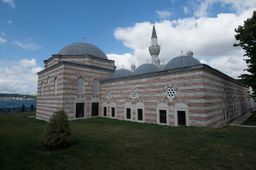
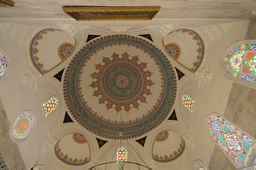
Rum Mehmed Pasha Mosque, located a short walk from Semsi Pasha Mosque on the left uphill, was built for Rum Mehmed Pasha, one of the Grand Viziers of Mehmed the Conqueror, who was of Greek origin. As the first mosque constructed on the Anatolian side of Istanbul during the Ottoman Empire, its central dome is higher than the others, giving the building a Byzantine appearance. The original plan included complex elements such as a madrasa, bathhouse, and soup kitchen, but these structures have not survived to the present day.
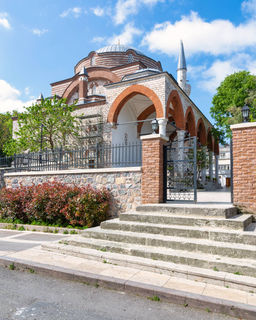
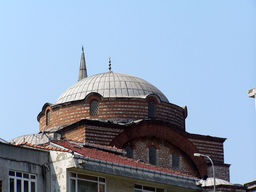
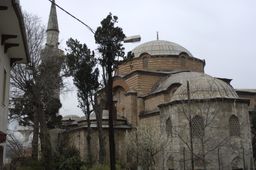
The Maiden's Tower is not only a landmark of its district but also one of the most iconic symbols of Istanbul. Located in the middle of the Bosphorus, close to the entrance of the strait and near the Sea of Marmara, this historic tower stands on a small islet. The first structure on this site was built in 411 BC by the Athenian general Alcibiades to control Persian movements. Later, Byzantine Emperor Manuel I Komnenos constructed a small fortress here. The original fortress of Komnenos was replaced by a smaller castle built by Mehmed the Conqueror, which was damaged in the earthquake of 1509 and restored by Sultan Selim I. The Maiden's Tower was once used as a prison. After being severely damaged in a fire, the tower was renovated by Damat Ibrahim Pasha, the Grand Vizier of Sultan Ahmed III, and turned into a lighthouse. The tower's most recent form was commissioned by Sultan Mahmud II.
According to a popular legend, a Byzantine Emperor had a beautiful daughter. One day, a soothsayer told the emperor that his daughter would be bitten by a snake. To protect her, the emperor locked her away in the Maiden's Tower. However, an old woman managed to enter the tower with a basket of grapes, hiding a snake inside. Unfortunately, the snake bit the princess, leading to a tragic end to the story.
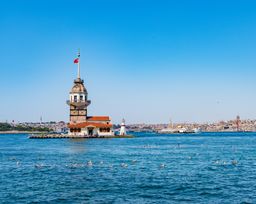
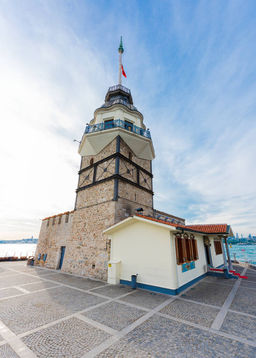
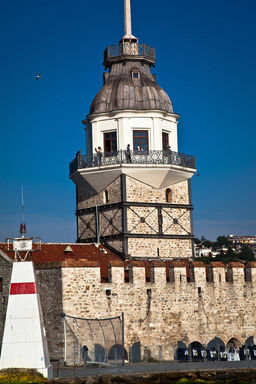
The structure that resembles a fortress with its four towers is the Selimiye Barracks, which also gives its name to the district where it is located. During the Crimean War, the barracks were converted into a hospital where Florence Nightingale, by implementing basic hygiene practices, significantly reduced the death rate among wounded soldiers, earning her a place in medical history.
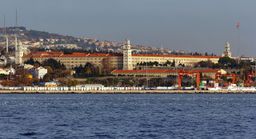
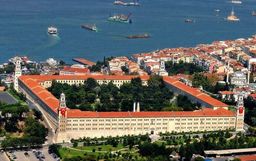
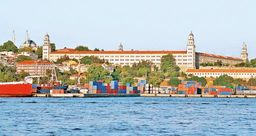
Eminönü
After the Bosphorus, the Sea of Marmara begins. The word "Marmara" comes from the Greek word for "marble," reflecting the rich marble quarried from the region since ancient times. Marmara Marble has given its name to the island, the sea, and the surrounding area. On the European side, we see Istanbul's famous sea walls, which in the past stretched approximately 20 kilometers. The land walls extend from Zeytinburnu to Ayvansaray, constructed more robustly than the sea walls. This is because the sea walls relied on "Greek Fire" for defense, a substance against which the wooden ships of the era could not stand. More precautions were taken against attacks coming from the land.
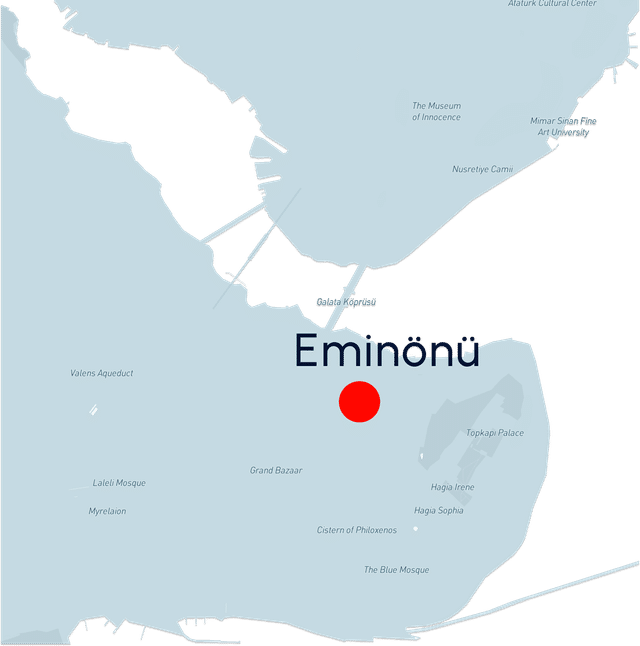
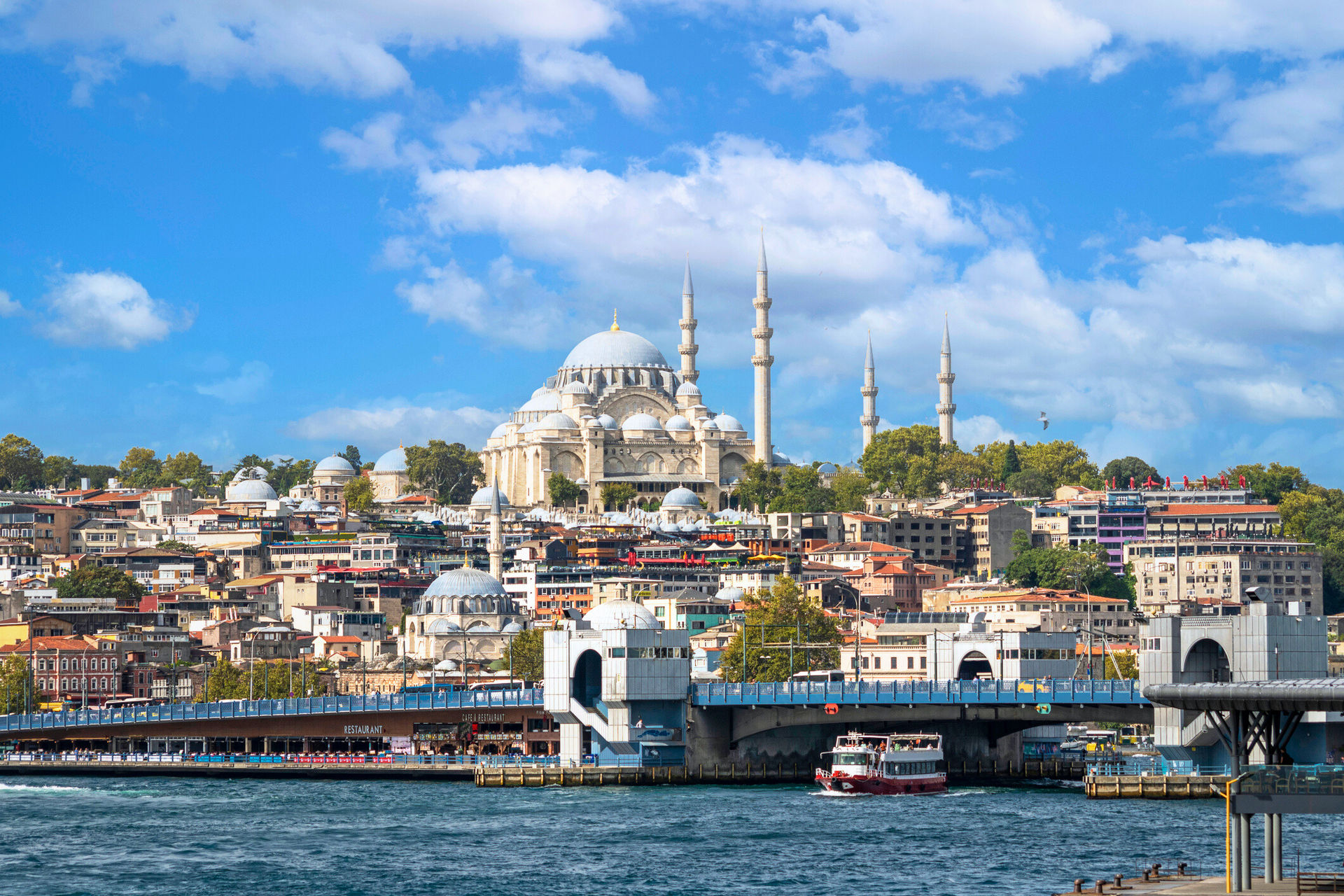
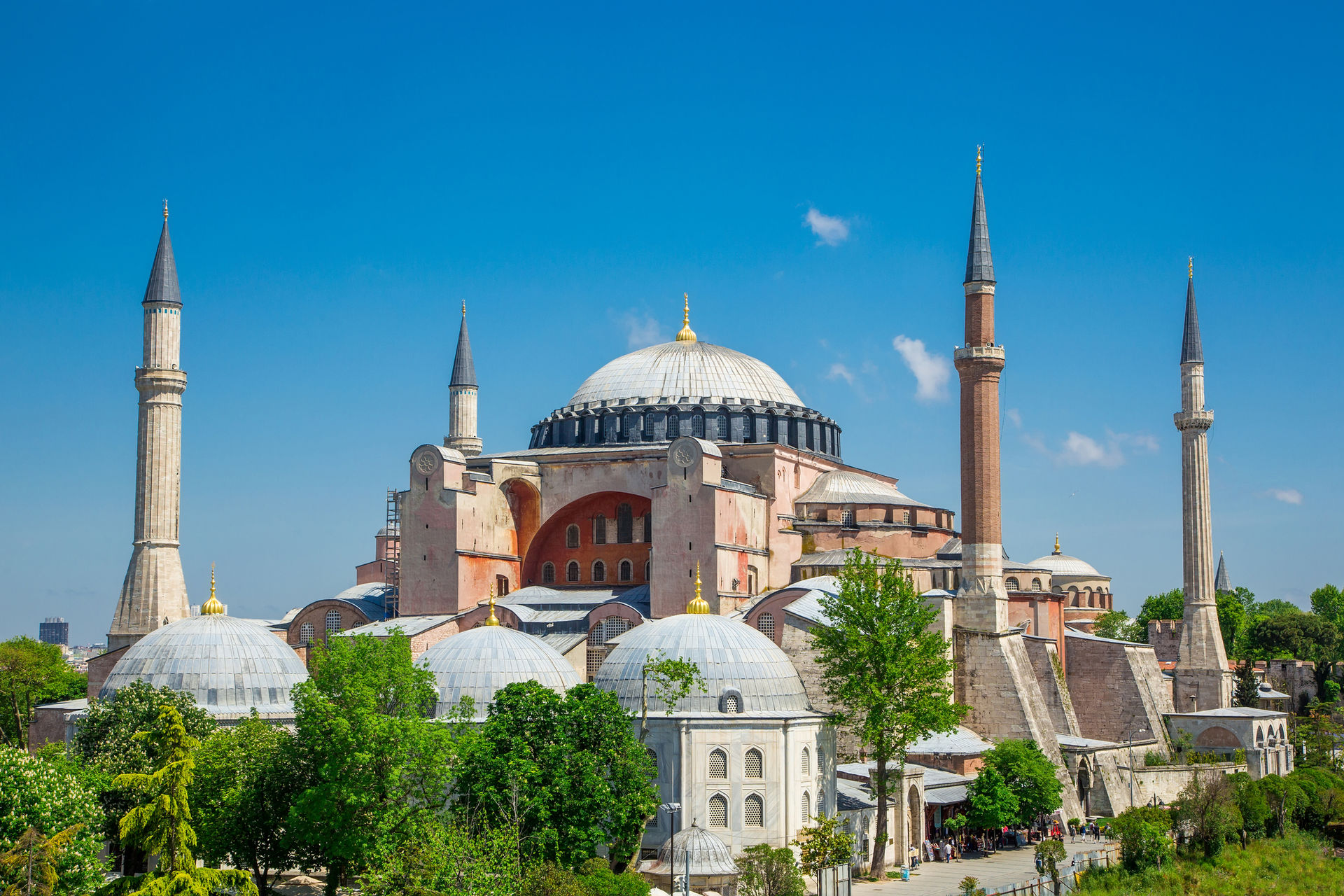
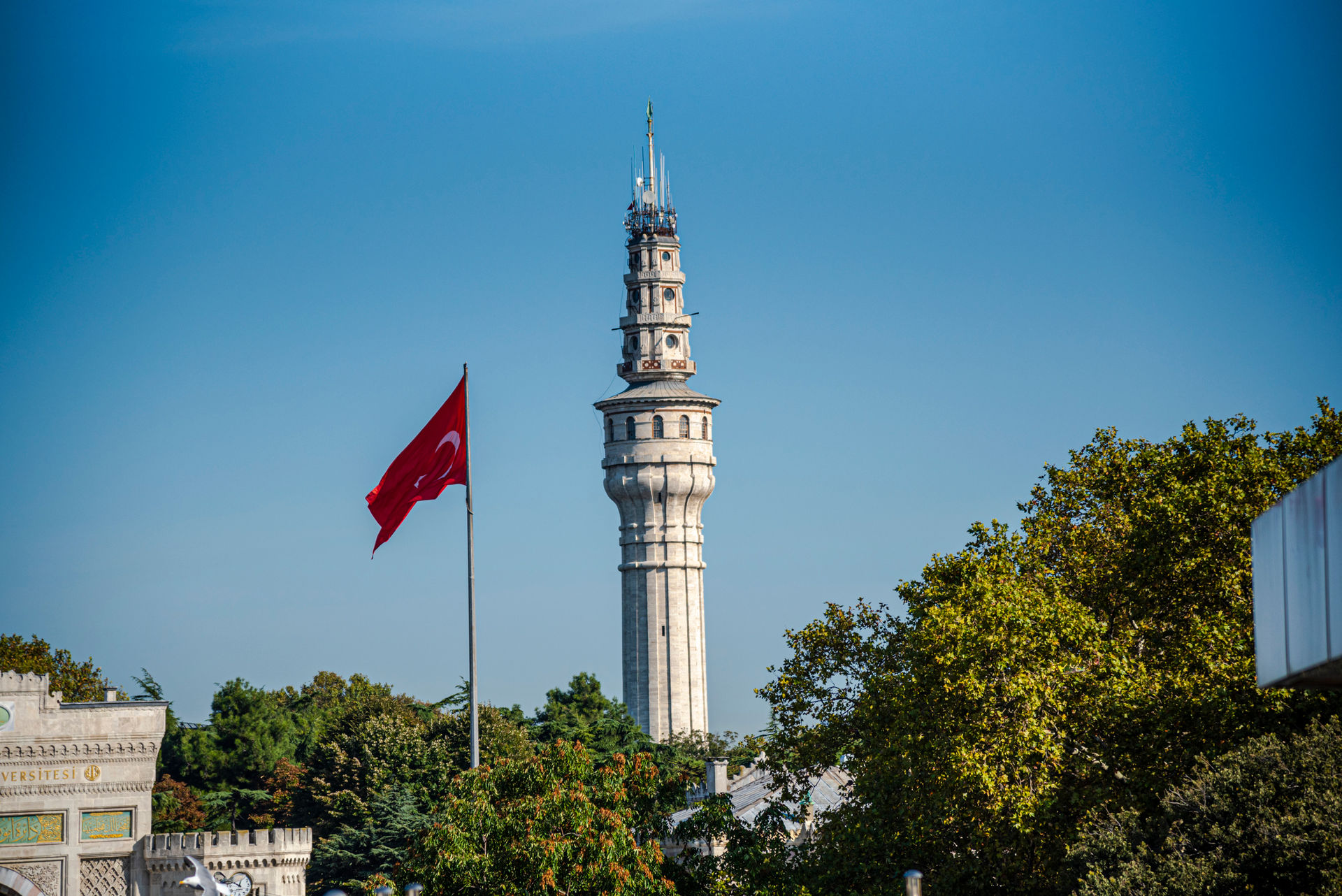
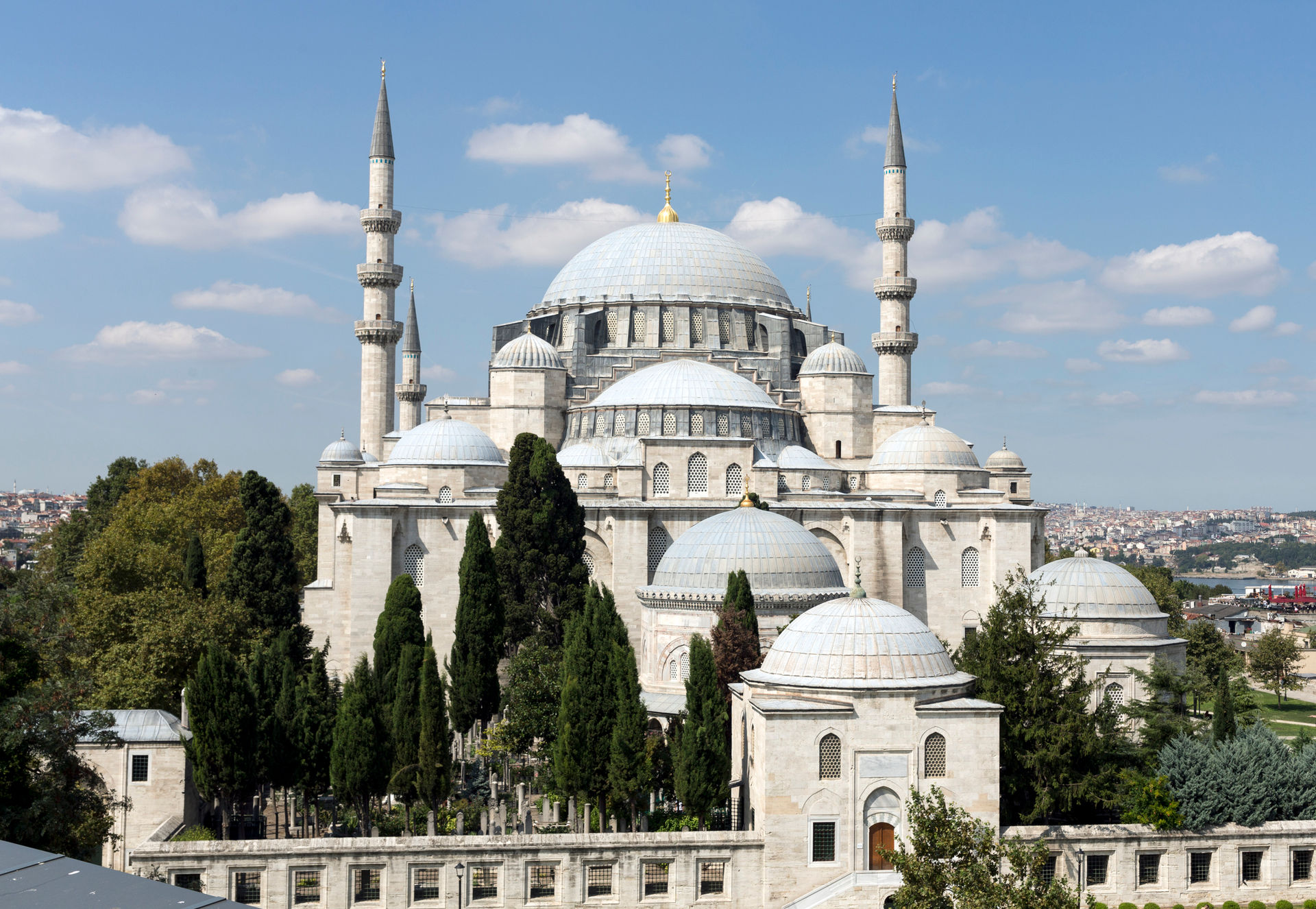






When we look towards the European Side at the very entrance of the Bosphorus, Sarayburnu greets us. Until the construction of the Dolmabahçe Palace, the Topkapı Palace, with its Justice Tower, served as the residence of the Ottoman sultans since the conquest of Istanbul, and it's one of the first structures that catch the eye. Right by the sea, you can also see the first statue of Atatürk erected in an open space in Turkey. The location of the statue marks the point where Atatürk's remains were transferred onto the Yavuz Battleship before being taken by train over İzmit for his final journey.
Further ahead, you'll notice the elegant Sepetçiler Pavilion. Known as the place where sultans would board their royal boats to the Bosphorus or the Golden Horn, the current structure of the Sepetçiler Pavilion was commissioned by Sultan Ibrahim I in 1643.
Behind the pavilion, the expansive green space you see is Gülhane Park, covering 100,000 square meters. This park, one of the city's breathing spots, also hosted the University of Constantinople in the 13th century.
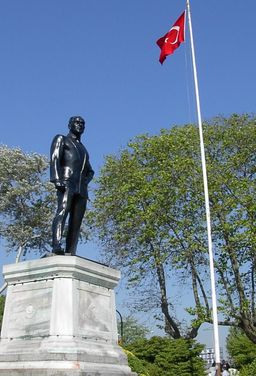
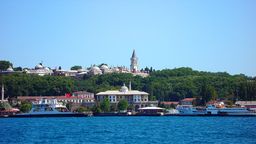
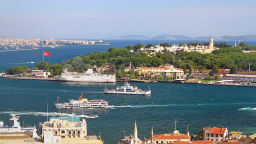
The Hagia Irene, during the Eastern Roman Empire period, was the second largest church in Istanbul after the Hagia Sophia. Its name, meaning "Holy Peace," Hagia Irene is characterized by its red brick appearance and a large dome. As the Topkapı Palace was being built, the church, situated between the Hagia Sophia and the Hagia Irene, ended up within the palace's boundaries due to the exterior walls running between them. Since the church was not converted into a mosque after the conquest of Istanbul, very few changes were made to it both internally and externally during the Ottoman era. Today, the Hagia Irene occasionally hosts concerts and is considered a unique example in its current form.


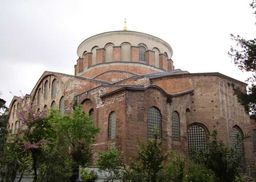
The Hagia Sophia was initiated under the reign of Byzantine Emperor Justinian I. Constructed between 532-537 AD, the church was built by 10,000 workers and 100 master craftsmen, designed by the era's two most prominent architects, Anthemius of Tralles (from modern-day Aydın), a mathematician and physicist, and Isidore of Miletus, an architect. The name "Hagia Sophia" means "holy wisdom," symbolizing the concept of "divine wisdom," one of the three properties of God in Orthodox Christianity. It held the title of the world's largest cathedral for 1000 years. Initially built as a basilica, the Hagia Sophia now serves as a mosque with four minarets.
The survival of this unique structure to the present day owes much to the reinforced massive buttresses added by the architect Mimar Sinan in 1573. The Hagia Sophia is recognized worldwide as a significant symbol.

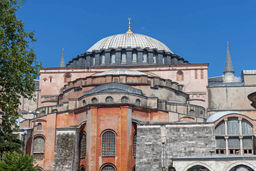

Located in Sultanahmet Square directly opposite the Hagia Sophia Mosque stands another remarkable structure. Commissioned by Ottoman Sultan Ahmed I and built on Istanbul's Historical Peninsula by architect Sedefkâr Mehmed Ağa, this mosque, with its six minarets, is renowned for its blue, green, and white İznik tiles. Due to these characteristics, it is known as the "Blue Mosque" by Europeans.
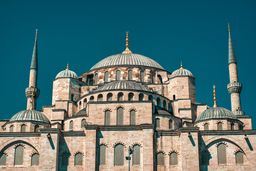
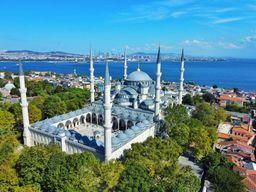

The tower you see atop is the Beyazıt Fire Tower, situated within the garden of Istanbul University, designed by the Balyan Family. During a period in the Ottoman Empire when wooden houses were prevalent, fires were frequent. The Beyazıt Fire Tower was constructed to take precautions against these fires and provide early warnings.
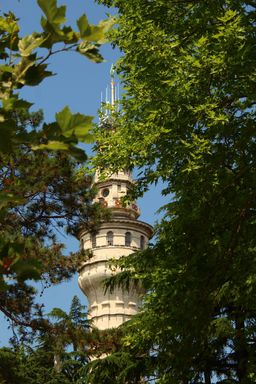

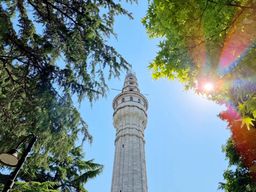
Eminönü and Sirkeci, with their harbors and the later addition of a train station, have become one of Istanbul's historical and commercial centers. Eminönü, one of Istanbul's oldest districts, hosts many historical structures from the Byzantine and Ottoman periods. The markets located here are among the world's oldest and largest. Particularly noteworthy are the inns in the First National Architectural style. Along the coastline, the New Mosque stands elegantly amidst the crowd, while the grand Post Office building and the Istanbul High School for Boys are notable landmarks in the area with their striking appearances.
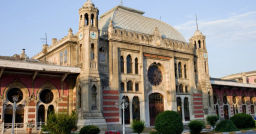
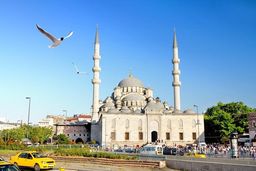
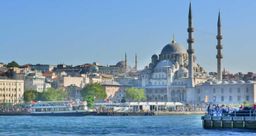
The Spice Bazaar, located behind the New Mosque, is an architectural masterpiece that began construction in 1597 upon the request of Safiye Sultan during the Ottoman Period. Funded by taxes collected from Cairo, the bazaar eventually became famous as the "Spice Bazaar." As you explore the corridors of the bazaar, the aromas of spices take you on a journey through time.
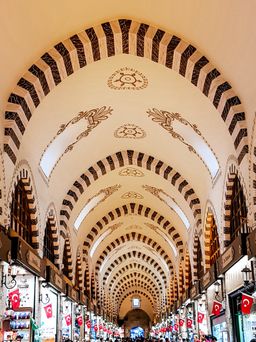
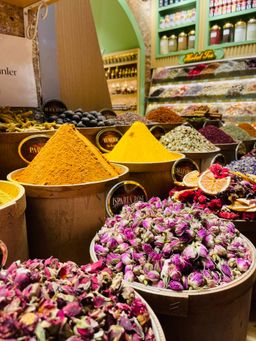
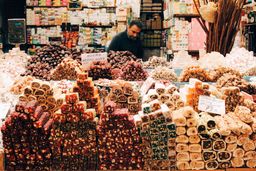
Decorating Istanbul's third hill is the Süleymaniye Mosque, a marvel of architecture referred to by Mimar Sinan as his "masterpiece." This magnificent structure is visible from kilometers away due to its splendor. The construction of the Süleymaniye was commissioned to commemorate the thirtieth anniversary of Sultan Suleiman the Magnificent's ascension to the throne. On the grand opening day, it is said that the sultan, deeply impressed by the mosque, honored the architect by allowing him to open the masterpiece. The mosque stands out with its details symbolizing historical events; its four minarets represent Sultan Suleiman the Magnificent as the fourth sultan after the conquest of Istanbul. Furthermore, its ten balconies allude to his being the tenth sultan since the foundation of the Ottoman Empire.
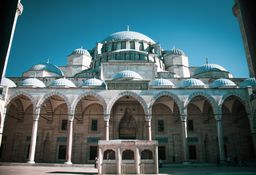
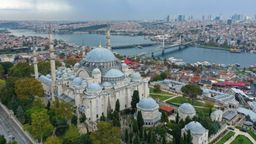
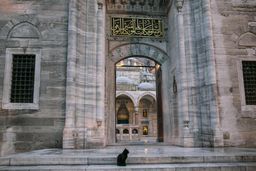
Galata
Galata is a district that marries its unique historical texture with a modern lifestyle. It became a center thanks to the Genoese, who established a colony in this area during the Byzantine period due to the privileges granted to them. Situated directly across from Istanbul, Galata has always crafted its own story. Its awe-inspiring tower and the streets leading up to Beyoğlu and down to Karaköy are always waiting to be discovered, hiding treasures within. Alongside cultural and artistic events, the galleries, boutiques, and cafes here promise to immerse visitors in the district's spirit.
The Galata Bridge, stretching between Karaköy and Eminönü, is one of the city's iconic structures. Walking on the bridge and uncovering the beauties of Istanbul is among the city's finest gifts.
Not to mention Karaköy, a port for centuries, which has blended the cultures of not only those who live there but also those passing through. It has provided refuge to Jews fleeing the Spanish Inquisition, became the financial center of the Ottoman Empire from the late 19th century, and opened its doors to White Russians escaping the 1917 Bolshevik Revolution. For those who know how to look, Karaköy's streets hide treasures.
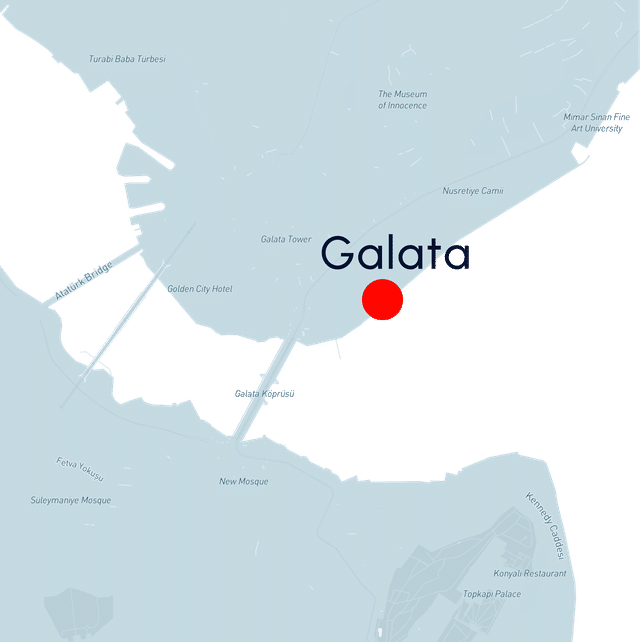
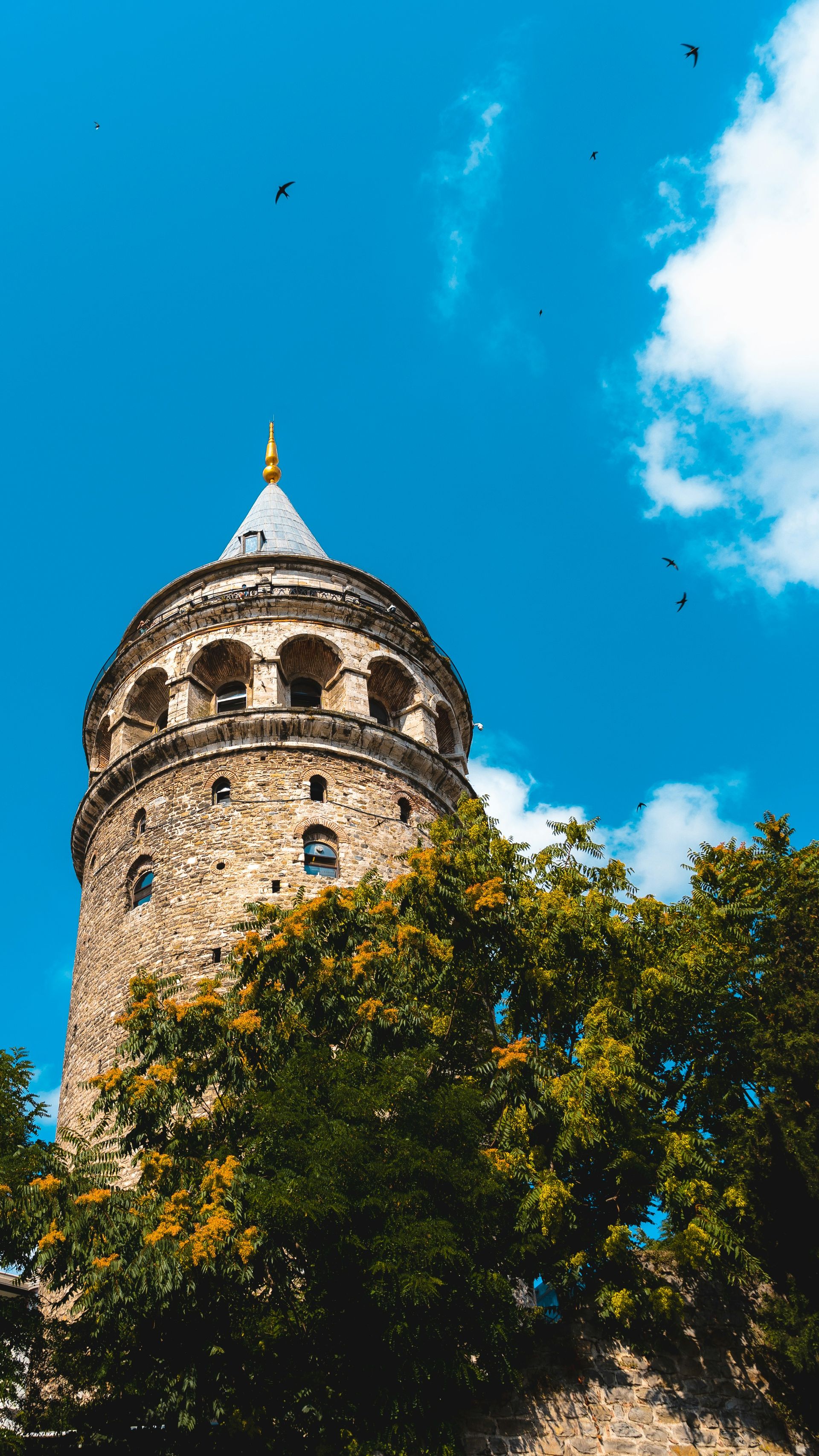
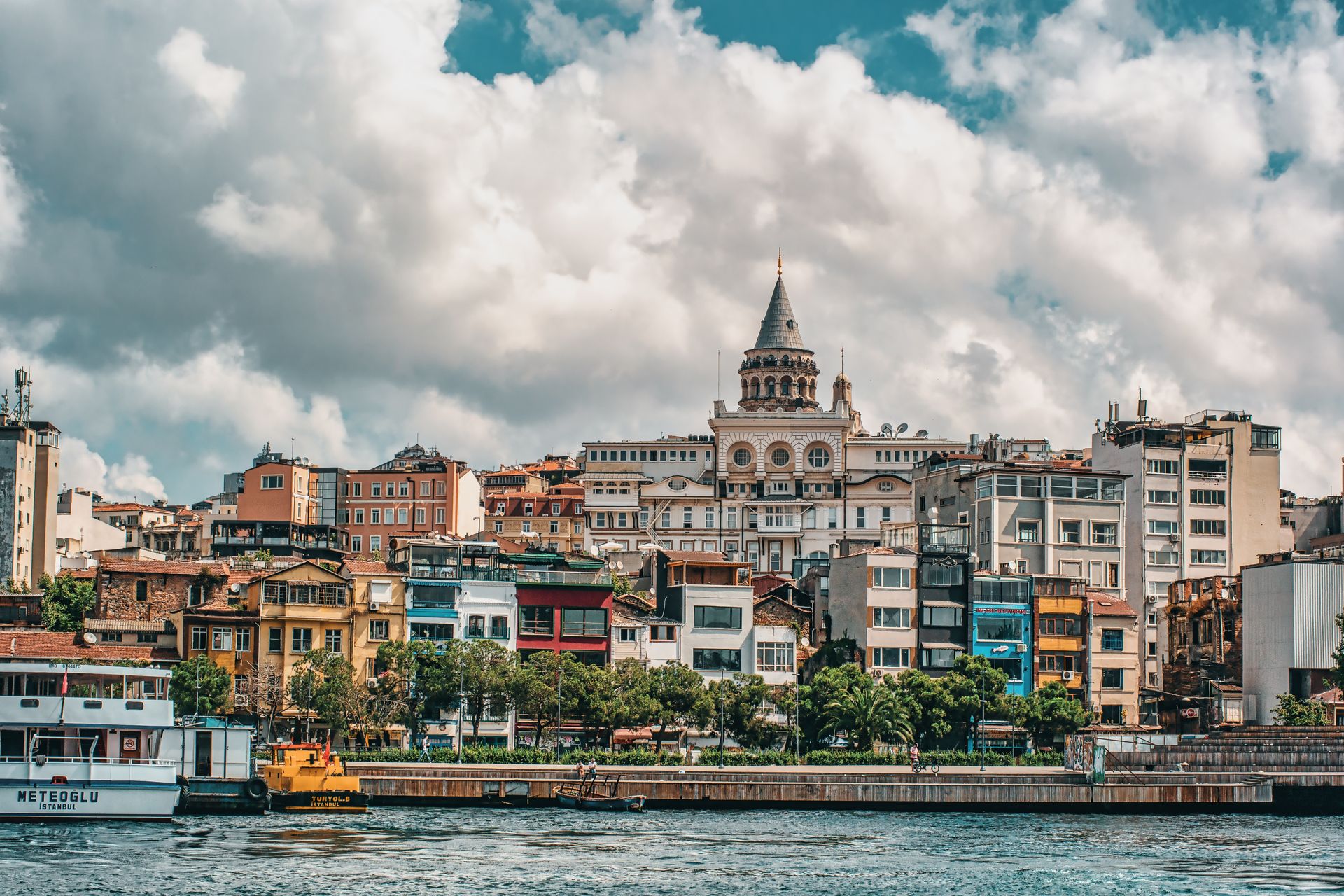
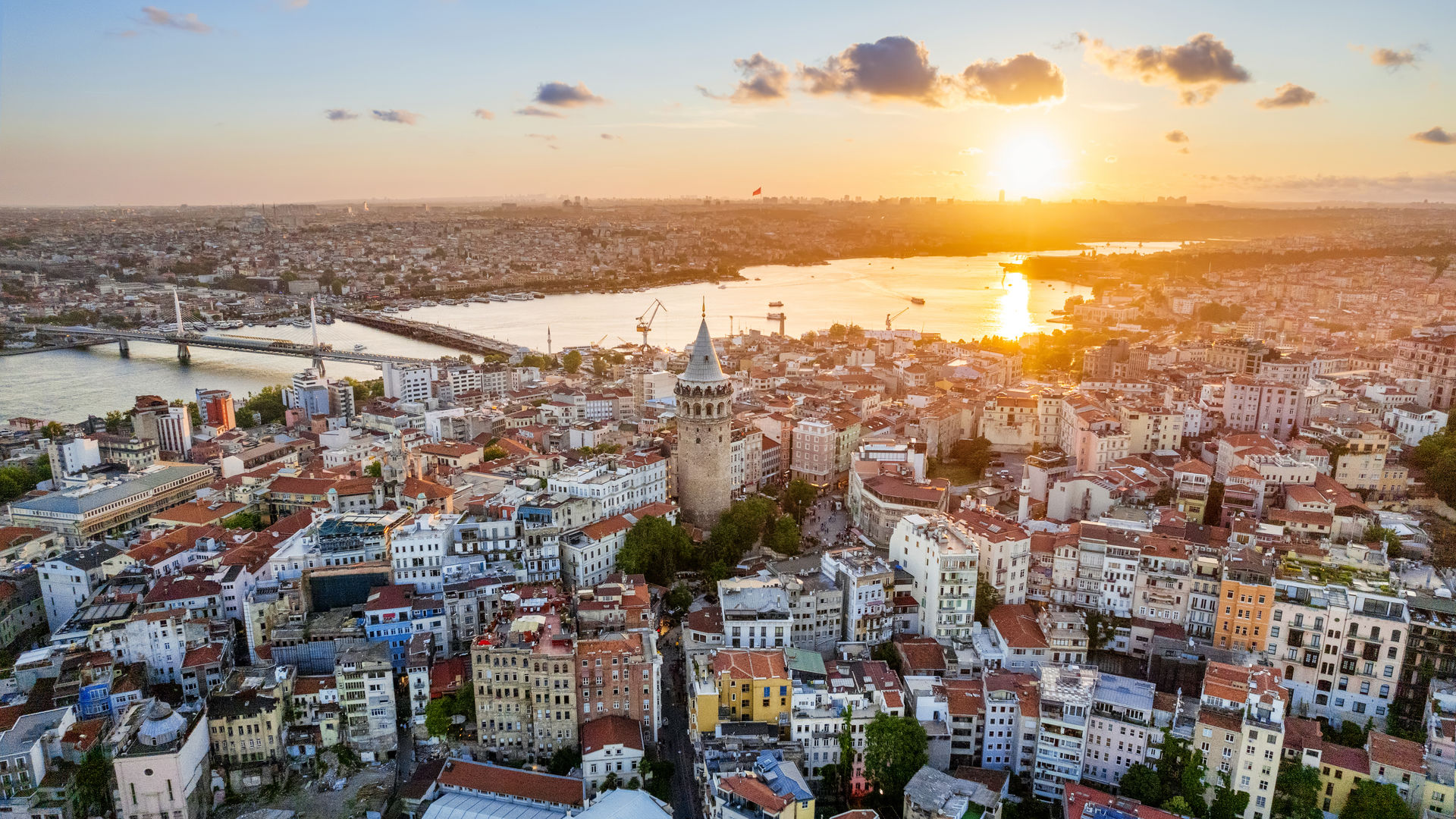
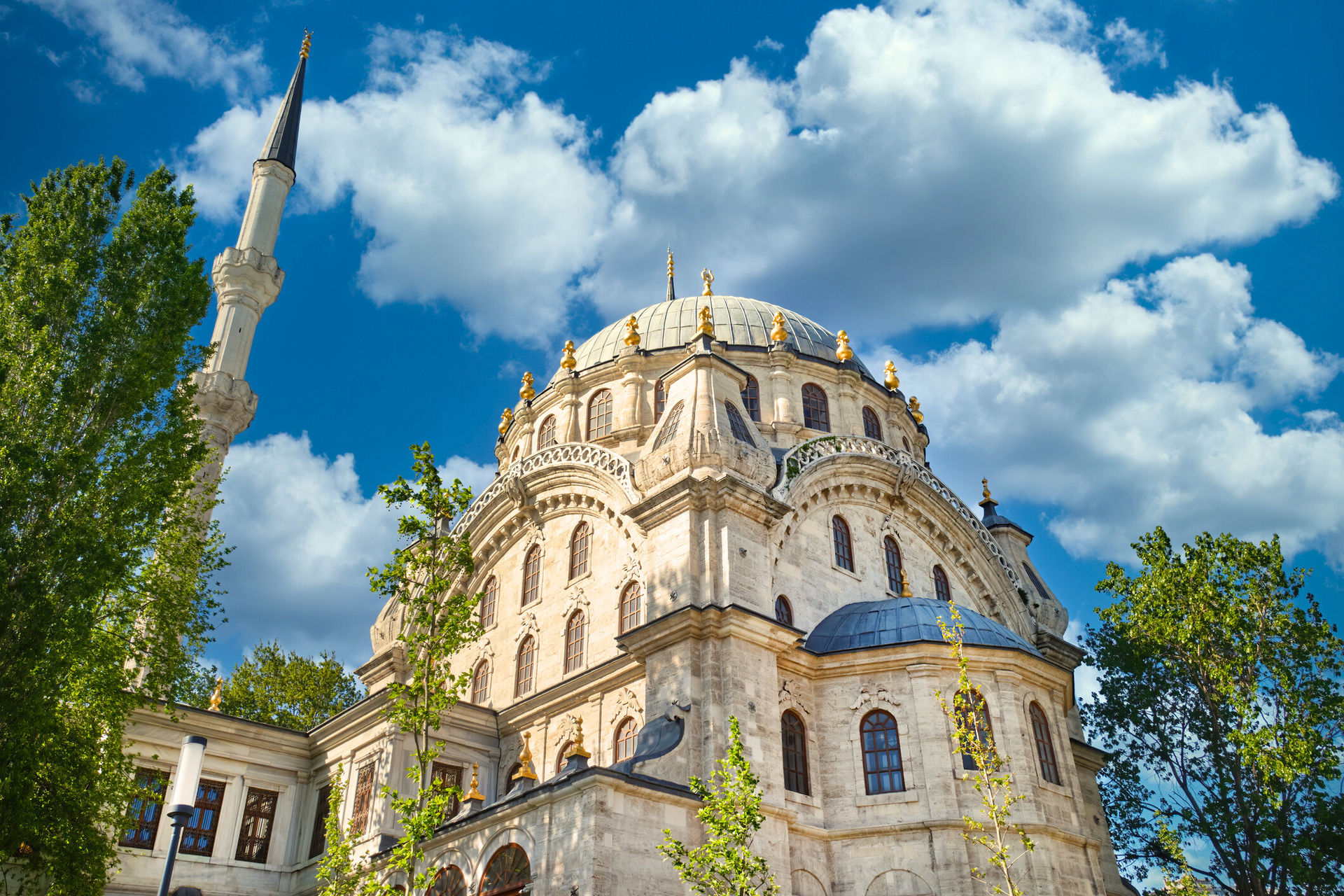
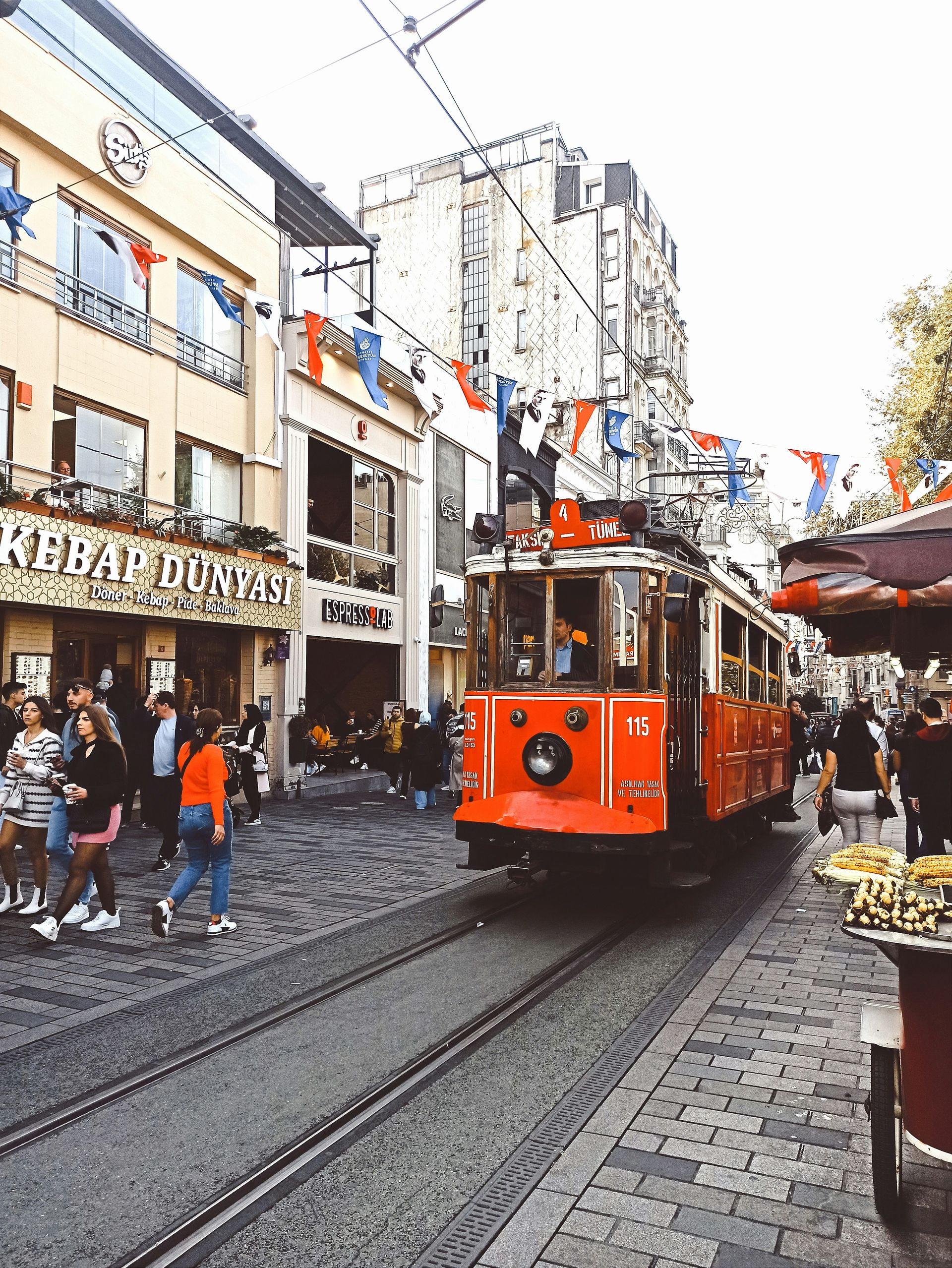





The Galata Tower, as one of Istanbul's iconic structures, creates a striking silhouette on the opposite shore of the Bosphorus, adding a unique atmosphere to the city's landscape, especially at night. The first tower on this site was constructed in 528 by Emperor Justinian, but the robust tower we see today was built by the Genoese between 1348-1349. Standing at 69.9 meters tall, the tower has historically served as a maritime observation post, a fire watch point, and a prison. Climbing the tower offers a breathtaking panorama of Istanbul; the beauty of the Bosphorus, the Golden Horn, and the majestic silhouette of the Historical Peninsula. Following its restoration in 2020, the tower reopened to visitors as a museum.
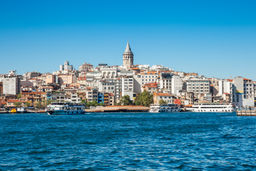
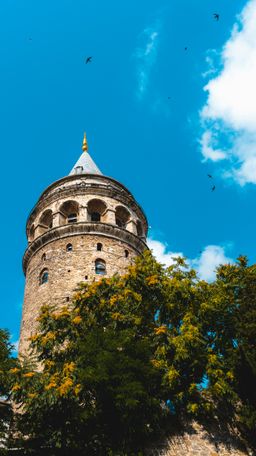
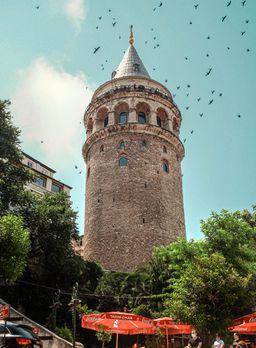
Ascending from Galata, discovering Beyoğlu along İstiklal Avenue is like feeling the pulse of the city. Upon reaching Taksim Square, you sense the heart of the city. İstiklal, one of Turkey's most famous and bustling streets, is a vibrant destination for both locals and foreign visitors alike. Filled with shops, boutiques, cafes, restaurants, bars, and galleries, the avenue attracts a wide audience, from fashion followers and art enthusiasts to night owls and history buffs. It's not just the main street that's intriguing; diving into its side streets opens up a sort of time tunnel before you.

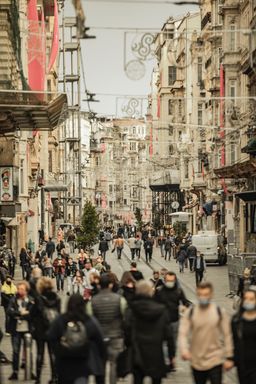
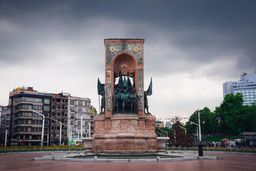
The Kılıç Ali Pasha Mosque, located directly opposite the Tophane tram stop, was commissioned by the Chief Admiral Kılıç Ali Pasha to Mimar Sinan in 1580. It is rumored that Kılıç Ali Pasha had the mosque built on reclaimed land from the sea, in response to bureaucrats who opposed granting him the land, quipping, "The seas are yours, what business do you have on land?" The work was largely inspired by the Hagia Sophia and was designed by Mimar Sinan, who was approaching the age of ninety at the time.
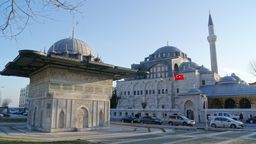
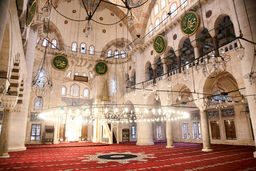
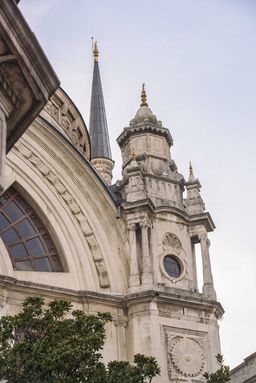
Within the scope of the Galataport project, the Istanbul Museum of Modern Art, now in its new building, invites visitors to explore contemporary art against the backdrop of a magnificent Istanbul view. Opened in 2004, the museum brings art enthusiasts together with its rich collection and striking exhibitions. For 14 years, the museum continued its activities in its original home at Antrepo No. 4 in Tophane. It moved to its renovated building, designed by Renzo Piano, in 2023 as part of the Galataport Project.

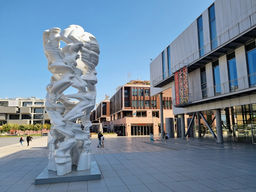
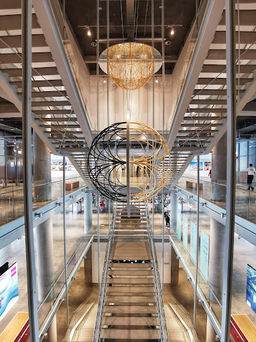
The original foundry was commissioned by Fatih Sultan Mehmed in the 15th century and expanded during the reign of his son, Sultan Bayezid II. The multi-domed structure you see today was completed during the reign of Sultan Selim III in 1803. Today, the building is affiliated with Mimar Sinan University and is used as an exhibition hall and for events. The two small cannon reliefs you'll see at the top of the building symbolize its history.
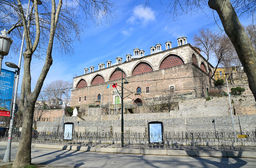
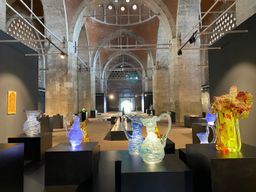
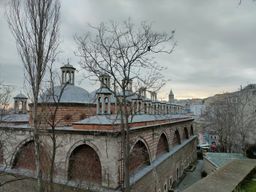
Galataport
Galataport, the last stop of our tour, is one of the points that best reflects the dynamic and colorful spirit of Istanbul. Here, you will enjoy your wonderful tour and leave with unforgettable memories.
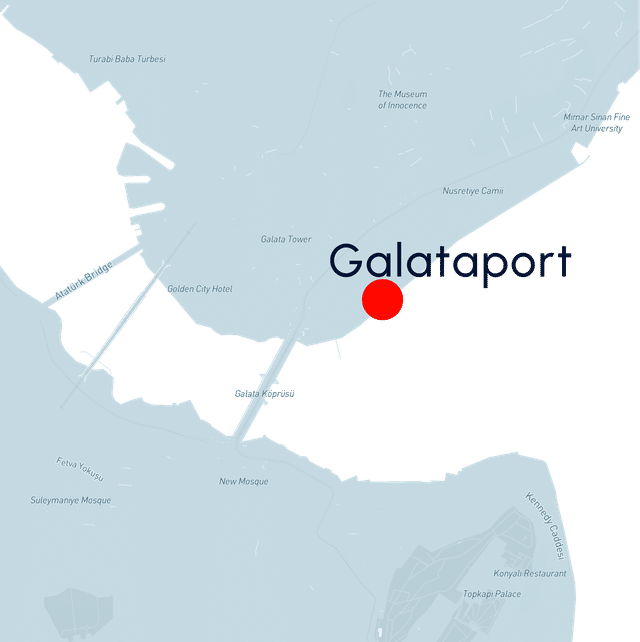
Answered